
Leeds Castle, C18
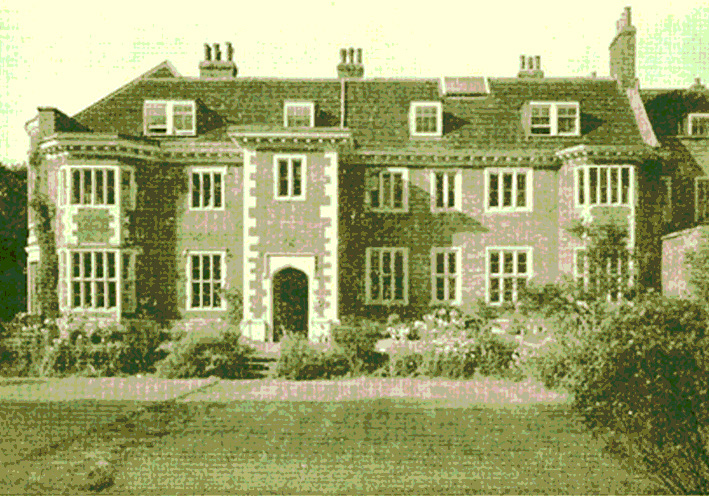 Acrise Place
Acrise Place
Like Tudeley in West Kent, Acrise near Folkestone is a blink-and-you’ll-miss-it hamlet that nevertheless possesses some architectural interest, most prominently in the form of Acrise Place. Its name is not that of some Norman invader but a corruption of ‘oak rise’, a name befitting the local terrain. The original north-facing house was built in the C16, expanded with a second range back-to-back in the C17, and reworked in the C18. In 1666, it was acquired by the merchant Thomas Papillon, a Dover MP who was active in national politics after the Restoration. It remained in his family until 1850 before passing through other private hands. In WW2, while occupied by the Army, it witnessed in its grounds the fatal crash of a Hurricane whose pilot was attempting to destroy a doodlebug. It was purchased by developers in 1986, who converted the two ranges into Acrise Place and Acrise Court, and sold off the outbuildings as more residences.
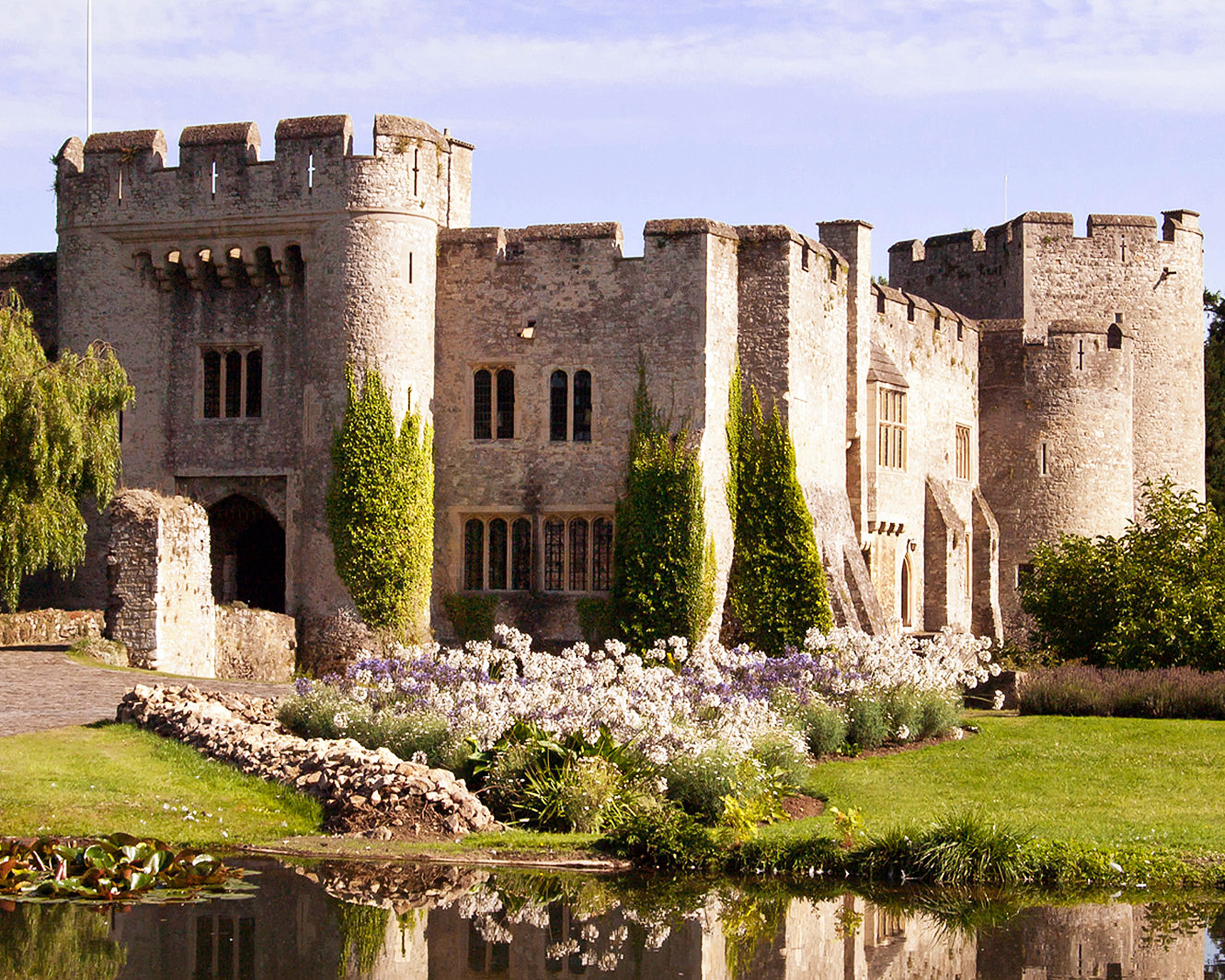 Allington Castle
Allington Castle
The original occupant of the bend in the River Medway one mile north of Maidstone was a so-called adulterine castle, built without royal approval during the C12 Anarchy. It was torn down and briefly replaced by a manor house before the Lord Warden of the Cinque Ports commissioned today’s castle at the end of the C13. In 1492 it famously fell into the possession of the Wyatts, the rebellion against Bloody Mary being hatched there in 1554. After Sir Thomas Wyatt’s execution, it suffered centuries of decay, not to mention two serious fires. But for the intervention of locals, it would have been demolished. Eventually, in 1905, it was purchased by Lord Conway, who spent 30 years restoring it. The Castle was sold in 1950 to the Carmelite Friars of Aylesford Priory, and remained a religious establishment until 1999. It is now home to the American-born founder of MORI and TV pundit, Sir Robert Worcester.
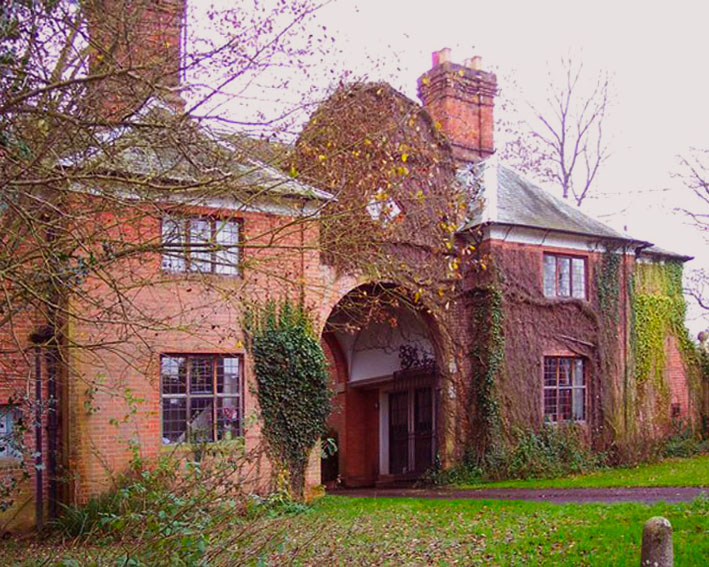 Angley Park
Angley Park
Angley House, just south of Cranbrook, must once have been a special place to live or visit. It dated back to the Norman era, when a manor was granted to the Abbot of Battle by William I himself; its ownership remained unchanged until the Dissolution of the Monasteries. In the C18, it was said to have a chalybeate spring, and trees surviving from the Andredes Weald. In the early C19, it was upgraded to Regency style, and by mid-century boasted gardens, a lawn, a shrubbery, walks, an orchard, a nursery, fish ponds, and a lake, all inside a beautiful park. After that, however, it went sharply downhill. It was replaced around 1870 by a Victorian edifice of little architectural merit, which in turn gave way in 1931 to a smaller house set in 35 acres; the rest of the 825-acre estate was sold off in 43 lots. Fortunately, the delightful Angley Wood nearby is still open to the public.
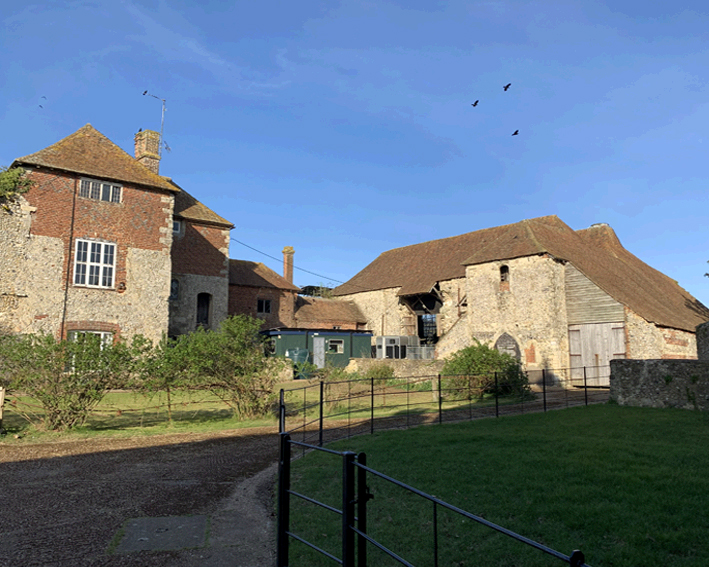 Archbishop’s Palace, Charing
Archbishop’s Palace, Charing
Though the heritage site in Charing has its origins in the C8, construction of the present palace started in the late C13, and it was substantially rebuilt 200 years later. The Church would eventually own many such palaces, serving as short-term residences for the Archbishop on his travels between Canterbury and London; Charing’s was the first. Its finest hour arrived in 1520, when King Henry VIII and his wife Catherine of Aragon stayed on their way to meet King Francis I of France at the Field of the Cloth of Gold, in an effort to make warfare history. The locals must have been overwhelmed when the King’s retinue of five thousand turned up on their doorstep. He later confiscated the palace during the Dissolution of the Monasteries; it was leased and then sold to gentleman farmers, under whom it deteriorated badly. Efforts to purchase and restore it as a public utility have stalled.
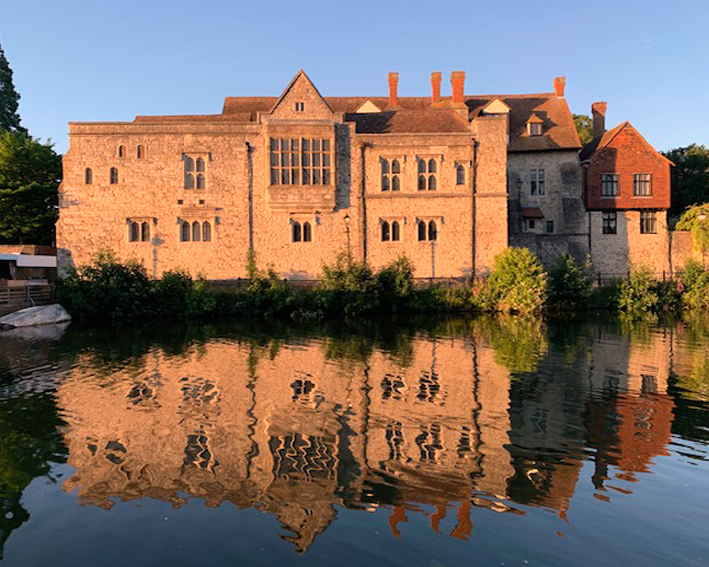 Archbishop’s Palace, Maidstone
Archbishop’s Palace, Maidstone
The east bank of the Medway next to the confluence of the Len, near the centre of Maidstone, is one of the best pieces of real estate in Kent. No wonder that an episcopal manor stood there even in Anglo-Saxon times. The much grander Archbishop’s Palace that superseded it was ordered by Archbishop Ufford in 1348 as a convenient stopover. The palace was expanded in the following century, by which time the Tithe Barn, All Saints Church and the College had been added to the east and south-east. After the Reformation, its purpose became purely secular. Henry VIII gifted it to Sir Thomas Wyatt the Elder, but his daughter Mary I confiscated it following the rebellion led by Wyatt’s son. After passing to the Astley family in the C17 and the Marshams in the C18, it devolved to a Territorial Army medical school and ultimately, under the management of Kent County Council, a registry office.
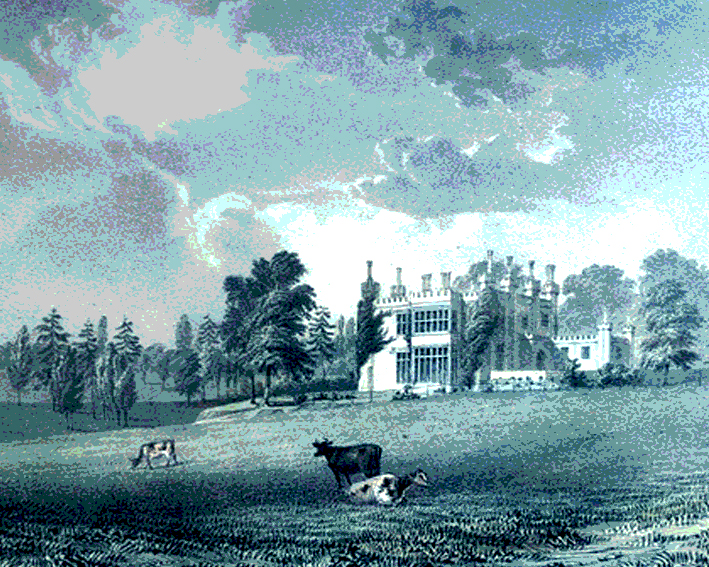 Ashurst Park
Ashurst Park
Ashurst, near the Sussex border west of Tunbridge Wells, first appeared in records as one of scores of manors granted by William I to Geoffrey de Peverell in reward for his contribution to suppressing their new English vassals, notably with castle-building. Over the centuries, it passed through numerous hands, until in the C16 it was occupied by the dramatist Thomas Sackville, Earl of Dorset. Although a number of random buildings stood there in the early C19, it was not until the 1820s that William Fowler-Jones bought land there to build the basis of today’s impressive stucco house. Subsequently much expanded, it was sequestrated by the armed forces in WW2 before becoming home to Wykeham Cornwallis from Linton Place, who died there in 1982. It was briefly a rest home, Fernchase Manor, but returned to its former name and use under new private ownership. Having received an extravagant makeover, it was recently on the market for £10,000,000.
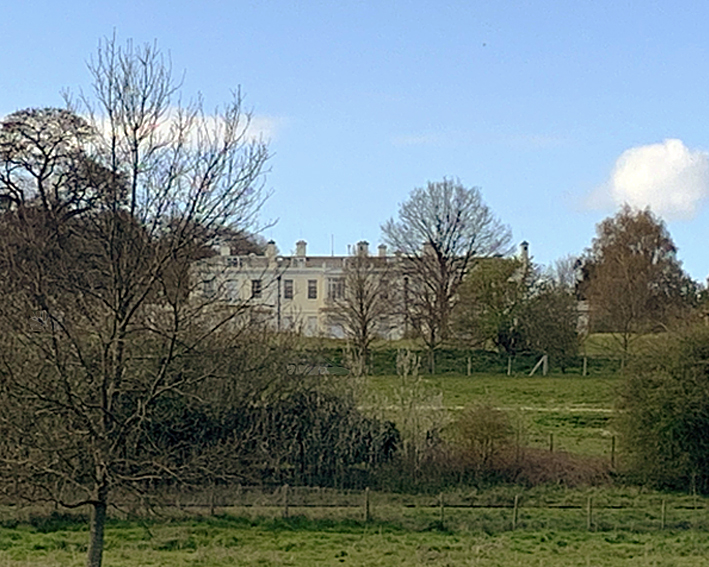 Barham Court, Teston
Barham Court, Teston
Although one of Kent‘s lesser known stately homes, Teston’s Barham Court has a lot of history. The house on the estate in the C12 was owned by Sir Reginald FitzUrse, who legendarily fled to Ireland after leading the assassination of Thomas Becket. His kinsman Robert de Bereham, from Barham near Canterbury, subsequently took over the property. It was acquired four centuries later by the Boteler family, who in the C17 supported the Stuart monarchy. The 1st Baronet of Barham Court, William Boteler, was jailed for supporting the Kentish Petition of 1642, and killed in battle two years later; the house was meanwhile ransacked. It was acquired in the C18 by Charles Middleton, 1st Baron Barham, and became the headquarters of the Testonites, the anti-slavery lobby that regularly welcomed William Wilberforce as a guest. The house was used as a military hospital during WW1, and suffered a serious fire in 1932. It is now given over to commercial and residential properties.
 Bayham Hall
Bayham Hall
The story of Bayham Hall begins in 1714, when the estate belonging to the long-ruined Bayham Old Abbey was sold to the Lord Chief Justice Sir John Pratt, whose younger son Charles became the 1st Earl Camden. The living quarters at the time were on the site of the current Dower House, which was soon expanded and glorified. In 1799, the 2nd Earl Camden had plans drawn up for a much grander house with a lake. The lake was built, but nothing done about the house until 1870, when the 3rd Marquess Camden erected today’s grand construction up the hill half a mile to the north-east, together with formal gardens. In 1961, the 5th Marquess released the Abbey ruins to the state, and in the 1970s Bayham Hall and 40 acres were sold off. An internet entrepreneur, Justin Cooke, bought the Hall in 2002, and his wife refurbished the interior. One wing is now commercially available for film productions.
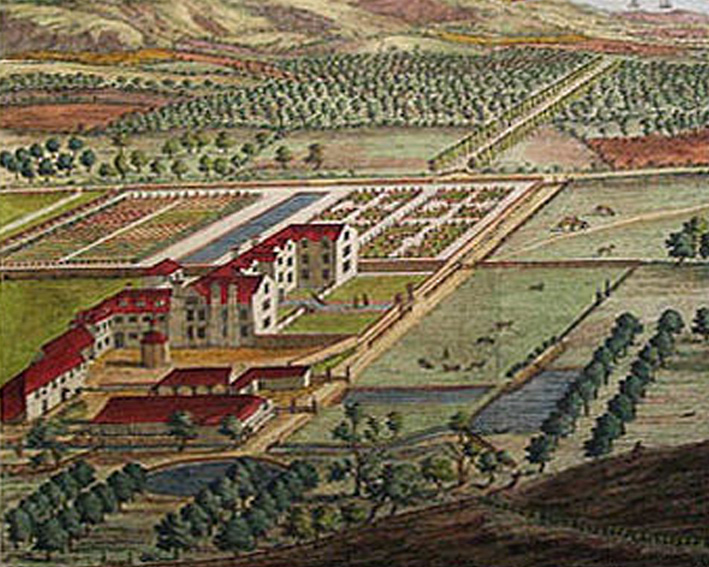 Beachborough Manor
Beachborough Manor
The Beachborough estate north-west of Folkestone was once one of the largest in Kent, enjoying expansive pasture and ornate gardens. The Manor was occupied for generations by the Brockman family, whose most notable scion was the Sir William Brockman who marshalled Royalist troops in the defence of Maidstone against the Roundhead general Fairfax in 1648. The current Georgian house, surrounded by Beachborough Park, was built in 1813. David Lloyd George lived there in the early part of the C20, and it was made available to the Canadians during WW2 as a military hospital conveniently situated near the Channel coast. The estate is now the residence of the Wallis family, of whom the paterfamilias Gordon Wallis is a noted former football-club chairman and collector of sporting memorabilia. Being located five minutes’ drive from the Eurotunnel terminal that opened in 1994, it also offers handy bed-and-breakfast accommodation.
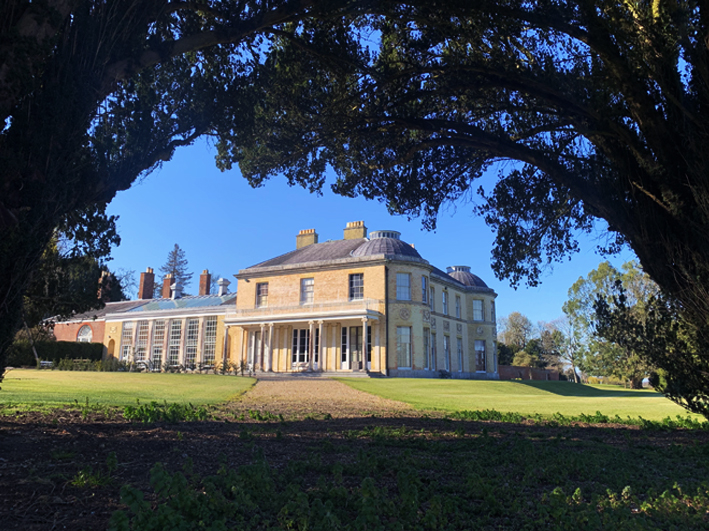 Belmont House
Belmont House
The original house was built on a greenfield site at Throwley in the 1770s. It was expanded two decades later by new owner Captain John Montresor, who had retired from the Army after serving in the American Revolutionary War. Montresor was jailed for fraud, however, and Belmont was confiscated by the state. His loss was the nation’s gain in more ways than one. The estate was bought at auction in 1801 by General George Harris, who 14 years later became the 1st Baron Harris of Belmont. He founded a distinguished dynasty: the 3rd Lord Harris would create the united Kent County Cricket Club in 1870, the 4th would be Governor of Bombay and captain of England, and the 5th founded the Antiquarian Horological Society. It was the last who left the most striking reminder of his tenure, a magnificent collection of 340 clocks. The house and grounds, now in the hands of a trust, are open to the public.
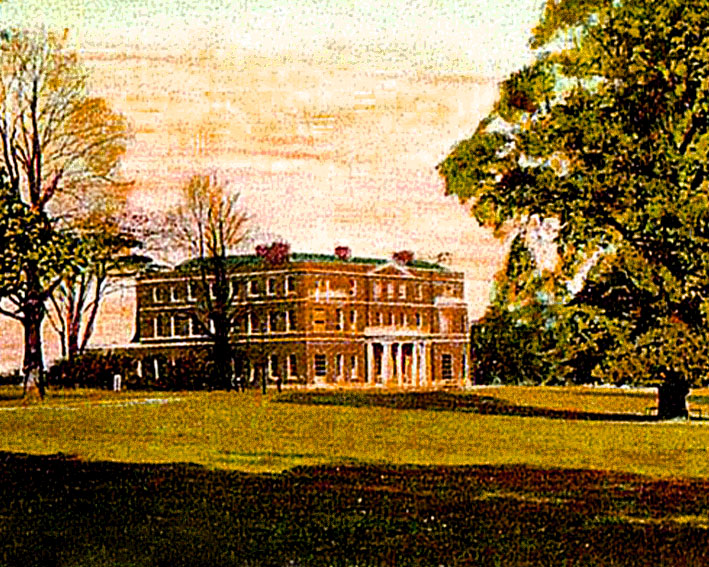 Belvidere
Belvidere
Belvedere, meaning ‘beautiful view’, is a curious name for the urban sprawl north-west of Erith. It derives from a house called Belvidere that could truthfully make that boast both inside and out. Built in the early C18, it was bought in the 1750s by banker Sampson Gideon, who rebuilt it as a grand brick affair with an impressive stone portico. On the inside was an extraordinary display of artworks, including busts of Dryden, Milton, and Shakespeare, and a collection of paintings of the highest quality. In the Blue Drawing-Room alone hung works by Brueghel, Rubens, Veronese, and da Vinci, among many others, while in the dining-room was a self-portrait by Rembrandt along with two Canalettos. The surrounding estate was richly wooded and adorned with well-manicured gardens, presenting a fine view of the Thames. The house was converted from 1865 to a merchant seamen’s retirement home, but demolished in 1958 for residential development. Only the Frank’s Park woodland survives.
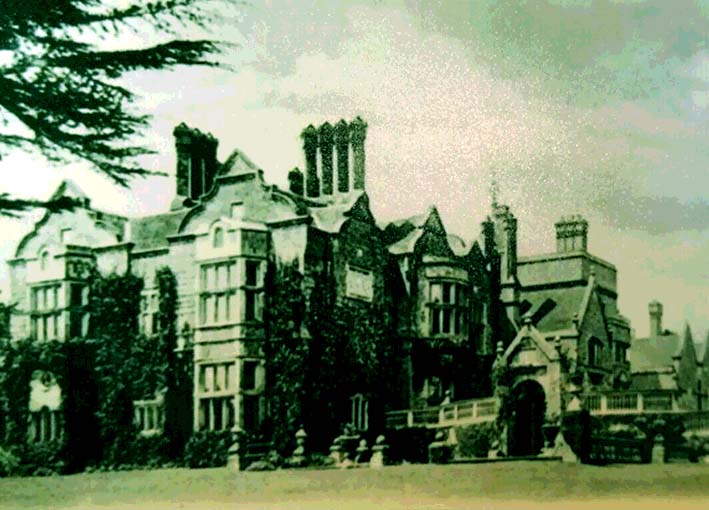 Betteshanger Park
Betteshanger Park
Nowadays, Betteshanger House west of Deal is home to a prestigious pre-prep boarding school called Northbourne Park. The impressive building that houses its nearly 200 pupils was preceded by a much humbler villa built by Robert Lugar in 1829 for Frederick Morrice. In 1850, Sir Walter James, the 1st Lord Northbourne, bought the 80-acre estate and had Anthony Salvin (of Scotney Castle fame) perform alterations. After serving as Sheriff of Kent in 1855, Northbourne commissioned architect George Devey to transform it into the sort of towering, expansive L-shaped affair it is now – a process that took him 30 years. Betteshanger underwent a dramatic transformation in the late 1920s with the arrival of the Kent Coalfield, at which point it declined from rural village to pit town. When Northbourne’s grandson, the 3rd Baron, died in 1932, his son and daughter-in-law decided not to stay, but let the house to the new prep school.
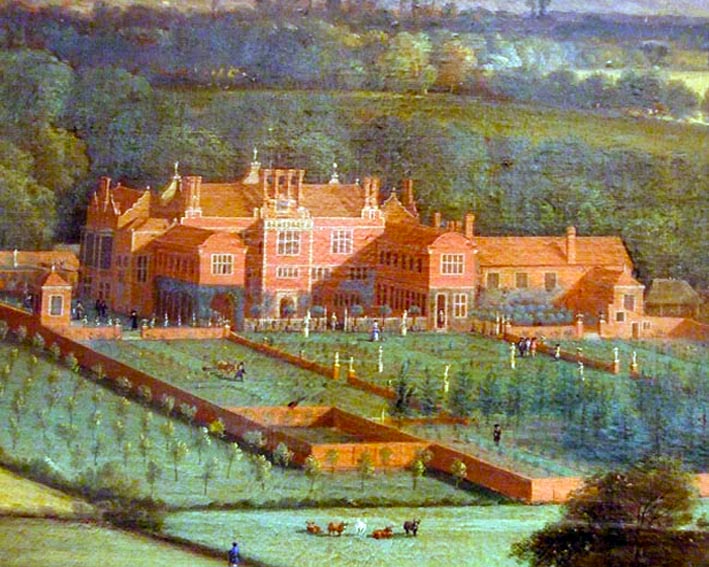 Bifrons
Bifrons
Derived from the Roman god Janus, Bifrons was a two-faced monster in demonology, ‘bifrons’ being the Latin for two-faced; but the name of Bifrons Place in Patrixbourne simply alluded to the sprawling house’s two very different facades. It was built by 1611 for John Bargrave, a staunch Royalist, sold by his grandson in 1662, and purchased in 1694 by Sandwich MP John Taylor, whose grandson Edward replaced it with a much simpler neoclassical contruction. After driving past Bifrons in 1796, Jane Austen recalled having “doated” on Edward’s son. In 1830, George IV bought it for his final mistress Marchioness Conyngham, who lived there until she died at 91 in 1861. It remained in her family but, like many grand houses, was occupied by the military during WW2, and fell into such disrepair that the family demolished it in 1948. Bifrons’ name now graces only a hill and an unprepossessing housing development.
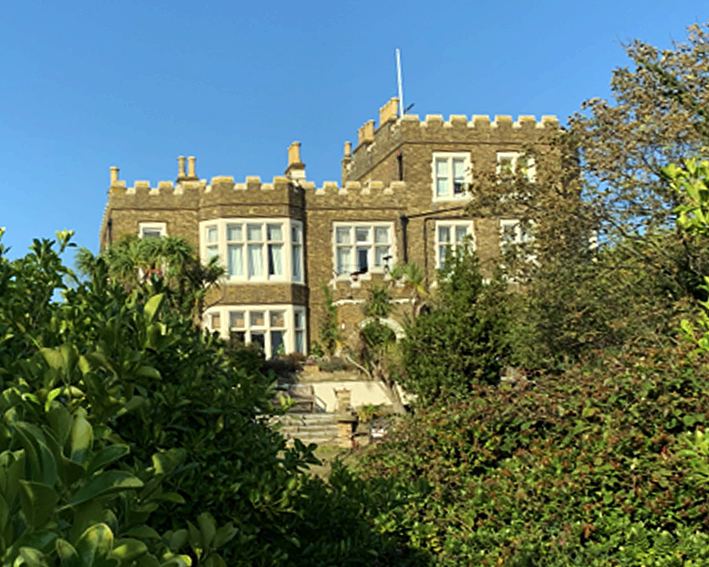 Bleak House
Bleak House
Fort House in Broadstairs was built at the turn of the C19, shortly before the Napoleonic Wars, and doubled in size a hundred years later. This four-storey construction, which still dominates the promontory at the northern end of Viking Bay, was home to the captain of the defensive fort at that location. It became Charles Dickens’ preferred choice for holidays in his thirties, and it was there that he wrote ‘David Copperfield’ in the late 1840s. It certainly was not the inspiration for ‘Bleak House’, which was set in St Albans; but the fact that the novel of that name was his next perhaps inspired locals to refer to Fort House as ‘Bleak House’ in jest. The name stuck. Though still a domestic residence, the property long housed a museum on the lower ground floor, and the bed-and-breakfast offering was popular with Dickens fans going to soak up the Victorian atmosphere.
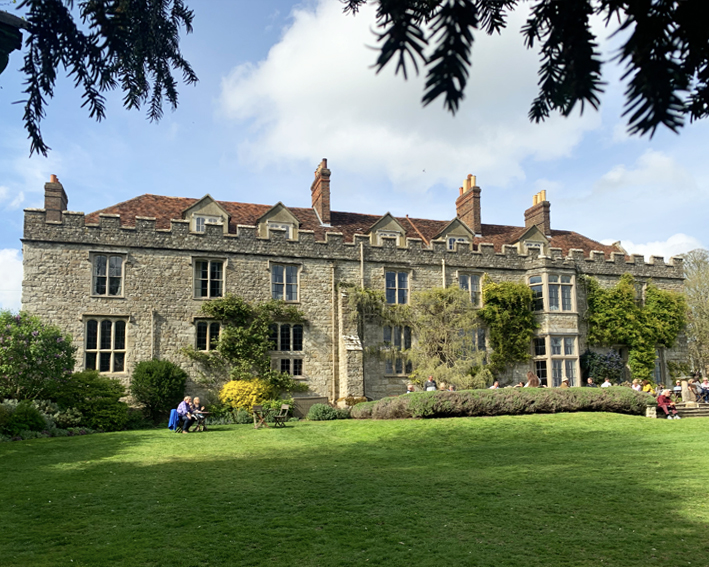 Boughton Monchelsea Place
Boughton Monchelsea Place
A manor house stood next to Boughton Monchelsea church as early as 1214. It passed through numerous hands before being bought by Sir Thomas Wyatt of Allington Castle. Wyatt’s son, the famous rebel, sold it to a fellow conspirator, Robert Rudston, from whom it was sequestrated by Queen Mary after the revolt. Queen Elizabeth I restored it to him, however, and around 1570 he constructed what would become the basis of the present building. After the death of Rudston’s sons, the house was acquired by Maidstone MP Sir Francis Barnham in 1613. For nearly three centuries it passed by inheritance through generations of the Burnhams and then, by marriage, to the Riders, who together supplied a number of other local MPs. From 1903 it was occupied by the Winch family, who sold it in 1998 to the current owners, the Kendricks. It is occasionally open for special events, when visitors can enjoy its stupendous views across the deer park.
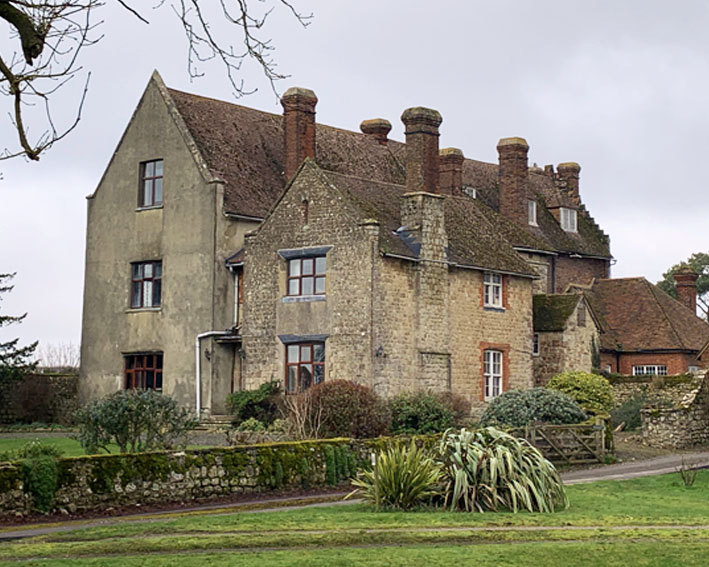 Boughton Place
Boughton Place
The former Bocton Hall is strategically placed next to St Nicholas’s Church at the top of the hill in Boughton Malherbe, commanding fine views all around. There was a fortified manor on the site as from the 1340s, which passed by marriage into the possession of Nicholas Wotton, twice Lord Mayor of London. In 1568 it was the birthplace of diplomat and politician Sir Henry Wotton. Much of the manor was demolished and replaced by the current structure in the C16, with further alterations in the C19. Between 1683 and 1750 it was owned by a succession of Earls of Chesterfield, but was then bought by Galfridus Mann, whose son Sir Horatio Mann would also inherit a rather grander home, Linton Hall. Catherine Mann’s marriage to James Cornwallis left both houses in the possession of the Earls Cornwallis until Boughton Place was sold in 1922. It is still privately owned.
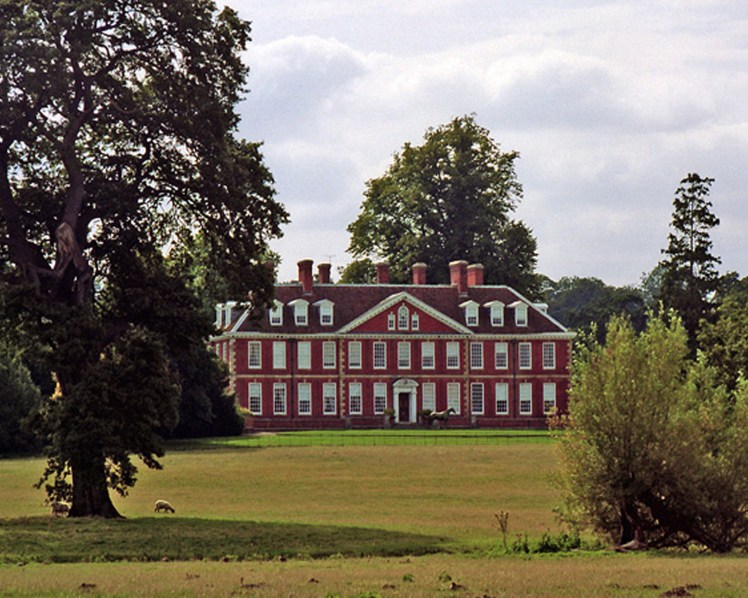 Bourne Place
Bourne Place
Now known as Bourne Park House, Bourne Place was built in 1701 halfway between Bridge and Bishopsbourne. The widow of Royalist Sir Anthony Aucher had a new red-brick mansion constructed for her young son, Sir Hewitt, to replace their dilapidated current home. Her descendants sold it in 1844 to Matthew Bell, who leased it to, among others, Sir Horatio Mann of Boughton Place. In 1765, Mann invited Leopold Mozart and his family to stay for a week. An avid cricketer, he also constructed Bourne Paddock in the grounds, where he staged top-rank cricket matches over a period of a quarter-century. The house and its 57-acre estate passed through several pairs of hands thereafter, suffering long periods of neglect. The current owner, the aristocratic mother-in-law of Jacob Rees-Mogg, owns the priceless Fitzwilliam Art Collection, little of which is ever released for exhibition. The residual nine acres of gardens, incidentally, contain one of several ‘icehouses’ in Kent, the C18 predecessor of a freezer.
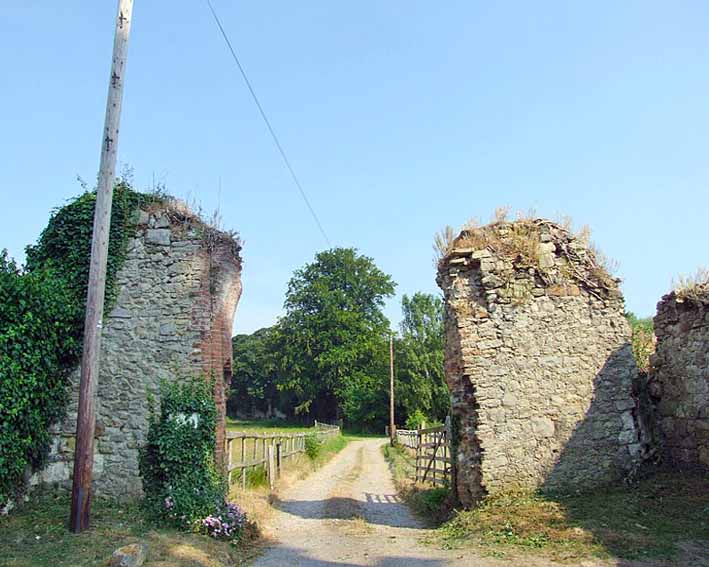 Boxley Manor
Boxley Manor
During the Anarchy (1139-54), King Stephen employed the military services of the mercenary William of Ypres, who was granted custodianship of all Kent from 1141 until 1157, early in the reign of Henry II. He built an abbey at Boxley in 1146 that was occupied by Cistercian monks from south-east of Paris; it survived until the Dissolution of the Monasteries in 1537. In the meantime, it earned a reputation for extraordinary venality, making money not only out of the dodgy St Rumwold effigy and Rood of Grace, but also a supposed finger of St Andrew that was pawned off for £11 when worshippers stopped coming to see it. In 1540, Henry VIII gifted the abbey to Sir Thomas Wyatt the Elder, whose descendants continued to live in the still habitable part of the building. Not much survives today, apart from a splendid barn (the former hostel) and its poignantly ruined gates on Tyland Lane.
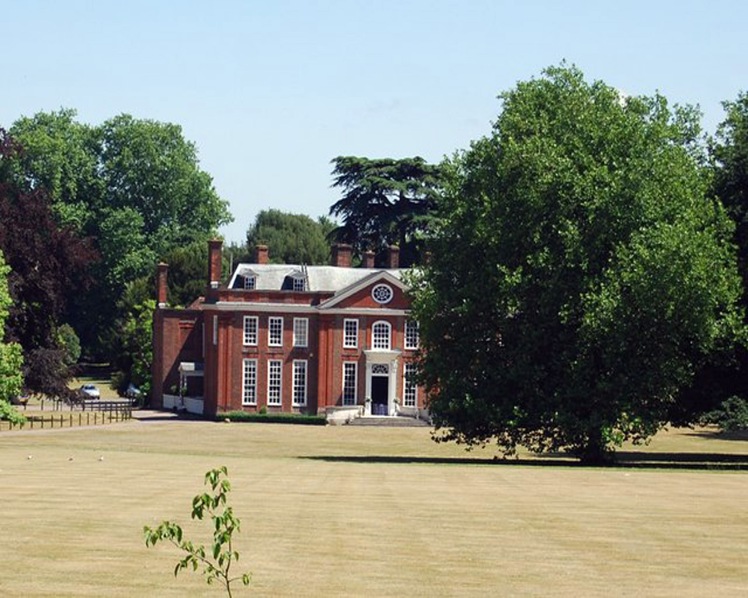 Bradbourne House
Bradbourne House
The waterside site just north of East Malling was occupied as early as Roman times. The Tudor house built there was substantial, and may have been moated. It was sold around 1656 to a prominent judge, Thomas Twisden, who was later knighted. He expanded the estate to create Bradbourne Park, and his son had the road diverted away from the house. From 1712 to 1715, another Sir Thomas Twisden built the current house, incorporating some features of the original. Although further improvements were made over the next hundred years, the Twisdens neglected it thereafter. When the last of the line, Sir John Twisden, died in 1937, the property was sold to the body from which the East Malling Trust for Horticultural Research was derived, serving as an administrative centre for the adjacent East Malling Research Station. Considerable money and effort have since been spent on restoring the house, which can now be hired for special events.
 Bridge Place
Bridge Place
Around 1638, a large house was built at Bridge on the site of a medieval manor. The owner, Arnold Braemes (1602-81) from Dover, was an uninhibited socialite, and had the house constructed on such a magnificent scale that in East Kent it was the second only to Chilham Castle. It attracted numerous personalities, and was painted by more than one Dutch artist. Knighted by the future king as he was returning from exile in France in 1660, Sir Arnold lived well beyond his means, and his heirs were obliged to sell the house in 1704 to John Taylor, owner of neighbouring Bifrons. For reasons unknown, but possibly out of spite, he had the majority torn down, leaving just one admittedly spacious wing. Restored after WW2, it enjoyed a renaissance in the 1960s as a music venue that hosted the likes of the Kinks, Led Zeppelin, and Manfred Mann. Since 2019, it has been a boutique hotel.
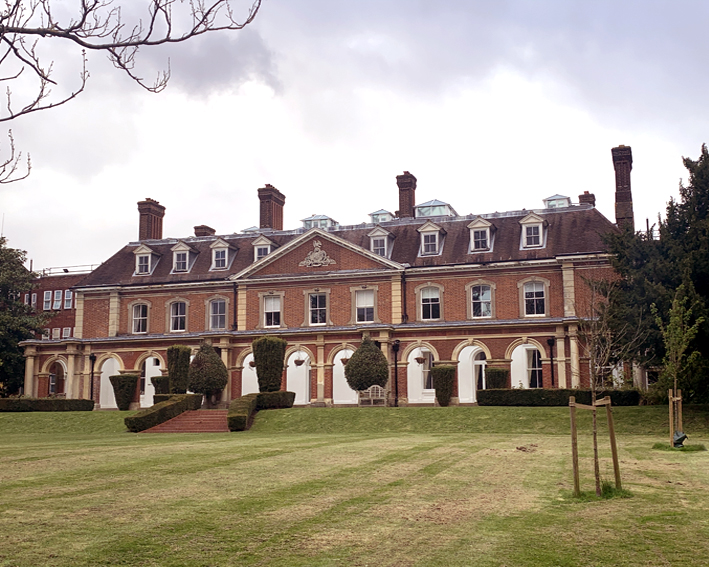 Bromley Palace
Bromley Palace
As early as the C8, Aethelberht II of Kent granted land in Bromley to the Bishop of Rochester, to which further additions were made in later centuries by both gift and sale. After Odo had failed to appropriate the estate in the wake of the Norman Conquest, a manor house was built for the bishopric, the land being little good for farming. It must have been meagre, because it was rebuilt on a grander scale within decades. The estate was confiscated and sold during the Civil War, but restored to the bishopric in 1660, and entirely replaced in 1774. It was finally sold in 1845 to a baronet, Coles Child, whose family made repeated improvements. After WW1, it became a school, and then a college. Finally, in 1980, the council moved in and turned it into Bromley Civic Centre. The grounds, though now much diminished, still contain a lake, artificial rockeries, and even a folly.
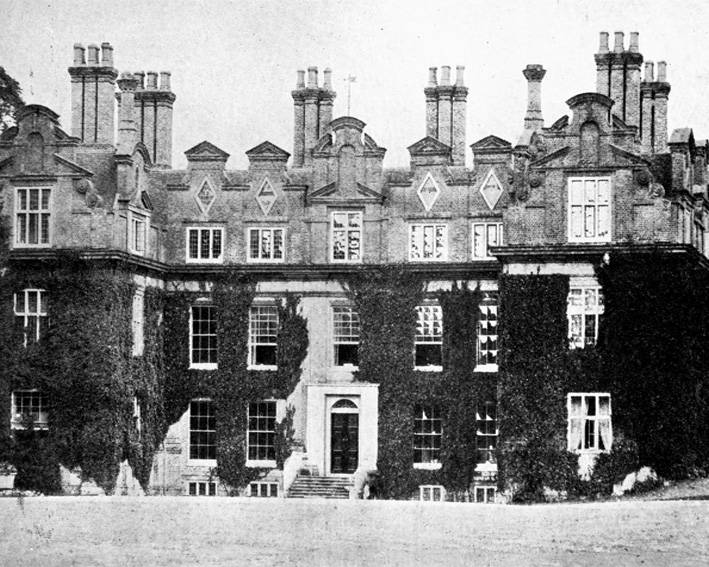 Broome Park
Broome Park
The MP for Hythe, Sir Basil Dixwell, had the house built in 1635 off the Canterbury road in Barham. The estate remained in his family for nearly 300 years. It was sold in 1911 to Lord Kitchener of Khartoum, who undertook major works including re-laying the gardens. Thereafter, Broome Park lost its status as a private home. In the 1930s, it was converted to a hotel, in WW2 it was requisitioned for military purposes, and in the 1970s it was purchased by Gulf Shipping Lines with the aim of converting it to timeshare apartments and a leisure complex. It became the subject of a significant High Court judgement in 2018 to the effect that timeshare owners had rights to use the facilities (including tennis courts and a golf course) as easements, not just privileges. Though Kitchener would have turned in his grave to see his home put to such use, the mansion undeniably looks the classic golf clubhouse.
 Camden Place
Camden Place
A house erected in Chislehurst in 1609 by the great antiquarian William Camden was replaced a century later with another called Camden House. Charles Pratt, the future Lord High Chancellor, bought it in 1760 and upgraded it to a Georgian mansion before adopting the title ‘Baron Camden, of Camden Place, in Chislehurst, Kent’. It came to national attention in 1813, when the owners Thomson and Anne Bonar were murdered by a servant; and again in 1871, when lawyer Nathaniel Strode – who had spent years extravagantly converting it to a chateau – offered it to the newly exiled Napoleon III, his wife, and their son. The house, complete with tricolour, consequently served as a French royal palace throughout the 1870s, during which both men died. After the dowager left in 1881, it was sold to builder William Willett, who constructed two 9-hole golf courses. These were taken over in 1899 by Chislehurst Golf Club, which consequently enjoys a unique clubhouse.
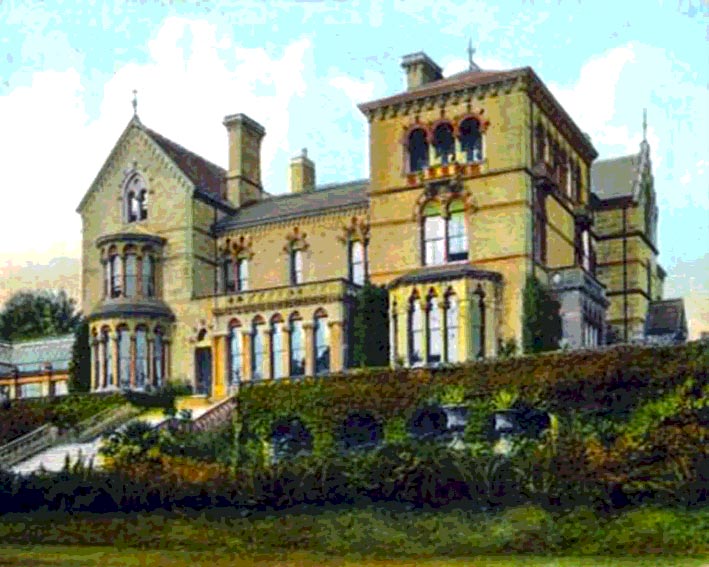 Capel Manor
Capel Manor
In 1859, John Francis Austin from Chevening, who owned Kippington House, engaged architect TH Wyatt to design an imposing house at Horsmonden. An Italianate construction, it bore the name Capel Manor. Austin contributed liberally to the design, which incorporated a huge hall, a mixture of styles, and many carvings. He died in 1893, leaving it to his much younger second wife Georgiana, who survived until 1931. It remained unoccupied until it was requisitioned in WW2 and used by various military units and the fire service. It inevitably suffered serious damage, and by 1966 had been demolished. In 1969, Tory MP John Howard sought to repurpose the winter gardens and arcade by building a compact modernist house there. Designed by future RIBA president Michael Manser, it resembled a fish-tank with an overhanging lid, although to be fair this may have been a provocative statement against classical architecture. In 2010, a second tank was added for guests.
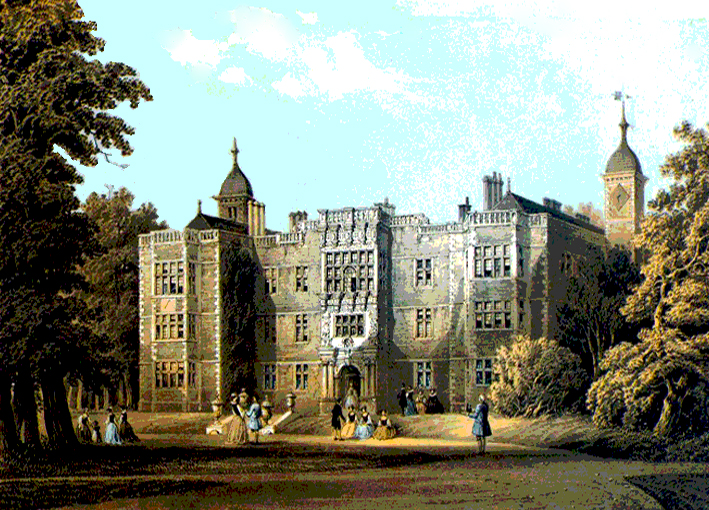 Charlton House
Charlton House
Charlton House was a product of the spending spree that James I embarked on after the crown of England fell into his lap when he was 36. Not wanting his son Henry to be raised by Queen Anne, he constructed it as a home for the boy to be occupied jointly with his guardian, Adam Newton, who had come down from Scotland. Meanwhile, she resided at Placentia Palace in Greenwich, where she had two further children who both died young. Henry himself died of smallpox at 18, after which the House was surplus to requirements. It passed through several pairs of hands until, during WW1, the last owners made it available as a first-aid hospital, and after that sold it to London County Council. It was used as a hospital and a museum before becoming a public utility. It offers the additional benefit of the park adjacent to it, and boasts possibly the oldest mulberry tree in Britain.
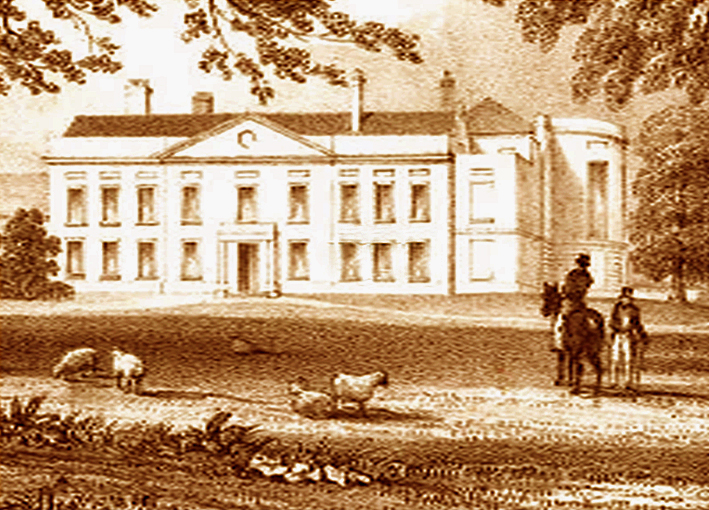 Charlton Park
Charlton Park
Charlton Park, in the Elham Valley south of Bishopsbourne, was already inhabited by 1240, but the Tudor core of the current building was not erected until around 1580. In 1636, Sir Anthony Aucher bought it from the Gibbon family. It was presumably he, a Royalist imprisoned in the Tower during the Civil War, who built the new dower house connected to the main building by a 200-yard secret passage. In 1810, the house was given its Regency façade and a splendid first-floor ballroom where George IV courted his last mistress, Elizabeth Conyngham of Patrixbourne. Commandeered in WW2, it became a Barnardo’s home before reverting to private ownership. In 1970, the Medicine Ball Caravan festival was held in the grounds, featuring Pink Floyd, The Faces, and Mott the Hoople before just 1,500 spectators. Now down to its last 129 acres, the house is actively marketed as a picturesque wedding venue. It was on the market in 2021 at £3.5 million.
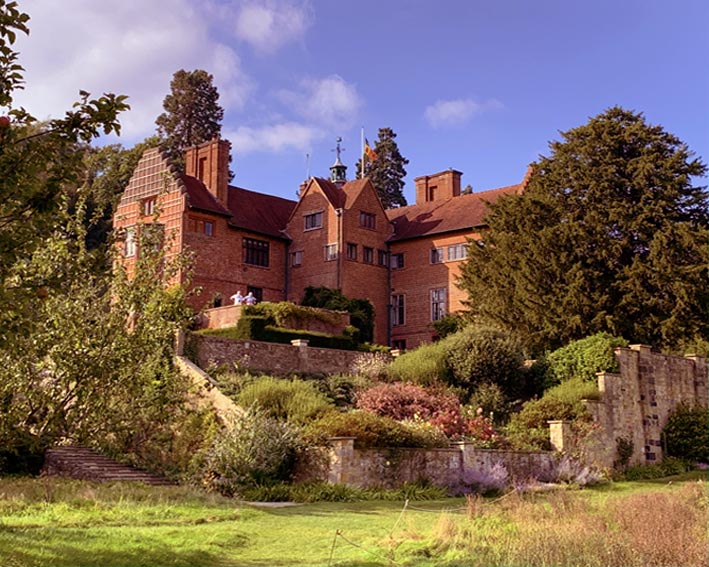 Chartwell
Chartwell
Chartwell House near Westerham would probably be unknown further afield but for the tenure of the man who won the BBC’s 2002 poll to decide the greatest Briton ever: Sir Winston Churchill. It has been described as representing “Victorian architecture at its least attractive” at the time he first saw it in 1921; but he immediately fell in love with the surroundings. After taking possession, he undertook expansive and expensive works that transformed it to its present look. He was to retain ownership for the rest of his long life. He spent little time there during WW2 because of the danger of an air-raid or commando attack, but returned either side of his second term as Prime Minister from 1951 to 1955. After his death in 1965, his widow gifted the house to the National Trust, which now makes it available for the public to view as it was between the World Wars.
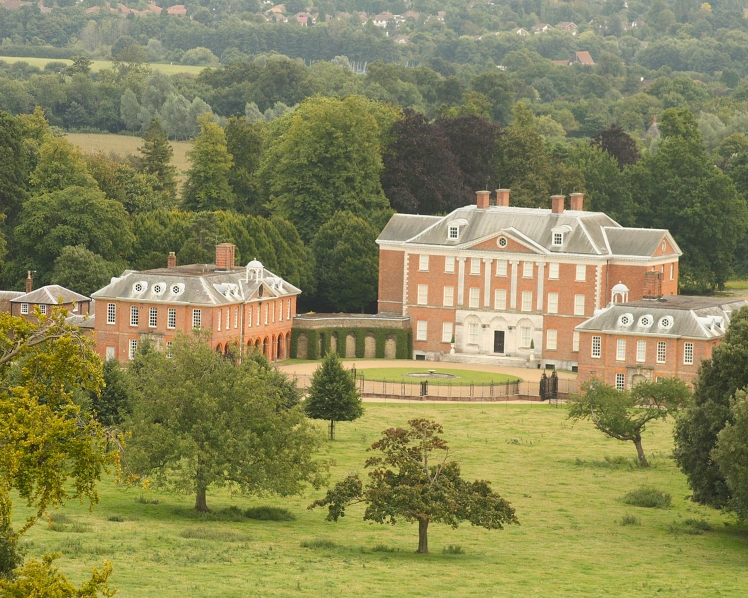 Chevening House
Chevening House
The site of Chevening near Sevenoaks originally belonged to the estate of the Archbishop’s Palace at Otford. An earlier C12 construction was superseded in the 1620s by the current three-storey house, which is thought to have been designed by Inigo Jones. In 1717, it was considerably extended by the addition of two wings. It subsequently served as the seat of the Earls of Stanhope, a branch of the Earls of Chesterfield who then owned Boughton Place. The 7th and final Earl Stanhope wanted to leave a lasting memorial to his family, which for 250 years had distinguished itself in politics and science. When he died in 1967, a Board of Trustees took over the estate, charged with restoring and maintaining it as a residence for a person, nominated by the Prime Minister, who would pay their own expenses. It is currently shared by the two most recent Foreign Secretaries, Dominic Raab and Liz Truss.
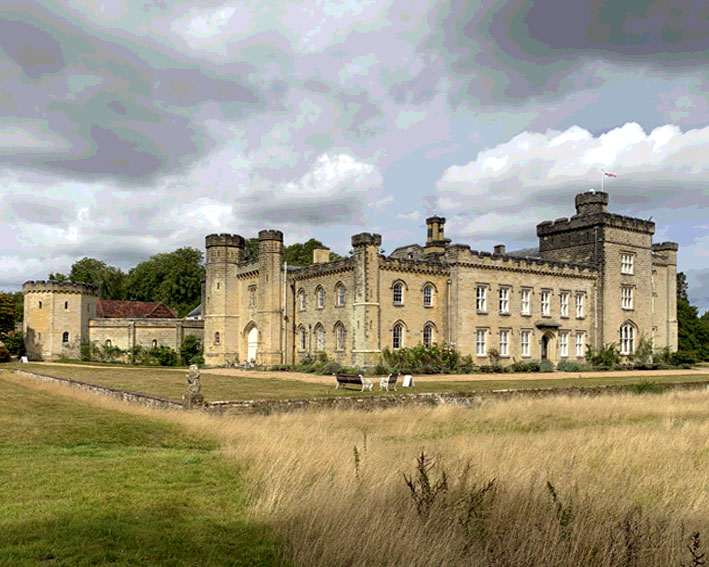 Chiddingstone Castle
Chiddingstone Castle
Despite being sandwiched between two delights – Hever Castle and Penshurst Place – Chiddingstone Castle should not be overlooked. For nearly 400 years, the estate belonged to the Streatfeild family, who in 1679 converted the original timber-framed manor to a red-brick construction known as ‘High Street House’ because it sat on Chiddingstone‘s main thoroughfare. In the early C19, it was completely rebuilt as today’s Gothic castle, and the actual High Street was expediently removed from it. Lord Astor bought the estate in 1938, but it served as a Canadian military base in WW2 before becoming a school. It was finally bought in 1955 by the eccentric antiques collector Denys Bower, who in 1977 bequeathed it to the nation as a museum to house his intriguing collections, now under the management of the Denys Eyre Bower Bequest. No visit is complete without making the short walk to the lovely lily-covered lake.
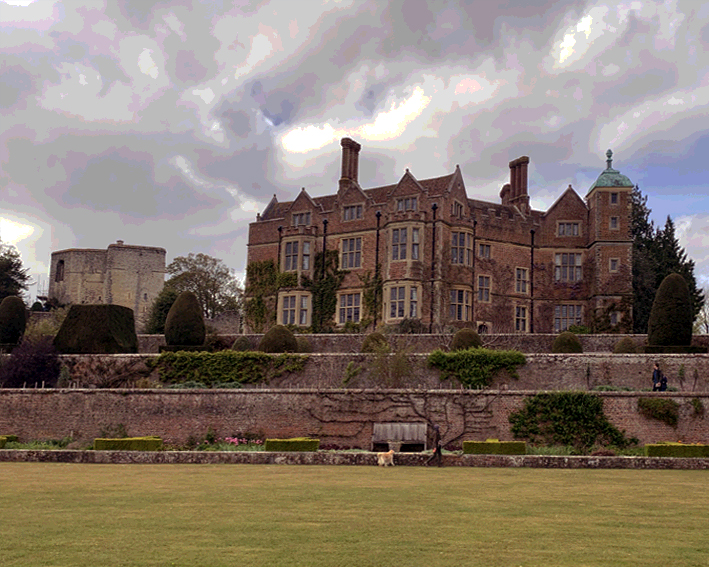 Chilham Castle
Chilham Castle
The castle at Chilham guarding the road from Charing to Canterbury is actually two in one. The older, a distinctly Norman keep dating from 1174, is on the site of a possibly C7 Anglo-Saxon fortification. The scene of a spectacular reception for King Edward II in 1320 it is one of the oldest inhabited buildings in the country. A few yards away stands a crenellated manor house, a spectacular construction built as five sides of a hexagon. Built by 1616 for politician Sir Dudley Digges, it was long thought to have been designed by Inigo Jones, but this is now disputed. The Castle passed through a series of wealthy hands before being purchased by Indian real-estate developers Udit and Tishya Amin in 2022. Enjoying splendid gardens and beautiful views across the Stour valley, it is a popular choice for occasional tours and garden open days, not to mention film and TV productions.
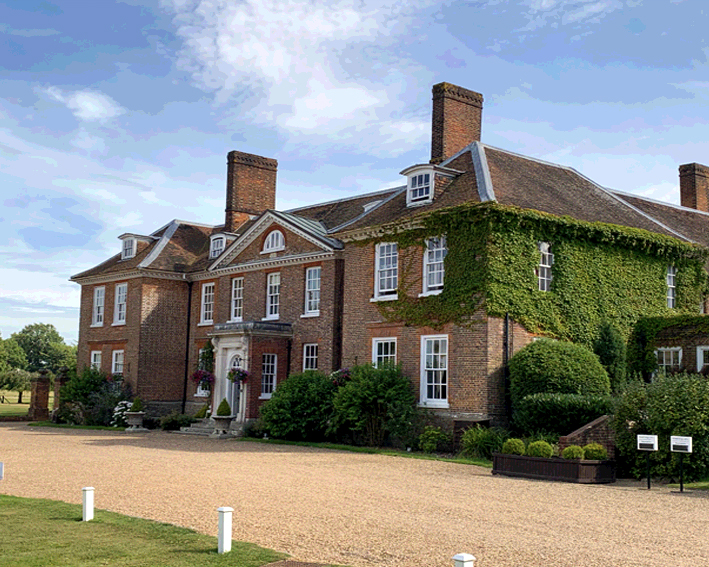 Chilston Park
Chilston Park
Chilston is one of those country houses that were spared the fate of conversion to flats by being converted to a hotel. The redbrick house, which has been evolving since the C15, has too much other construction around it to look a gem; but that’s not to say it lacks merit. It boasts a pleasingly extended approach through its 190-acre country estate, a pair of attractive lakes, and a peaceful atmosphere for afternoon tea. The interior is also appealing, with a stairwell richly embellished with paintings, and decor that retains an authentic feel. The house has a long albeit uneventful history. There was a habitation on the site early in the C12, and the estate was subsequently owned by several families with political connections, including the Douglases from Scotland. James Douglas MP passed it on in 1875 to a new laird, Aretas Akers, who would become Home Secretary and then Viscount Chilston. A descendant disposed of it in 1983.
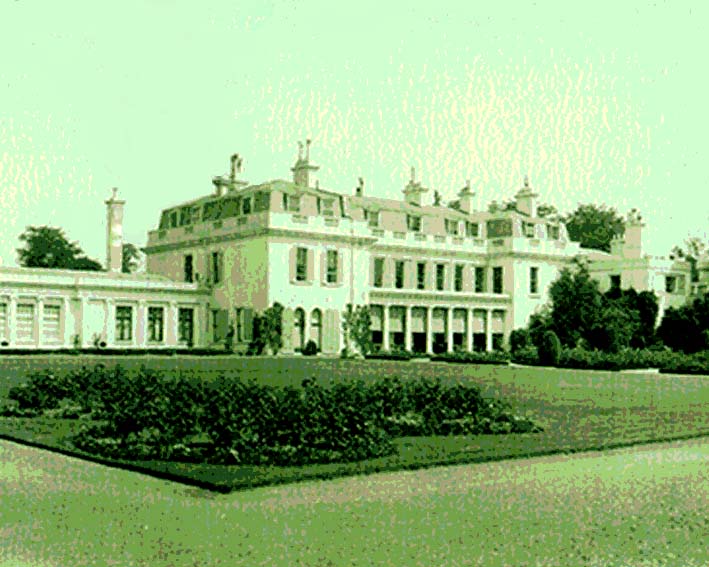 Chipstead Place
Chipstead Place
Originally the demesne of the de Chepsteads, Chipstead Place north-west of Sevenoaks belonged in the C16 to Thomas Cranmer’s son Robert. After being owned by C17 Sheriff of Kent David Polhill, it was acquired by William Emerton, who in the early C18 built a splendid new house containing 26 bedrooms and six reception rooms in 23 acres. After reverting to the Polhills, it changed hands again in 1829, and in 1862 was rented to railway pioneer Samuel Morton Peto. As so often, it was war that precipitated rapid decline, specifically when it was made available as a hospital for Belgian soldiers during WW1. Its contents having been sold in 1931, it was demolished to make room for a leafy housing estate; a local newspaper rued the loss of this latest “sacrifice on the altar of development”. Only isolated parts of the buildings survive, though the estate still accommodates the Chipstead Place Lawn Tennis Club established in the 1930s.
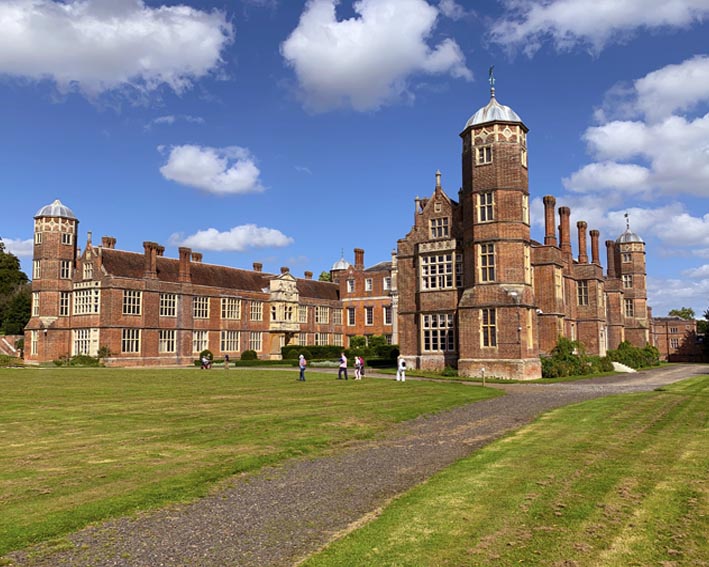 Cobham Hall
Cobham Hall
The first manor house at Cobham, west of Rochester, was built in the C12. In the Tudor era, the 10th Baron Cobham had the basis of the current building constructed, although a new centre block linking the two wings was added in the 1660s. The lords of Cobham Manor often held high office in Kent, including Lord Warden of the Cinque Ports. Set in its 150-acre estate, the house was occupied by the Dukes of Richmond and Lennox from 1624 to 1672, and then by numerous generations of the Earls of Darnley, who made further enhancements to the house in the C18. The 10th Earl was obliged to sell the estate in 1959 on account of a heavy bill for inheritance tax. Since 1962 the house has been home to the Cobham Hall private boarding-school for girls, nearly half of whose pupils come from overseas. The house’s delightful two-storey Gilt Hall is also rented out for weddings.
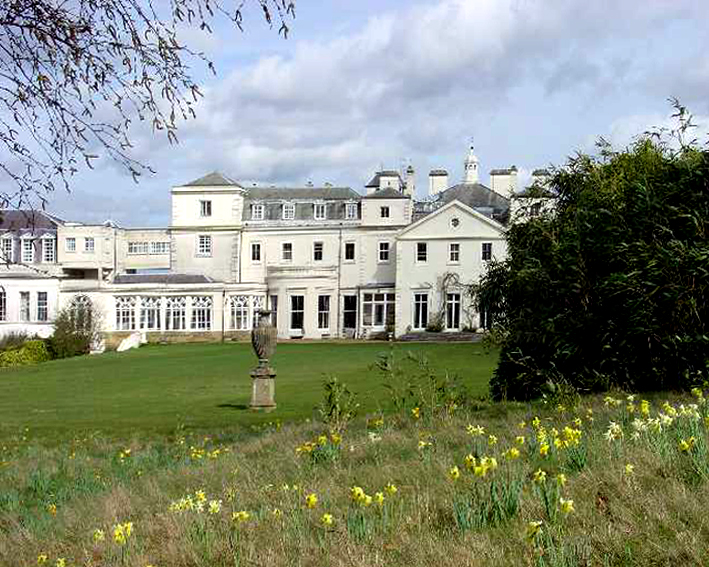 Combe Bank
Combe Bank
In the C18, Colonel John Campbell built Combe Bank, a Palladian house in 518 acres at Sundridge. It came to national attention when his wife died bizarrely there. They had married in 1769 after her first husband, whom she had divorced for cruelty, was hanged for murdering a servant. Blaming their marriage, he wished an even worse death on her. In 1807, she was found incinerated in her chair, with only one thumb remaining, but little damage outside the room; the case gave rise to speculation about the paranormal existence of spontaneous combustion. The house was subsequently occupied by the mathematician William Spottiswoode, President of the Royal Society, who conducted experiments in electricity there and attracted such famous visitors as Charles Darwin and Oscar Wilde. Before WW2, the house was converted to a convent and school, and after serving as a hospital in WW2 was restarted as a school. In 2016, it was renamed Radnor House Sevenoaks.
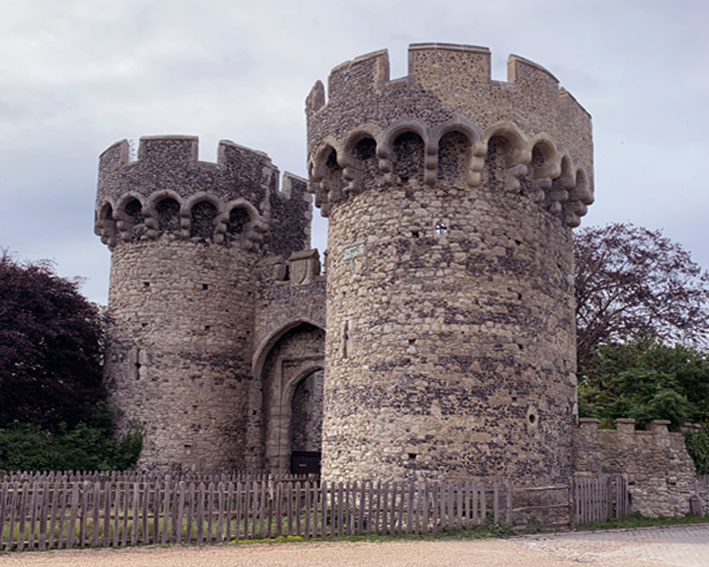 Cooling Castle
Cooling Castle
Were it not for a devastating French raid on the Thames during the Hundred Years’ War, Cooling Castle would not exist. John de Cobham of Cobham Manor applied for royal permission to fortify a manor then by the riverbank on the Hoo Peninsula. It was granted in 1380, whereupon today’s irregular layout and iconic gatehouse emerged. The Castle saw no action before or after the revolt of 1554, when Sir Thomas Wyatt strangely took time out on his way to London to seize the castle. Even with an army of 4,000 that had just won a battle at Strood, it took eight hours to seize it against just eight defenders, which suggests de Cobham had done a good job. Unfortunately, Wyatt used cannon to breach its defences, leaving it uninhabitable. A century later, a farmhouse was built on the site, which today appropriately enough is home to super-cool pianist Jools Holland. Its barn is available for wedding hire.
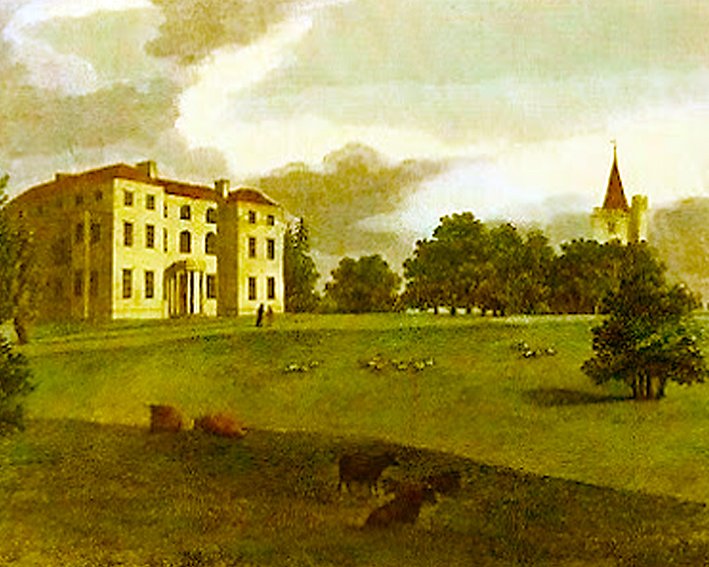 Court Lodge
Court Lodge
The Norman owner of Leeds Castle, Robert de Crevecoeur, created a manor at Lamberhurst in 1166 that he conferred upon his nephew, who built a house there called the ‘Halle’. In order to avoid feudal service, he conveyed it to the abbot of Robertsbridge, who rented it back to him. With the Dissolution of the Monasteries, it was sequestrated by Henry VIII, and later gifted to Philip Sidney. Since being sold to William Morland in 1733, it has remained in that family, which rebuilt and enlarged it. In 1803, Jane Austen‘s cousin Thomas married Margaretta Morland, who may have suggested Catherine Morland, the heroine of ‘Northanger Abbey’, which was completed that year. The house was sequestrated by the Army in both World Wars, but recent owners have restored it, especially its impressive gardens. The golf course, which opened as Lamberhurst Golf Club in 1890, was popular with Siegfried Sassoon and later Denis Thatcher, who stayed there with his wife.
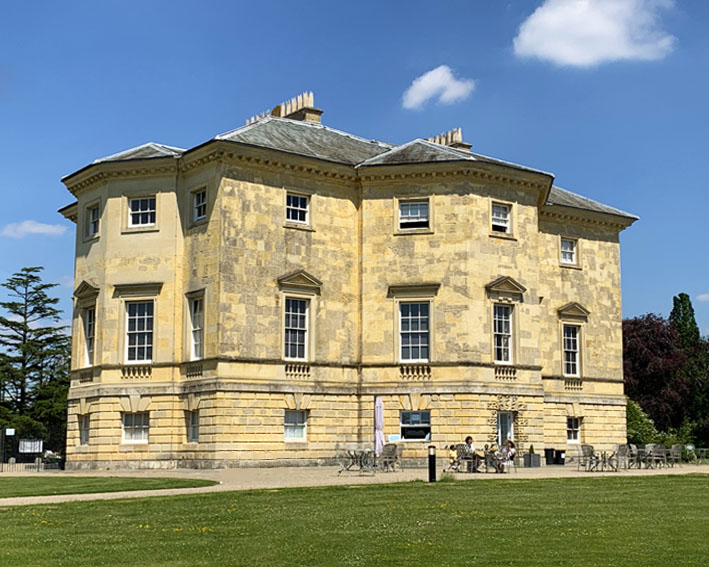 Danson Park
Danson Park
Just south-east of Welling is Danson Park, once a prestigious private estate but now a council-owned public utility. The estate was developed in the early C18 by John Styleman, a director of the East India Company. He left half to charity in 1734; but Sir John Boyd, another East India executive, re-unified it by Act of Parliament, and built the current house in 1768. Following personal and professional disasters, he became a recluse there until his death in 1800, after which his son sold the estate. It remained in private hands until 1924, when Bexley UDC bought it. Although the estate is now bisected by a road, and the house has become a registry office, the 190-acre grounds are still a joy to behold, embracing the historic Charter Tree and a charming Boating Pool. What’s more, there are various sporting amenities, the former stables survive as a pub, and local volunteers have beautifully restored the Old English Garden.
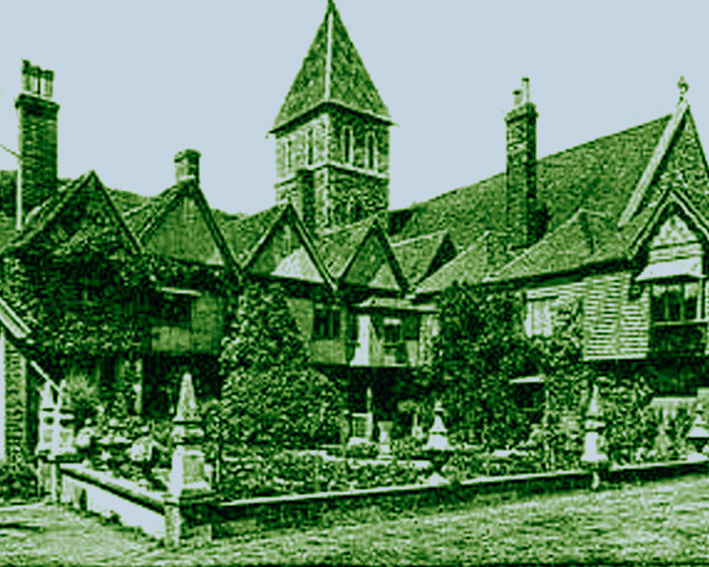 Davington Priory
Davington Priory
In 1153, a Benedictine nunnery was built in the countryside north-west of Faversham. It lasted for centuries until the last one of the nuns died in 1535. For the building itself, her demise was a godsend, because it was thereby spared destruction in the Dissolution of the Monasteries shortly afterwards. The Priory was sold by the Crown to the acquisitive Sir Thomas Cheney as a residence. Consequently, the parish church attached unusually remained in private hands until it was acquired by the Church of England in 1931, in the meantime losing one of its twin towers and being partially plundered for stone. The stained-glass window-maker Thomas Willement, who bought it in 1845, installed a ‘Thynke and Thank’ heraldic window that survives. In 1972, the Church sold the Priory house to style guru Christopher Gibbs, whose friend David Litvinoff, the shadowy socialite, was living there when he killed himself in 1975. Gibbs sold it in 1982 to the present owner, Bob Geldof.
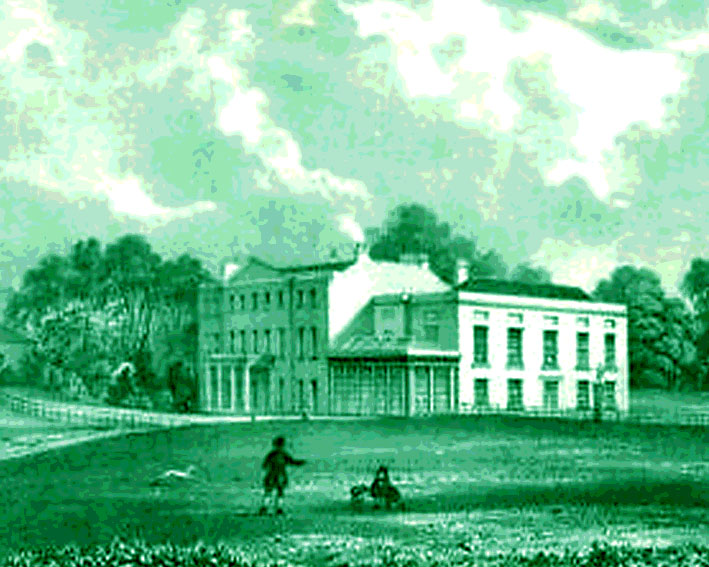 Denne Hill
Denne Hill
The distinguished Denne family from East Kent could trace its ancestry back to before the Conquest, Robert de Dene having been a Norman steward to Edward the Confessor. One of his eminent descendants was the legislator Sir Alured (1185-1256). In one of the ‘Ingoldsby Legends’, Reverend Richard Barham (1788-1845) created a character with the same name, Sir Alured Denne, which scanned as felicitously as Betjeman’s “Miss J Hunter Dunn”. The poem relates how, after falling foul of St Romwold’s divine justice in the late C13, Sir Alured built Denne Hill, where his family still lived; or so Barham supposed. In reality, by the time he was writing in the 1830-40s, the Dennes resided at Grove Hill in Chislet, while Denne Hill was a prestigious Georgian house at Womenswold occupied by Lady Montresor. It was replaced in 1871 by a 16-bedroom affair in C17 Dutch style that still survives, and in the 1980s even housed Nicholas Treadwell’s ‘superhumanist’ art gallery.
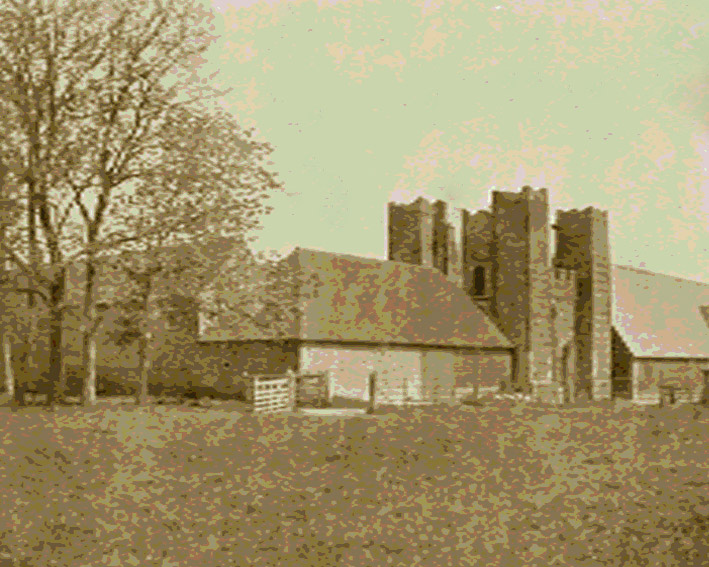 Dent de Lion
Dent de Lion
One of William the Conqueror’s companions in 1066 was Aybeuare (Aubrey), an ancestor of the Dent de Lion family, whose name meant simply Lion’s Tooth. They gave their name to an estate west of Garlinge whose manor they fortified in 1440 in the face of an expected invasion on the coast half a mile away. Two centuries later, the estate was sold by the Pettits to Sir Henry Fox, the notorious Lord Holland who also owned Quex House and Kingsgate Castle, and transferred to his son, the controversial politician Charles James Fox. Later associated with smuggling operations, in 1820 the estate became the site of well-attended annual horserace meetings for over two decades, the name having morphed into Dandelion. The manor burned down in 1888, however, leaving only the extraordinarily well-preserved gatehouse, with four corner towers containing internal staircases. Though protected, the gatehouse has been engulfed by Margate’s unrelenting expansion, and now looks strangely out of time and place.
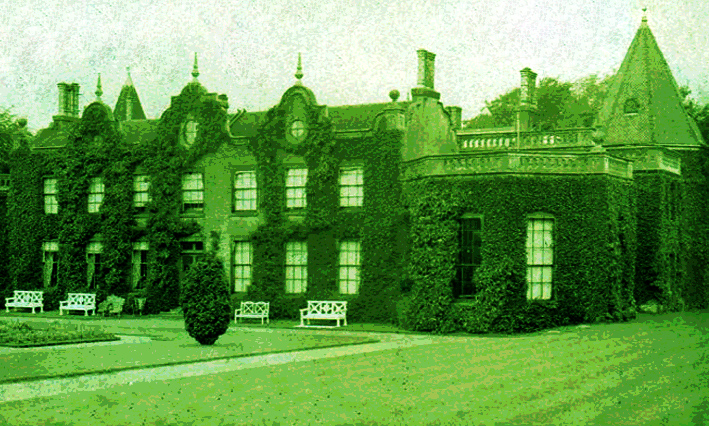 Denton Court
Denton Court
The manor of Denton, seven miles north-west of Dover, was recorded in the Domesday Book, but the first house there of which anything much is known was built in 1574 by Queenborough MP William Boys. It was sold to Samuel Egerton Brydges, the Wootton-born publisher of Lee Priory fame, who constructed a massive new house incorporating parts of the old building and moved there in 1792. Following a fire, a new owner, William Willats, substantially extended it, establishing a new south-facing façade. The imposing house with its 17 bedrooms, billiard room, and ballroom recently came on the market at nearly £3 million, which along with its 26 acres and two cottages sounded a snip until it became evident that major restoration was required on the scale of that at nearby Bridge Place, now a boutique hotel. Handily located next to St Mary Magdalene Church on the Canterbury Road just south of Denton, Denton Court’s future remains uncertain.
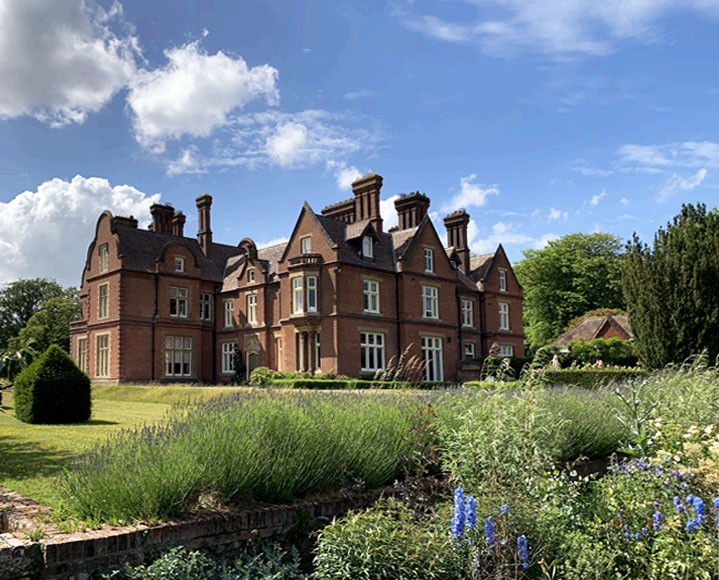 Doddington Place
Doddington Place
With its proximity to Sharsted Court and Belmont, Doddington Place is part of a historical Millionaire’s Row on the North Downs towards Faversham. There is not a great deal to be said about the house’s history, it being too recent to have had much happen there. It was built on the Doddington estate around 1870 by Sir John Croft, a member of the famous port-producing family, who until then had lived in a house called Whitemans a short walk away to the south west. The new house, standing in the middle of a classic 850-acre country estate, was designed to be an imposing red-brick and tile affair with gothic overtones. The property was sold in 1906 to General Douglas Jeffreys, and so passed by inheritance to the Oldfields, who retain ownership today. It was Mrs Jeffreys who gave the house its crowning glory, its impressive formal gardens, which are accessible to the public in the summer.
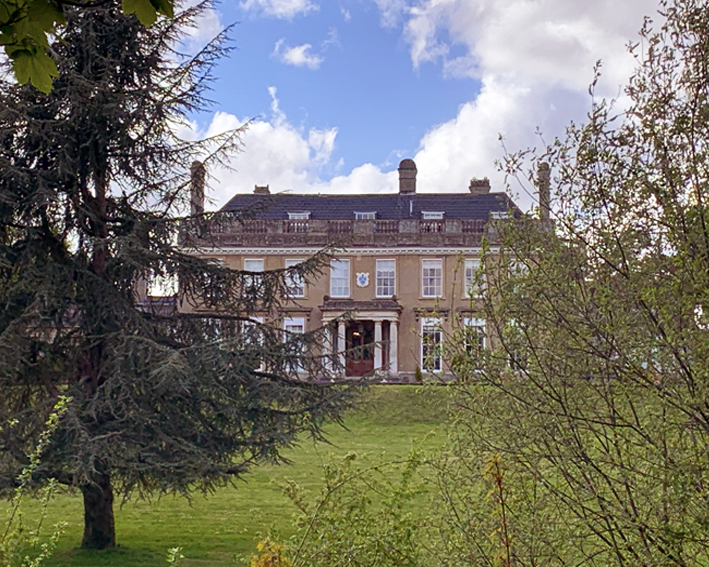 Douce’s Manor
Douce’s Manor
Either side of the road south out of West Malling lies the former estate of the Douce family. To the east lies the lake formed by widening the Ewell Stream, surrounded by grounds sold to Kent County Council in 1973 that now make up most of the 52-acre Manor Park Country Park. In the eight remaining acres to the west stands the house itself, built in 1776 for Thomas Douce. It was sold in 1803 to the Savages, served as a military R&R centre during WW1, and was converted to a ladies’ convalescent home. During WW2, it provided living quarters for RAF personnel serving at the nearby West Malling airfield. They converted the basement to a mess – known as the ‘Twitch Inn’ because of the aircrews’ understandable tics – that was frequented by such famous pilots as Guy Gibson and Roland Stanford Tuck. The house was left ruined, but later restored as a hotel-cum-restaurant and then Commercial Union’s conference centre.
 Down House
Down House
Like Chartwell, Down House owes its fame to one previous occupant: England’s most famous scientist bar Newton, namely Charles Darwin. After his marriage to Emma Wedgwood, the great evolutionist needed somewhere to live that would offer a balance of rural tranquillity and nearness to London, then the scientific capital of the world. He alighted on Downe, a country parish north-west of Sevenoaks. A farmhouse existed at the site of Down House in the C17, but it was rebuilt and expanded around 1780. The Darwins weren’t sure when they first viewed it in 1842, but Emma finally fell in love with the views, while Charles liked the number of rooms, the local walks, and the price. After making many alterations, they settled there for the rest of their lives. Visitors relish seeing the ‘sandwalk’ where Darwin did his thinking, the greenhouse where he did his experiments, and the study where he wrote the earth-shattering ‘Origin of Species’.
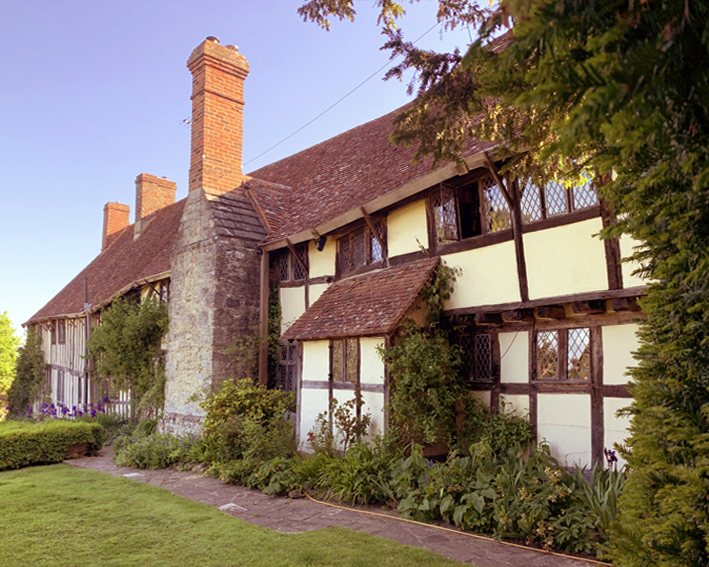 Dukes Place
Dukes Place
In West Peckham, midway between Maidstone and Sevenoaks, there stands a scheduled monument that is as picturesque as it is historical. In 1405, Sir John Culpeper of Oxon Hoath, a knight at the court of King Henry V, had a large L-shaped house built there. A gift to the Knights Hospitaller, it was known as a ‘preceptory’, where returning pilgrims were treated to hospitality, and funds were raised to pay for crusades. The Hospitallers held as many as 76 such preceptories in England, but Dukes Place is today a particularly well preserved example. The north range, which burnt down in the C15, was rebuilt around 1500. After reverting to the Crown upon the Dissolution of the Monasteries, it was converted into labourers’ cottages in the C18, and fell into disrepair; but it has been painstakingly restored since WW2. Set in five acres and sporting a magnificent Great Hall, it is now a luxurious though expensive family home.
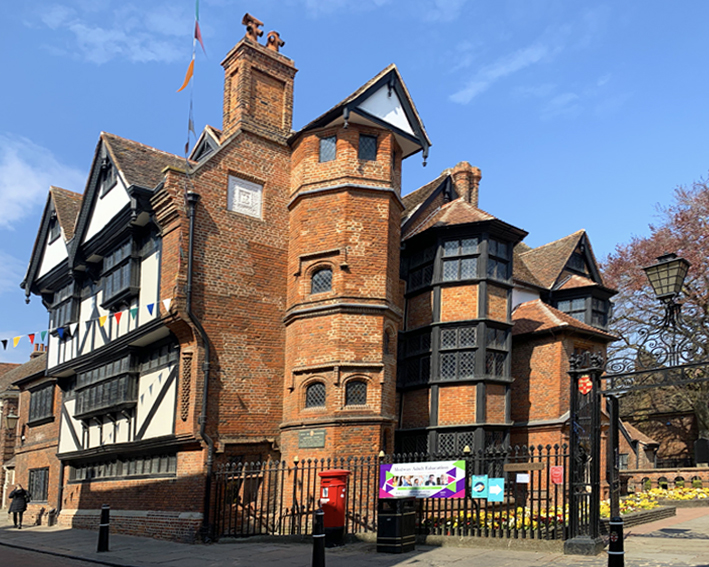 Eastgate House
Eastgate House
It is no surprise that Eastgate House took the fancy of Charles Dickens, being in his home town of Rochester and possessing a suitably exotic aspect. It was built by mayor Sir Peter Buck late in the C16, and passed through five generations of descendants. In the late C18 it became a school. It reverted to being a grand private residence in the 1870s, when a coal merchant bought it; but since 1890 it has been put only to public use. It has successively been a hostel for young men, a temperance restaurant, a library and museum celebrating Queen Victoria’s Diamond Jubilee, and a Dickens museum from 1923 to 2004. Thanks to a lottery grant, it was re-opened in 2017 as an exhibition centre. Dickens used Eastgate as a model for his Westgate in ‘The Pickwick Papers’ (1836), and the chalet in which he wrote several novels at Gads Hill now stands in Eastgate’s garden.
 Eastry Court
Eastry Court
Located in Sandwich, Eastry Court must be the oldest house you will ever see appearing in estate agents’ listings – although claims that it is over 1,400 years old need to be taken with a pinch of salt. It is indeed the site of an early-C7 royal palace belonging to King Aethelberht I and his wife Bertha. Legend has it that their great-grandson, Ecgberht, had his two young cousins murdered in order to secure his line’s succession, and gifted the palace to the priory of Christchurch as a penance. When Becket fled from Henry II in 1164 on his way to Flanders, he hid at Eastry Court; and Edward III entertained his generals there on his way to invade France in 1341. Only traces of that edifice remain, however, the house having benefitted from major C14, C16, and C18 improvements. It declined again thereafter, but has been restored since the 1980s and now provides nine-bedroom luxury to its private owners.
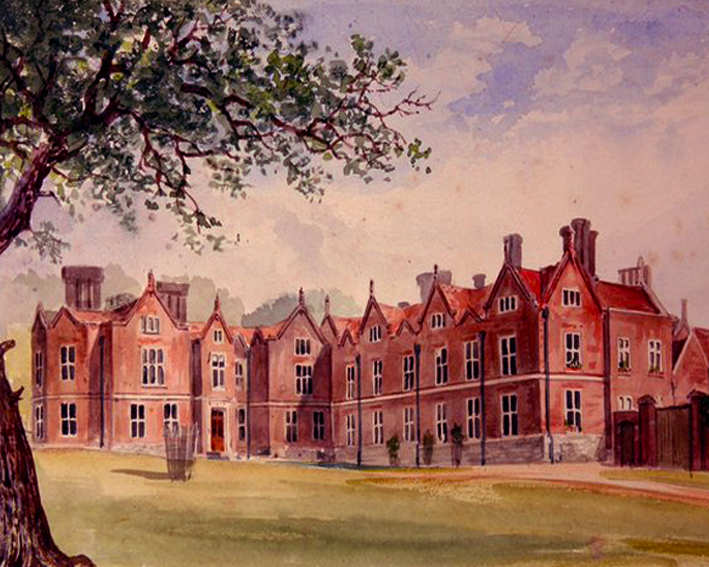 East Sutton Park
East Sutton Park
One can only speculate what would have become of East Sutton Park if a German shell had not detonated next to 37-year old Captain Sir Robert Filmer MC in WW1. It made him the last of a line of ten Baronets of East Sutton, Kent who had occupied their country pile for three centuries. The first baronet’s father was Sir Robert Filmer, author of the controversial ‘Patriarcha’, whose own father acquired the estate around 1616. The original H-shaped house, built ca 1570, was subsequently expanded with another wing attached to its north-west corner; further modifications followed in the C19. The house was sequestrated during WW2, and in 1946 converted to a Borstal. Today it remains in the charge of Her Majesty’s Prison Service, accommodating around 100 adult women and young offenders. The Filmers must have turned in their graves when, in 2003, the prison was officially criticised for being insufficiently respectful of inmates’ wishes.
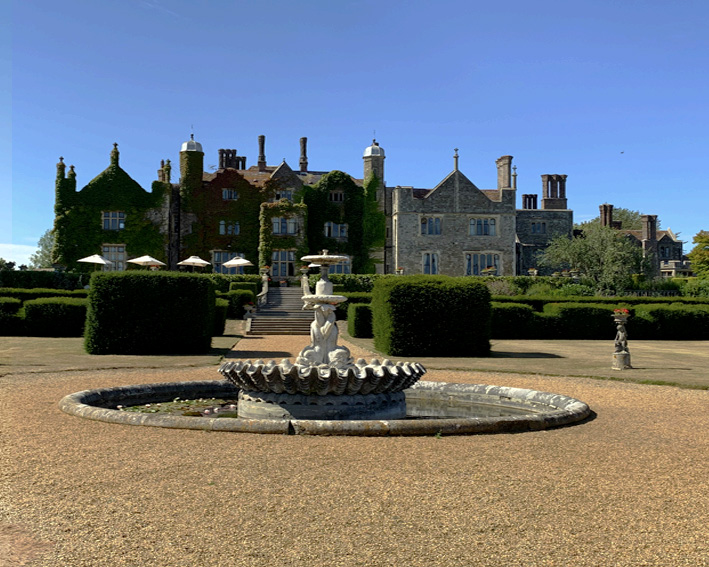 Eastwell Manor
Eastwell Manor
Eastwell Park is a large scenic area west of the Faversham Road out of Ashford, comprising parkland, agriculture, pasture, and a lily-covered lake. Sir Thomas Moyle had a manor house built there in the 1540s, which was replaced in the late C18 by the current building in mock Elizabethan style; a Tudor-style wing was added later. The grand gatehouse on Sandyhurst Lane, added in 1848 and known locally as Eastwell Towers, is worth seeing in its own right. After passing through the hands of two owners who went broke, Eastwell was occupied until 1893 by Prince Alfred, whose mother Queen Victoria visited regularly. His brother the Prince of Wales also came, and the future Queen of Roumania was born there. All changed after WW1. As often happened with unwanted old buildings, a serious fire broke out. The house was fortunately restored to its current state, and now operates as a hotel, complete with Champneys spa, smart restaurant, and golf-course.
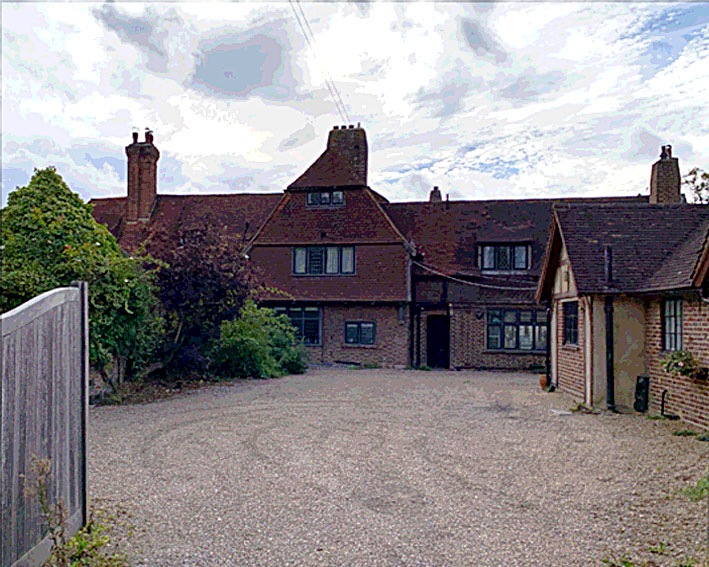 Edenbridge House
Edenbridge House
Driving north up Main Road out of Edenbridge takes one past the inconspicuous entrance of what could be just another smart suburban home. The clue however lies in the discreet nameplate: Edenbridge House. What lies behind the façade is a vast rambling manor in the best English country tradition, complete with picture-book gardens and even an oast. The land was originally part of the vast Hever estate, the site long being known as Lyndhurst. Until the C20, it was a tenanted farm that changed hands many times. It was not until 1934 that the house was sold separately from the farmland, retaining around 15 acres of garden. Harold Mosenthal, a South African city trader, created the current zoned garden layout; while a new owner in 1953, Rio Tinto chairman Sir Val Duncan, renamed the property Edenbridge House, adding a water garden and swimming pool. Both kept a visitors book that contains famous names. The house is still a private residence.
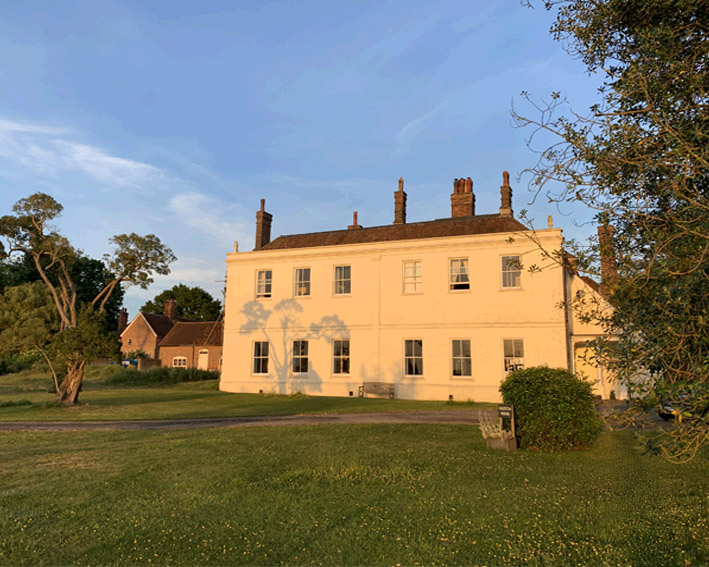 Egerton House
Egerton House
The house at the top of Star and Garter Hill, west of Egerton, was originally a medieval timber-framed building, but now has a distinctly Georgian look. Once called Goodale, it was owned by John Dering of Surrenden in Pluckley. Generations later, it passed by marriage to the Husseys of Scotney Castle and then, in the C18, to Galfridus Mann of Boughton Place in Boughton Malherbe. In 1765, his son Horatio Mann is said to have entertained the Mozart family at the house during their week-long stay at his main residence, Bourne Park near Canterbury. A decade afterwards, Mann added a series of large reception rooms to the front of the house, with a scenic view down into the Weald. These came in handy two centuries later, the house having passed into the hands of the musical Gipps family in 1952. During the biennial Egerton Music Festival, the house and gardens regularly played host to well attended classical concerts.
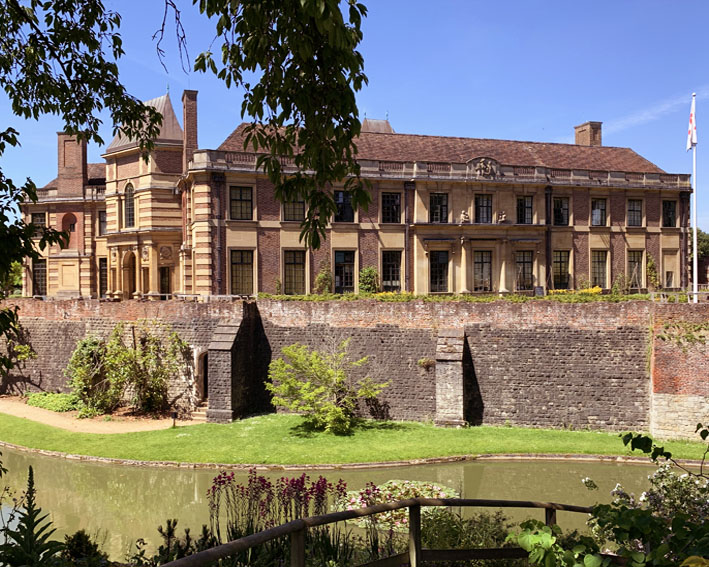 Eltham Palace
Eltham Palace
The former royal residence opposite Royal Blackheath Golf Club is as rich in history as any in the county. Built around 1300, it was given to Edward II and used by English monarchs for two centuries. It was here that Henry IV entertained Emperor Manuel Palaeologos with jousting in the Palace’s own tiltyard. The Great Hall, built by Henry IV, was the scene of a historic encounter when fate threw together Erasmus, Sir Thomas More, and the future Henry VIII. Despite its three deer-parks for hunting, the Palace fell out of royal favour when Greenwich Palace was rebuilt around 1500. Van Dyck was permitted to live there, but the estate fell into ruination after the Civil War. In 1933, a lease was purchased by a member of the Courtauld textiles family, who built a new house around the Great Hall, decorated in Art Deco style and surrounded by beautiful gardens. The property is now managed by English Heritage.
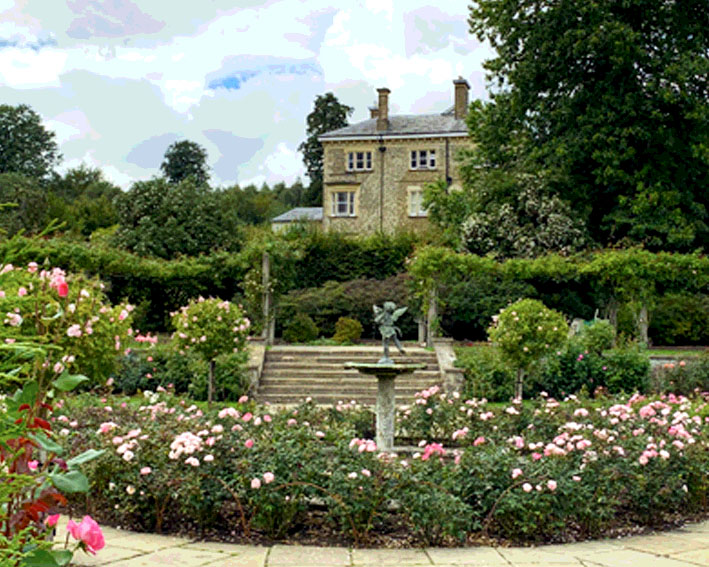 Emmetts
Emmetts
Emmetts, at Ide Hill near Sevenoaks, is one of those rare properties that qualify as hidden gems. The name itself is a curiosity, coming from the Anglo-Saxon word for ‘ants’. The estate was so named because of the presence of numerous large anthills in the area. One reason why this appealed to Frederic Lubbock, who in 1890 purchased the house built there 30 years earlier, was that his brother was the renowned myrmecologist Sir John Lubbock from High Elms. Anthills are less in evidence today than blooms, the compact country house being enveloped by glorious flowerbeds that include an impressive rose garden directly in front of the house. The property was bequeathed in 1964 to the National Trust, which has not only spent some years restoring the gardens to their former glory but also laid on extensive walks through the adjacent parkland and woodland, affording impressive views from their elevated position above the Weald.
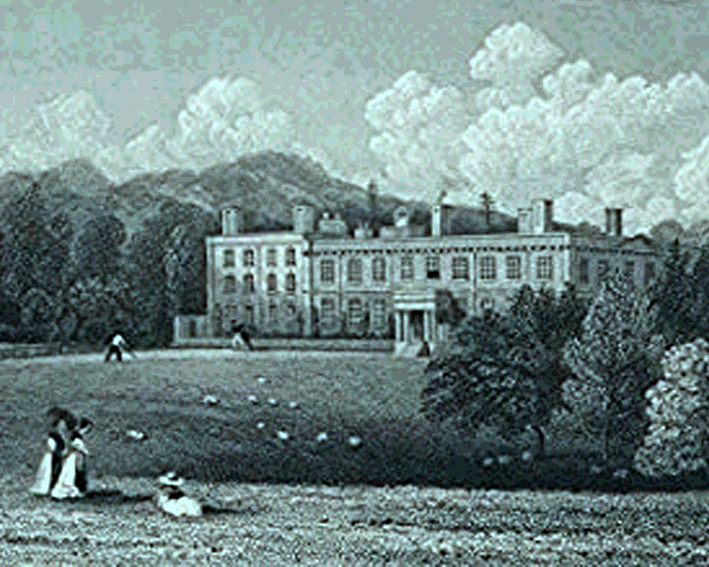 Fairlawne
Fairlawne
Fairlawne is a thousand-acre estate just north of Shipbourne and due east of Ightham Mote. The large house of that name was built for Sir Henry Vane the Elder, who like his son of the same name was a significant figure in the Civil War. The estate was acquired in 1880 by Edward Cazalet, a Brighton-born industrialist, who on arrival generously built a pub for the village, as well as a church where several Cazalets are now interred. One of his grandsons born at Fairlawne was Peter Cazalet, who famously trained racehorses there for the Queen Mother. In 1979, after Cazalet’s death, Fairlawne was sold to Saudi Prince Khalid Abdullah, a top racehorse owner. Fairlawne became the focus of a legal dispute in 2011, when Kent County Council permitted the Prince to close off an ancient footpath crossing the estate; the decision was reversed on the instructions of the Planning Inspectorate, following protests by villagers.
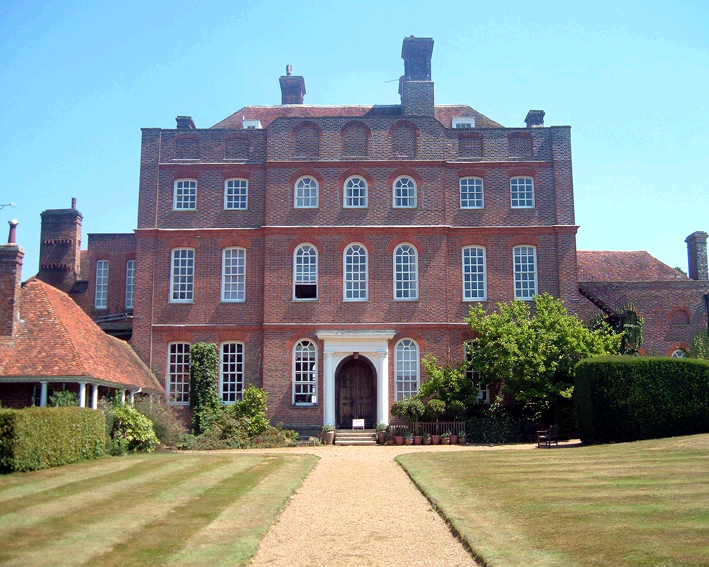 Finchcocks
Finchcocks
A family called the Finchcocks is said to have lived on the site in Goudhurst as early as the C13. The current distinctly Georgian house was built in 1725. The main structure could be a classic town-house, but for the 13-acre gardens surrounding it. The façade is ingeniously designed, the four storeys of decreasing height lending the house an impression of stretching up into the sky. The house is only 40 feet deep; its rooms are interconnecting, with no corridors, after the manner of a Wealden hall-house. The oak-panelling and high ceilings on the ground floor lend themselves to musical performance, for which reason the new owners in 1970, the Burnetts, built a superlative collection of musical instruments there. It was made accessible to the public as the Finchcocks Musical Museum until 2015, when the Burnetts retired and much of the collection was sold off. The current owners, the Nichols, run residential piano courses at the house.
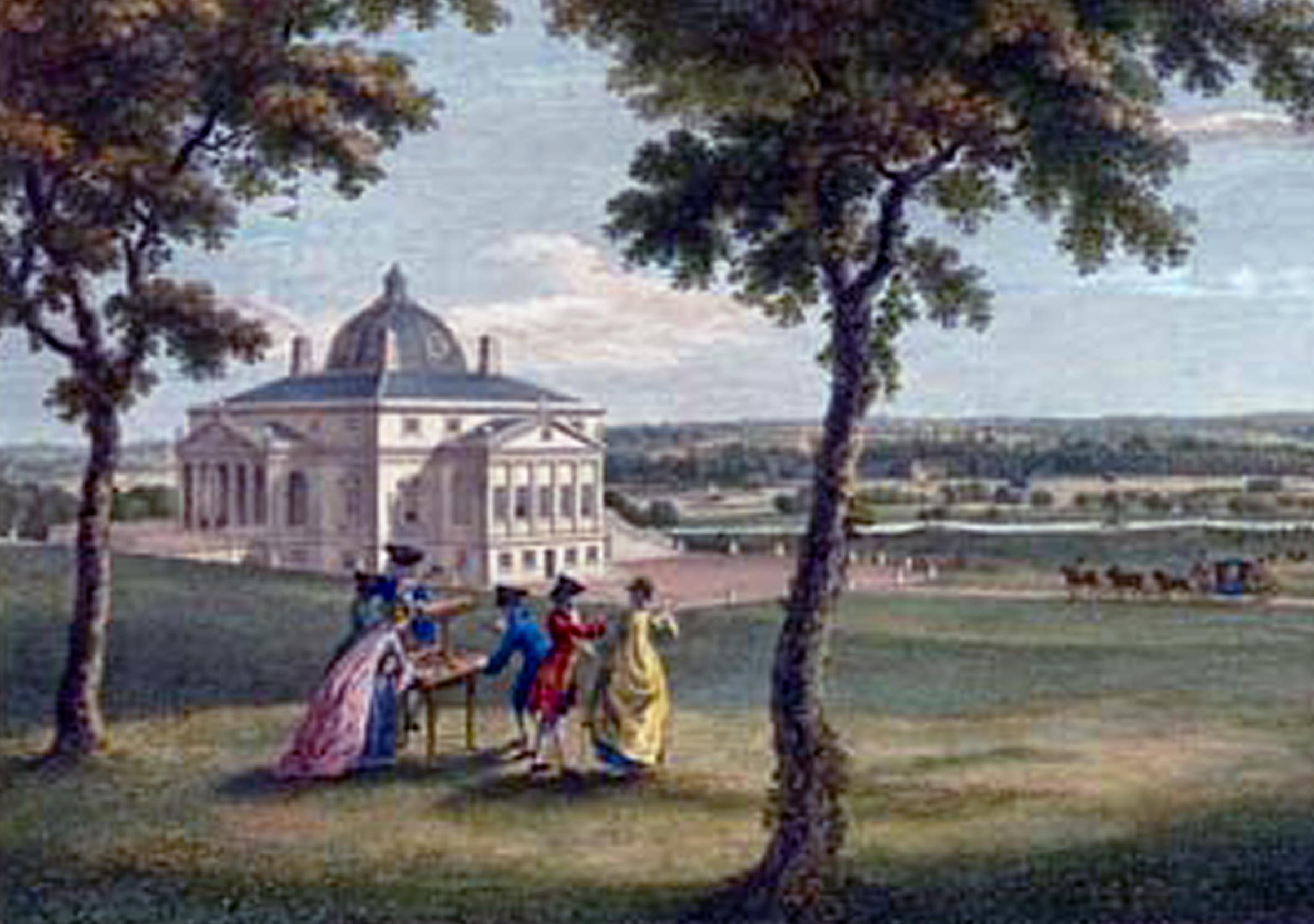 Foots Cray Place
Foots Cray Place
Palladio’s Villa La Rotunda, built in the late C16 near Vicenza, was a masterpiece of neoclassical design, and inevitably inspired imitations. Four copies were built in England, of which two – Mereworth Castle and Chiswick House – still stand. One that did not survive was Foots Cray Place. It was built on the site of a medieval manor house near Sidcup that until 1676 had remained in the hands of the Walsinghams, including the notorious spymaster Sir Francis, for six generations. London pewterer Bourchier Cleeve purchased the estate in 1752 and within two years had the Palladian house built. Its external beauty was matched by the opulent art collection he housed inside. The house subsequently passed through numerous hands before being requisitioned as a naval training college during WW2, and wrecked. It was sold to Kent County Council as a museum, but expediently caught fire in 1949 and was demolished. The 220-acre grounds are now a public park.
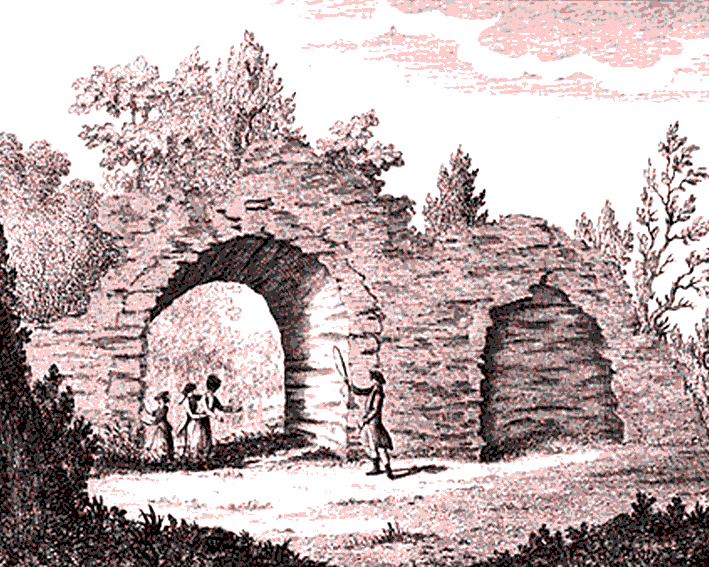 Ford Palace
Ford Palace
The old Archbishop’s palace at Hoath, nearly seven miles north-east of Canterbury and close to Herne Bay, was one of fifteen outside of Canterbury. The ‘Ford’ in the name referred to the point where the Roman road from Canterbury to Reculver crossed a stream. It has been speculated that there was an archiepiscopal residence here in Anglo-Saxon times, but no certain record exists before the C14. It was impressively rebuilt in the late C15, with a tall tower added. Archbishop Cranmer was a fan of the place: he hosted Henry VIII there in 1544, and was in residence nine years later when he was fatefully summonsed to appear before the Privy Council. Most of the Palace was destroyed by order of Parliament in 1658, after which its chapel was used as a barn until that too was demolished in 1964. The old gatehouse now forms part of the listed Ford Manor Farmhouse, which also includes a C15 wing behind a C18 red-brick façade.
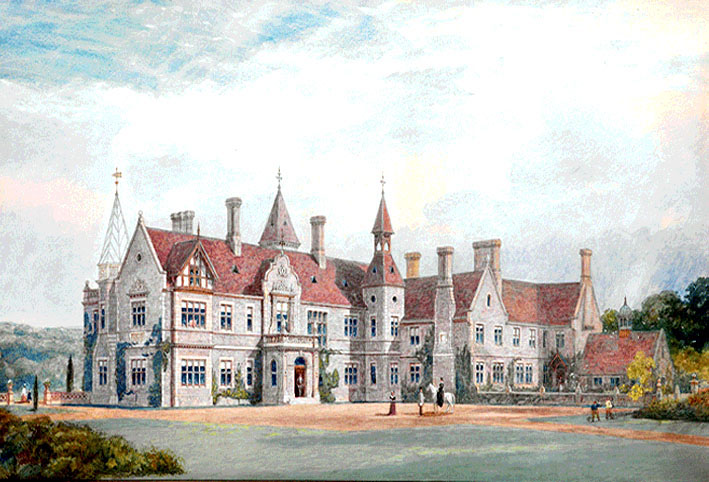 Foxbury Manor
Foxbury Manor
In June 2009, on the eve of a sell-out concert season in London, pop superstar Michael Jackson was ready to move into Foxbury Manor. Situated close to London next to Chislehurst Caves, but resembling a romantic château, it appealed enough to justify spending a million pounds on rent for a year. Rooms in the £15 million house had been themed for Wacko Jacko’s children, and the 8-acre gardens, surrounded by an 8-feet high security fence, had been made over to include fairground rides and a bowling alley. The owner, care-homes entrepreneur Osman Ertosun, had already moved his family out when Jackson’s physician fatefully administered an overdose of propofol. The controversial star’s death ignited fans’ unbridled grief, but also the relief of local residents familiar with the ways of paparazzi. Ironically the house, built in 1875, had been a retreat for bishops’ and missionaries’ families in the 1940s, well before the 32 bedrooms were cut down to 11 luxury suites.
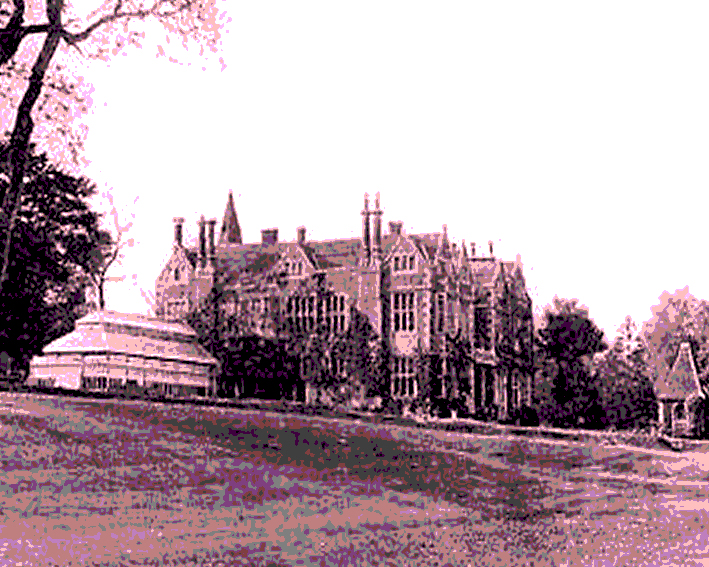 Franks Hall
Franks Hall
In 1220, a manor house was built at Horton Kirby, on the east bank of the Darent north-east of Farningham, by the Frankish family. Three centuries later, it was inherited by Lancelot Bathurst, who built a new house on the opposite bank in 1591. It was impressive: a three-storey red-brick cube of pure Elizabethan grandeur. The house passed on through generations of Bathursts until the mid-C18. After being inherited by a Yorkshirewoman who took no interest, the estate was sold in the 1850s to a farmer, who used the house as a barn. After his death, it was sold, rebuilt, sold, re-sold, and finally in 1910 sold back to Lord Bathurst, 153 years after his family lost possession. Sadly, it didn’t stay long: he gifted it to his son, who left it empty. Apparently unloved, it has since passed through various other hands. Four-fifths of its 446 acres have now been sold off, though a Tudor garden remains.
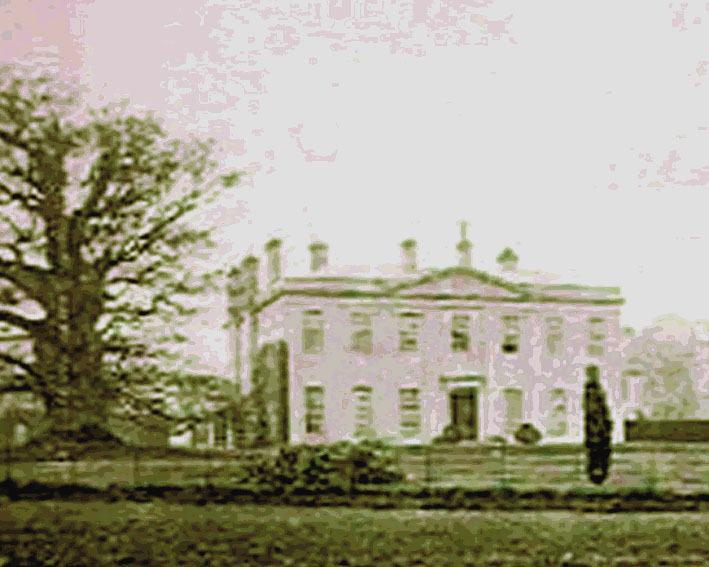 Fredville House
Fredville House
Unlike its namesake in Kentucky, the Fredville estate at Nonington was not named after an individual. Hasted, a fine antiquarian but no linguist, thought its name derived from the French for ‘cold’, and so described the local microclimate, whereas it was much more likely a corruption of the Germanic word ‘frith’ meaning a patchy wood and ‘vill’ signifying an administrative unit. Originally owned by Dover Castle, it was purchased by John Colkin in the C14, and subsequently owned by the Boys, Brydges, and Plumptre families. While occupied by the Canadian army in 1940, the house was gutted by a blaze, largely because the six fire brigades who attended were unable to muster much water in that remote location, and a fire initially confined to one room spread uncontrollably. Fredville is now best known as the site of the Fredville or Majesty Oak, one of particular antiquity and size among its many splendid specimens.
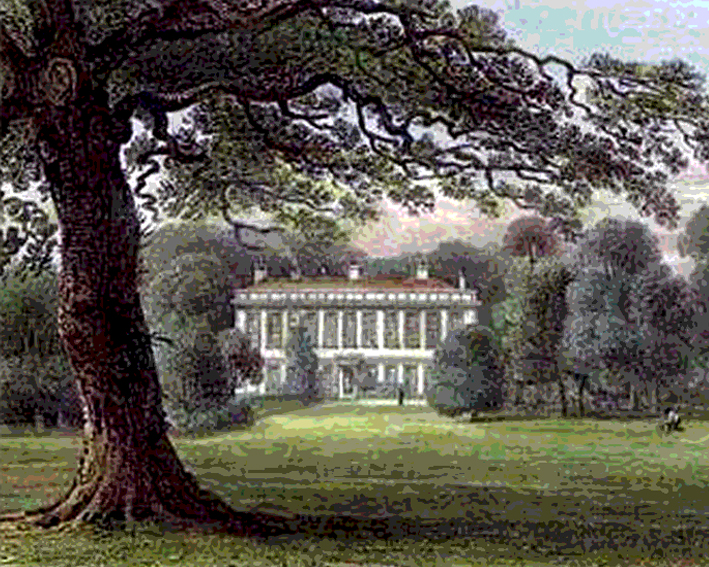 Frognal House
Frognal House
In 1253, King Henry III granted the right to kill game in an area a mile east of Chislehurst. Within 300 years, the Dynley family had built a manor there. It was sold early in the C17 to William Watkins, who demolished all but a staircase and an arch and replaced the stone building with a two-storey Jacobean brick edifice. Concerned that it would be confiscated by Parliament, he sold it to the respectable Warwicks. They bequeathed it to the nouveaux riches Tryons, who around 1700 connected the mansion up with outbuildings and formal gardens. It was bought in 1752 by Thomas Townshend, father of the 1st Viscount Sydney, and remained in the family until 1915, when it was sold to the Government to form the Queen’s Hospital. A new Queen Mary’s Hospital was built in its place in 1974, which 25 years later became the first Sunrise care home. Whatever Frognal House may offer, continuity isn’t it.
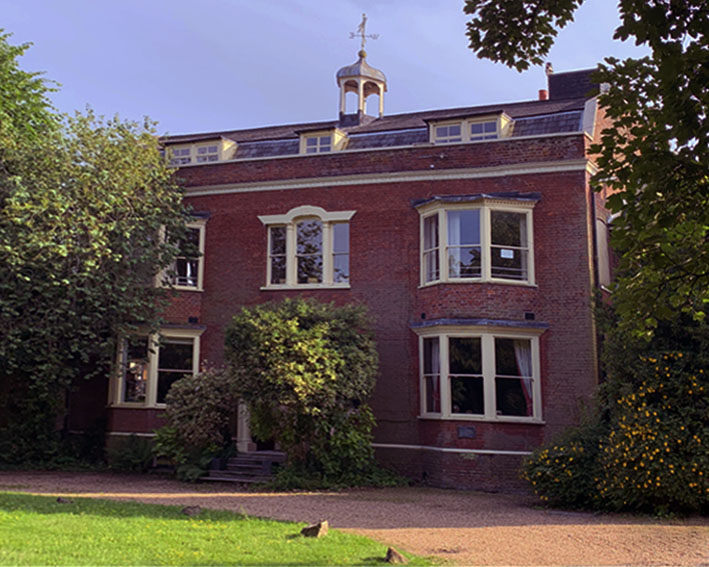 Gads Hill Place
Gads Hill Place
Architecturally speaking, there is nothing special about Gads Hill Place in Higham, a smart but simple house built in 1790 for an ex-mayor of Rochester; but there is a special story attached to it. In 1821, aged nine, Charles Dickens considered it the epitome of a rich man’s abode. After his father told him that, if he applied himself, it might one day be his, Dickens used to walk there from Chatham to remind himself. Three years later, Dickens Senior was thrown into Marshalsea Debtors’ Prison for living beyond his means, while Dickens Junior went on to make a fortune writing books about poverty. He earned enough to realise his childhood dream by buying Gads Hill Place in 1856. He was visited there by numerous creative personages, one of whom, the actor Charles Fechter, gave him the large two-floor Swiss chalet in which he wrote his last four novels. The house is now home to an independent school.
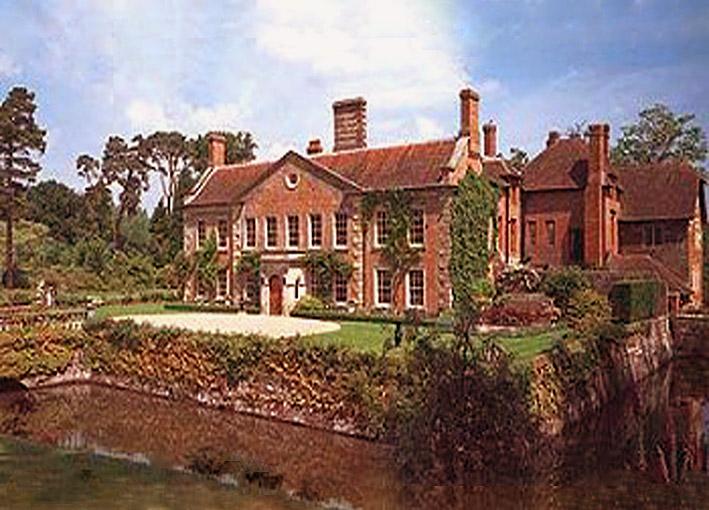 Glassenbury Park House
Glassenbury Park House
Halfway between Goudhurst and Cranbrook, Glassenbury was originally ‘Glastenbury’. The eponymous park’s story dates back to the C12, when the Tilleys owned it. In 1377, Joanne Tilley married Stephen Rockhurst, who in 1399 built a stone mansion on Winchet Hill. In the C15, Walter Rockhurst, who perhaps had something to fear, both altered his name to Roberts and built a new house on an earthen platform in the marsh below the hill, creating the moated construction that survives today. The house was substantially renovated after a fire in 1726, and in 1778 mistakenly bequeathed to unrelated Irish Robertses who let it fall into disrepair. Considerably altered in the 1870s and 1950s, the house was sold off in the 1970s, and remains in private ownership. The estate boasts woodlands, restored after being badly damaged in the 1987 storm; a lime avenue; and a pedestal marking the grave of Napoleon’s horse Jaffa, which lived there after Waterloo.
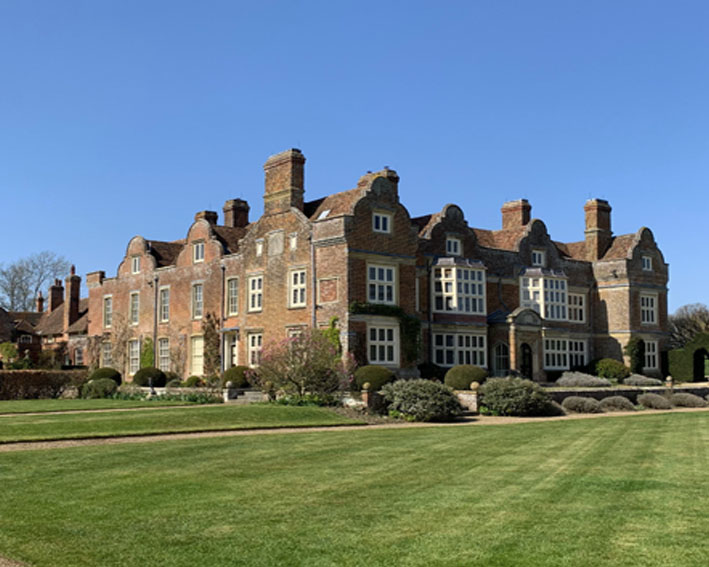 Godinton House
Godinton House
In the hands of a not-for-profit trust since 1995, Godinton House provides an unusually digestible stately-home experience. North-west of Ashford, it consists of a medieval hall that had a gabled Jacobean brick mansion built around it. The beauty of Godinton is that it remained in the hands of the Toke family for nearly five centuries. Its character therefore never changed much, even after it was sold to George Dodd in 1895 and Mrs Bruce Ward in 1919. A guided tour has the virtue of giving a real flavour of what it was like to live there, but without trying the visitor’s stamina. The one feature that differs greatly from the Tokes’ days is the various gardens, including an impressive lily pool, that were designed in the late C19 by architect Sir Reginald Blomfield. Spectacular in their own right in summer, they are bounded by the massive sculpted yew-hedge that is Godinton’s hallmark.
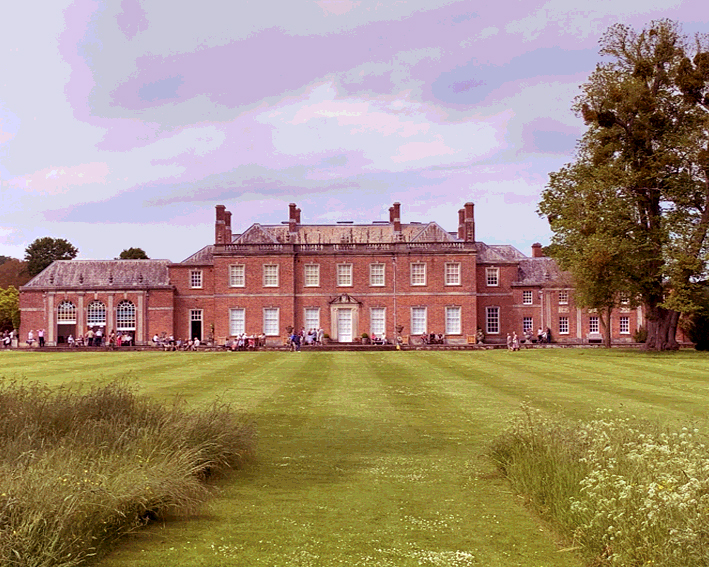 Godmersham Park
Godmersham Park
Godmersham is famous as the likely inspiration for Jane Austen’s ‘Mansfield Park’. In Elizabethan times, the Brodnax family had owned Ford House on the Ashford-Canterbury road. Thomas Brodnax MP, who by then had changed his name to May, replaced it in 1732 with the current main building. Ten years later, now renamed Knight, he enclosed it in the 600-acre Ford Park, and added the house’s wings in 1780. It was inherited in 1794 by a family cousin, Edward Austen, who later also changed his name to Knight. Between 1798 and 1813, he was frequently visited by his famous sister, Jane. Now called Godmersham Park, it was reworked after 1852 by Knight’s son Edward. A more major overhaul took place in 1935 when, after decaying during three changes of ownership, both house and gardens were substantively restored by the Trittons. Godmersham was eventually acquired by Sunley Farms, who since 2001 have rented it out as a training college for opticians.
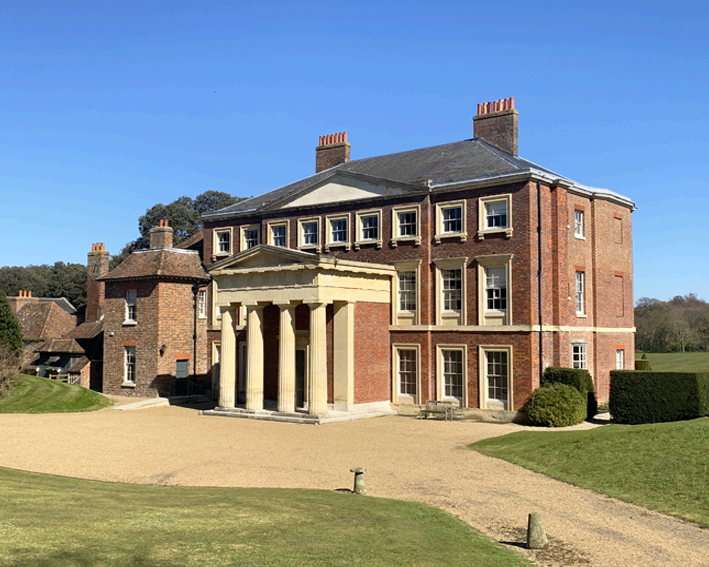 Goodnestone House
Goodnestone House
Named after previous lord of the manor Godwin, Earl of Wessex, Goodnestone originally sported a Tudor house owned by Sir Thomas Engeham. After being abandoned, it was purchased in 1705 by barrister Brook Bridges, demolished, and replaced by the current Palladian house, which soon had extensive formal gardens added. However, Bridges’ great-grandson, the 3rd Baronet, replaced these with a fashionable landscape park in the late C18. His daughter Elizabeth married Edward Austen in 1791, the couple living on the estate at Rowling House. Like Godmersham – 11 miles away as the fit crow flies – the estate was consequently visited regularly by Austen’s sister, Jane, who began writing ‘Pride and Prejudice’ after one stay. The 5th Baronet added a portico in the 1840s, as well as terraced lawns. These evolved over time into today’s magnificent gardens, restored in the 1960s, which are open to the public in summer months and rated among the best in the country.
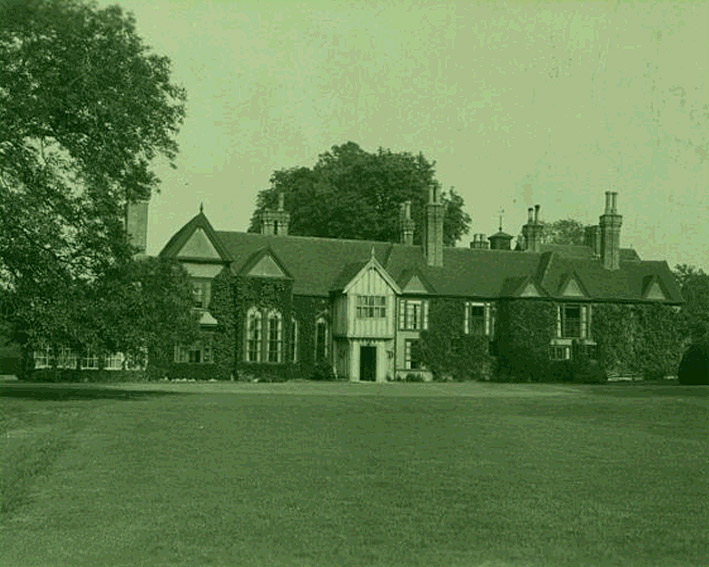 Gore Court
Gore Court
Otham’s Gore Court used to have 39 acres of magnificent gardens and parkland, but they have now mostly been obliterated and returned to arable use. Some relics remain, however, including a 300-year-old cedar and Southern England‘s biggest tulip tree. As recently as 1949, the house and gardens were still sufficiently impressive to provide the backdrop for a memorable scene in ‘Kind Hearts and Coronets’, when Louis D’Ascoyne Mazzini flirts with Edith D’Ascoyne over tea in the garden while her photographer husband Henry is heard blowing himself up in the distance. The estate originally belonged to Bishop Odo, but then passed through countless hands across the centuries, notably including the Hendleys from the C16 to around the 1790s. The house was built around 1500, but was substantially altered and added to in the late C16 and late C18. More recently, it has spent time as an aircraft factory, a nursing home, and a school, before reverting to a house.
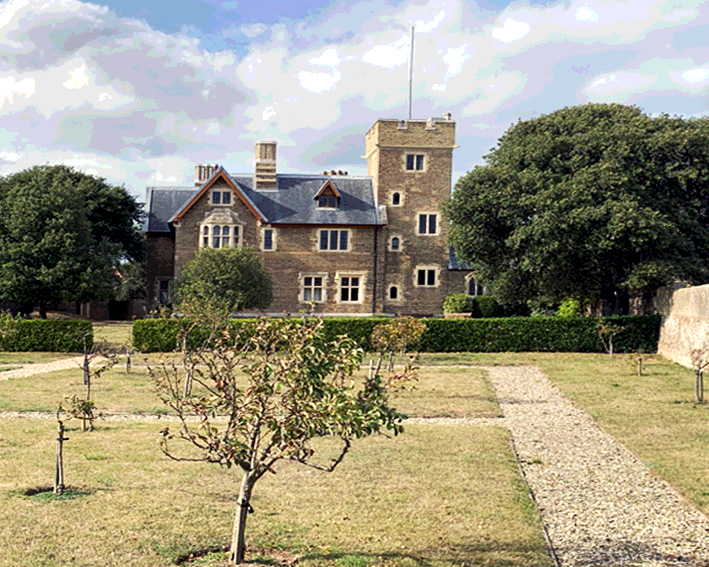 The Grange
The Grange
Augustus Pugin, the high priest of neo-gothic architecture, decided in 1843 to remove himself from London to Ramsgate. Having converted some years earlier to Catholicism, he designed himself a large home with a spiritually sympathetic ambiance at one end of Royal Esplanade. At his own expense, he added the adjacent St Augustine’s church. The Grange is not the easiest to spot, being tucked away in what resembles a Norman enclave. It is most easily viewed from the churchyard, where the separation between gable and tower at either end makes the house unmistakable. The tower was not just for ornament: it gave Pugin somewhere to place a telescope with which to observe vessels at sea. Though the exterior of The Grange is more pleasing than exciting, the interior is strikingly opulent and ornate. The house was saved from redevelopment in 1997 by the Landmark Trust, which now makes it possible to arrange visits, or even book a room.
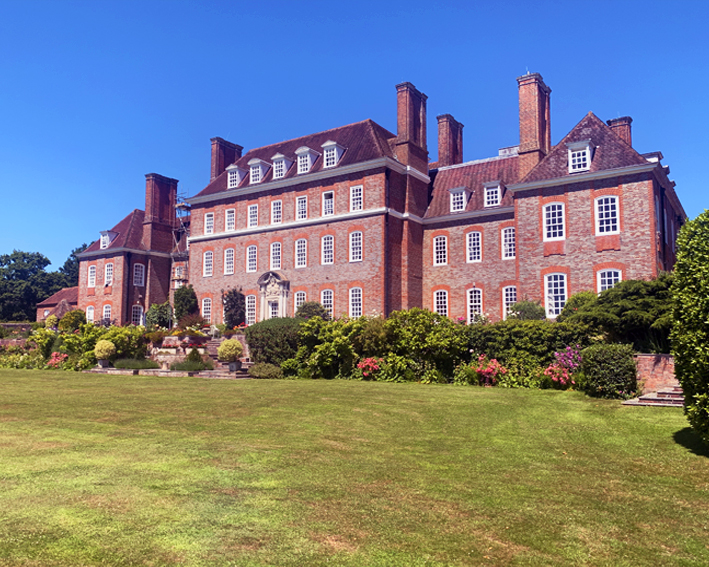 Great Maytham Hall
Great Maytham Hall
Though its name may be unfamiliar, Great Maytham Hall has a claim to literary fame. It was here that, during her nine-year stay, Frances Hodgson Burnett discovered a hidden garden that gave her an idea. The estate, near Rolvenden, had travelled a familiar path, from medieval manor to fashionable C18 construction, complete with broad gravel drive. The new building, completed in 1760 by the Monypennys, lasted only 133 years before suffering a serious fire. The two wings survived, however, and from 1909 Lutyens rebuilt the main house two floors higher than its predecessor. The £24,000 bill was footed by MP Jack Tennant, who’d chosen the site after hearing it had the least rainfall in Kent. Hodgson Burnett published ‘A Secret Garden’ even before the work was completed, having herself restored the garden as a haven to write in. After Tennant’s death, the house became a home for the blind, and fell into disrepair before being converted to flats.
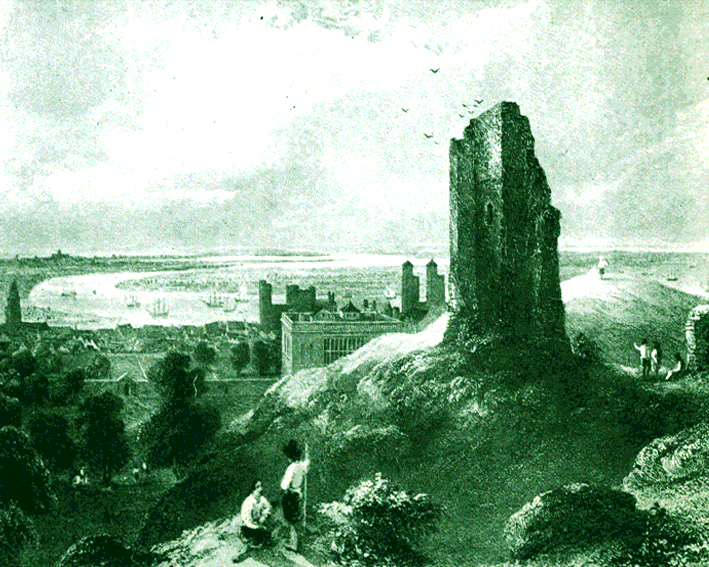 Greenwich Castle
Greenwich Castle
The top of the hill in Greenwich Park was chosen in 1437 by the late Henry V’s brother Humphrey, the Duke of Gloucester, as the site for a folly – a small tower called Mirefleur. A century later, now significantly larger and possessing even a moat and gatehouse, it was known as Greenwich Castle. Henry VIII made use of it as a hunting lodge, while it doubled as somewhere to keep a mistress within easy walking distance of Placentia Palace. In 1605, Henry Howard, the Duke of Northumberland and Lord Warden of the Cinque Ports, moved in and added a garden, among other improvements. Having been badly damaged by the Parliamentarian army, the site was transformed in 1675 for a quite different purpose. The castle was demolished, and Flamsteed House built for the first Astronomer Royal. It subsequently became much better known as the Royal Observatory, home to the Greenwich Meridian.
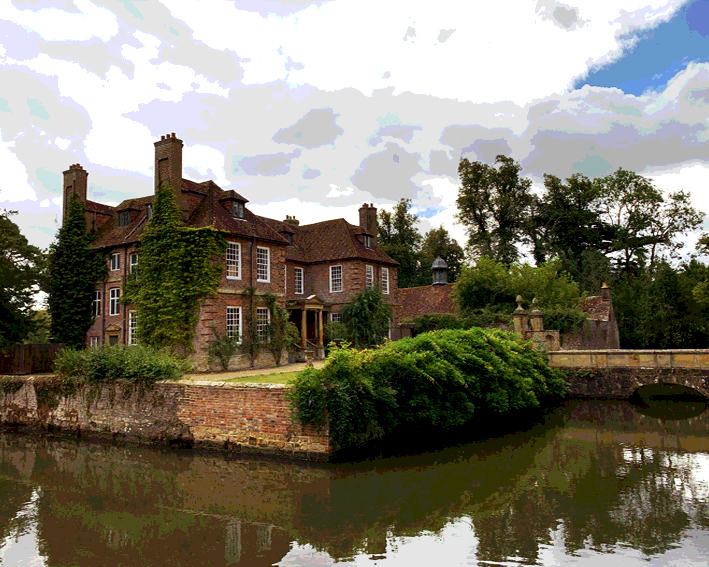 Groombridge Place
Groombridge Place
What is surprising about Groombridge Place is how little has happened there. The earliest record of a manor house is from 1239, when a small castle was built with a moat. Ownership then rattled through numerous aristocratic hands, including the de Cobhams, the de Clintons, and the Sackvilles. The current house was built in 1652 by barrister Philip Packer, with advice from his friend Christopher Wren. After his death, the deserted house may have become a haunt of the notorious smugglers the Groombridge Gang. Arthur Conan-Doyle used to think the house haunted. And that’s it. The real beauty of Groombridge is its beauty. The house, entirely surrounded by its water moat, looks the quintessential old English manor. Furthermore, the extensive gardens are a delight; the diarist John Evelyn, also a noted horticulturalist, assisted Packer with their design. Though the house is private, the grounds are open to the public, and include a discreetly distant ‘Enchanted Forest’ for youngsters.
 Hadlow Castle
Hadlow Castle
Of all Kent’s lost treasures, Hadlow Castle is perhaps the most regrettable. It was an architectural masterpiece, built in the late C18 after the fashion of Horace Walpole’s neo-gothic castle, Strawberry Hill. Its visual impact was not unlike Happy Potter’s Hogwarts. Yet, after suffering the ill effects of military occupation during WW2, most of it was demolished in 1951. Some elements survived, including the Entrance Arch in the High Street and, most visibly, the 210-foot tower that still looms large over Hadlow. Known as May’s Folly after the Walter May who had it built, the Tower is the tallest folly in Britain. Having served as a watchtower in WW2, it was seriously damaged in the 1987 storm, and the 40-foot lantern at its summit was later removed. It is now in private hands. Although intriguing in its own right, its presence is almost painful as, Ozymandias-like, it reminds us of what’s been lost.
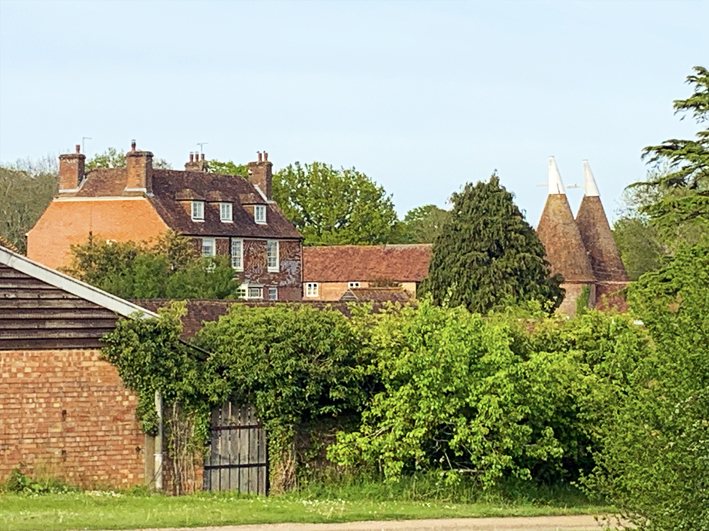 Halden Place
Halden Place
Lying a mile or so north of Rolvenden in the Weald, Halden Place was a house of historical significance, insofar as it is said to have been one of the many residences of Lady Jane Grey, the unfortunate Nine Days’ Queen. It got its name from its original owners, the de Halden family, who built it in the C14. It passed by marriage to the Guldefords, whose Sir John obtained permission from the new King Henry VII to fortify it with crenellations in 1487, even though he had previously been Edward IV’s Comptroller of the Household. It was evidently a grand affair, even having a moat. However, it is no longer to be seen. It was replaced in 1740 with today’s large farmhouse, complete with two oasts. The remains of the moat do survive, however, and the de Guildford arms, recognisable from the Christchurch Gate in Canterbury, can be seen on the C17 stable block.
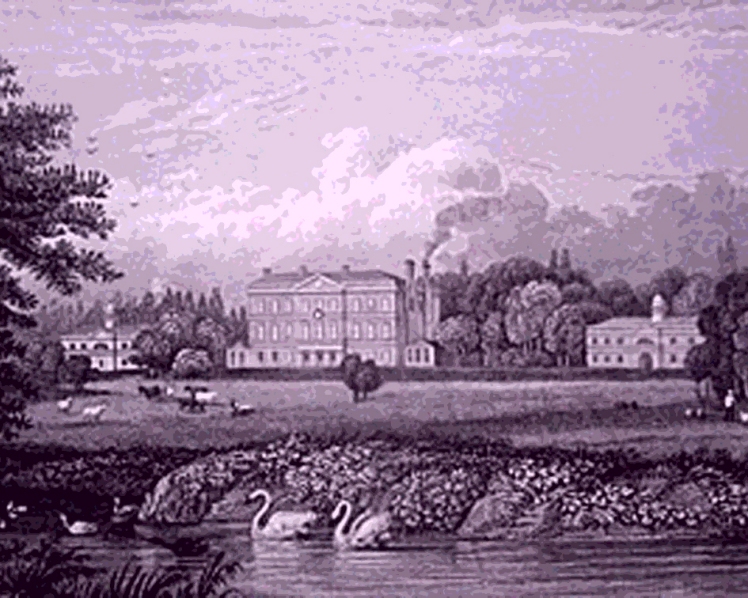 Hales Place
Hales Place
The Hales baronets were movers and shakers in C17 politics. The first, known as Kent’s richest commoner, was a committed Royalist in an era of republican insurgency, and his grandson a commander in the Kentish revolt against Parliament in 1648. Although they had three large properties in Tunstall – one never completed – it was not enough. In 1675, the 3rd Baronet bought Place House, a property to the north of Canterbury. A century later, his descendants used its site to build a new home, a vast edifice truly worthy of the family name. Constructed in the late 1760s, Hales Place enjoyed a magnificent view down over the city. Eventually, however, the family ran out of money. The house was sold in 1880 to French Jesuits who turned it into a college. A half-century later, it was demolished. Hales Place is now a housing estate that, with supreme irony, is home to large numbers of Canterbury’s legendarily left-wing student population.
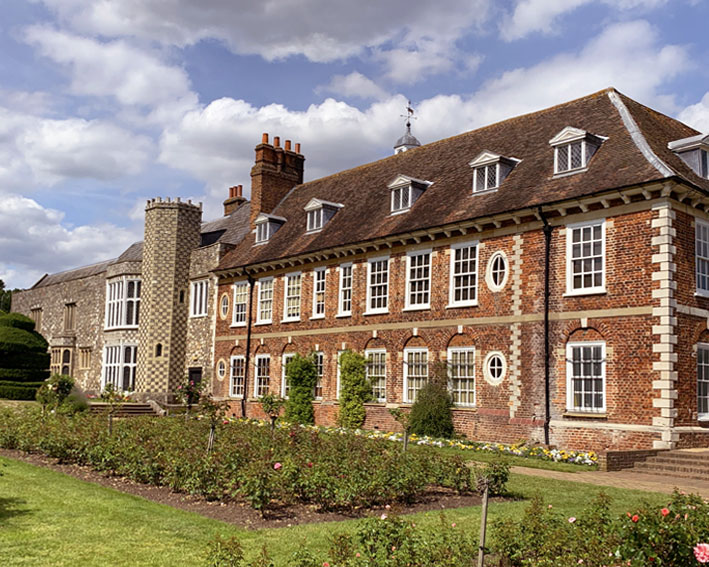 Hall Place
Hall Place
It is worth travelling to Bexley just to see the architectural equivalent of a griffin. The original Hall Place was splendid enough, built in 1537 for a rich merchant called Sir John Champneys with stone from a dissolved monastery. Constructed around an impressive Great Hall, the house’s outside walls featured an attractive checkerboard design. All was well until 1649, when another rich merchant, called Sir Robert Austen, wanted something twice as big, and tacked a red-brick building onto the end of the old stone one. He at least had the sense to make them the same height, though one wonders why his wife didn’t talk him out of it. It didn’t deter plenty of socialites from buying or renting the house thereafter, until the US Army interrupted the gaiety in WW2. After serving as a girls’ school and a municipal building, the chimera was turned into a tourist facility in 2005. Admission to its gloriously coherent gardens is free.
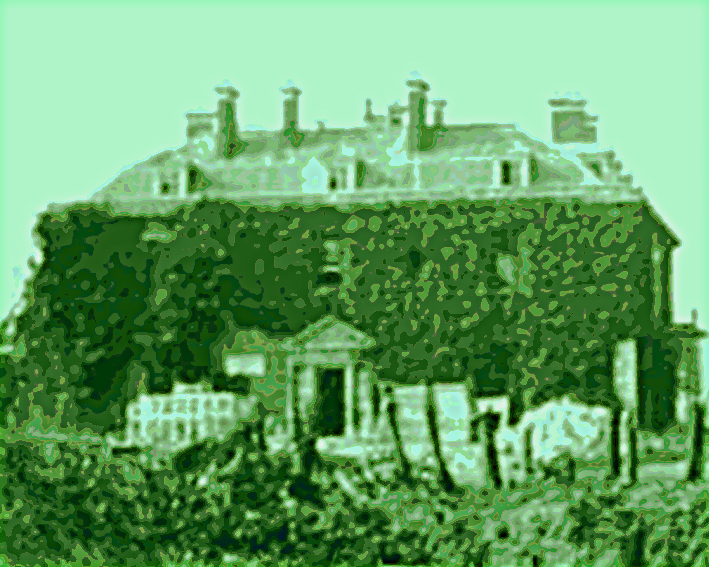 Hayes Place
Hayes Place
It may be little remembered now that it is gone, but Hayes Place in Bromley once figured in history. A house already stood there in the C15, but prime minister William Pitt the Elder, Lord Chatham, bought it in 1754 and built a new one, where his eminent son was born and he himself would die. The son, Pitt the Younger, moved in 1785 to Holwood House a mile further south, where he and Wilberforce embarked on ending slavery. About a century later, Hayes Place was acquired by Everard Hambro, the eminent banker, whose son Eric sold it for development in the 1920s. The house, once a focal point of democracy that had attracted many of the late C18’s major parliamentary figures, was demolished in 1933, and the estate replaced by acres of suburban housing. Nothing remains of its historic significance except some street names: Pittsmead Avenue, Chatham Avenue, Hambro Avenue.
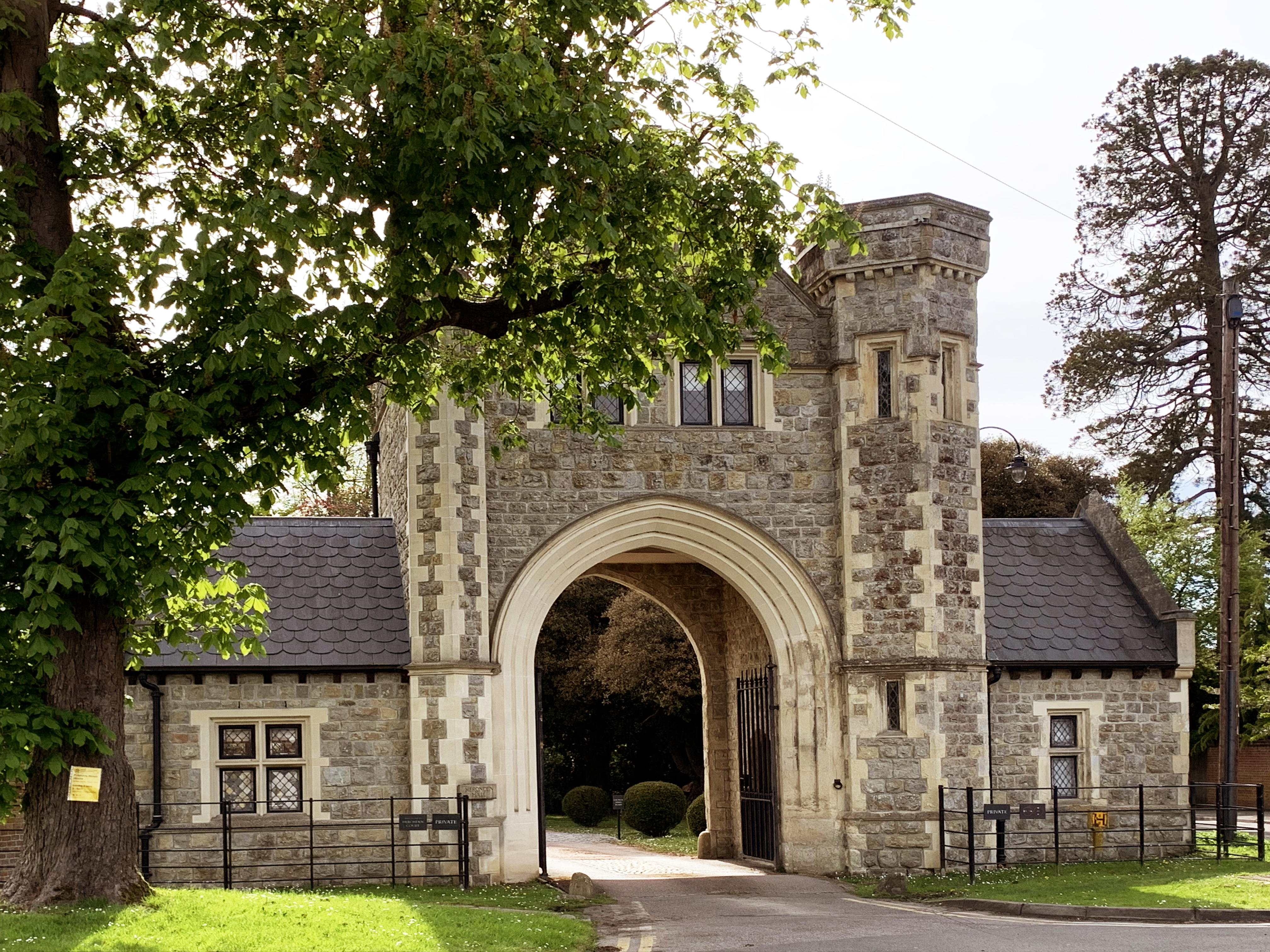 Heronden Hall
Heronden Hall
Nobody heading west out of Tenterden can miss the grand gateway at the junction with Smallhythe Road. What lies beyond is the large estate that belonged to the Heronden family from the early C13 onwards. As it was broken up in the C17, there are now four large houses named ‘Heronden’. The foremost, built in 1585, became known as Heronden Hall. It was acquired in the 1630s by John Austen, Mayor of Tenterden and brother of the Sir Robert Austen who owned Hall Place in Bexley. Sir Robert’s son, also Robert, inherited Heronden Hall from his uncle; but, owing to a family rift, Robert’s grandson left the house to a cousin. It was pulled down in 1782, and in 1853 the current Heronden Hall, a curious Tudor Gothic affair, was built for one William Whelan. Among its more recent owners was the 10cc drummer and video director Kevin Godley, to whom that imposing gatehouse also belonged.
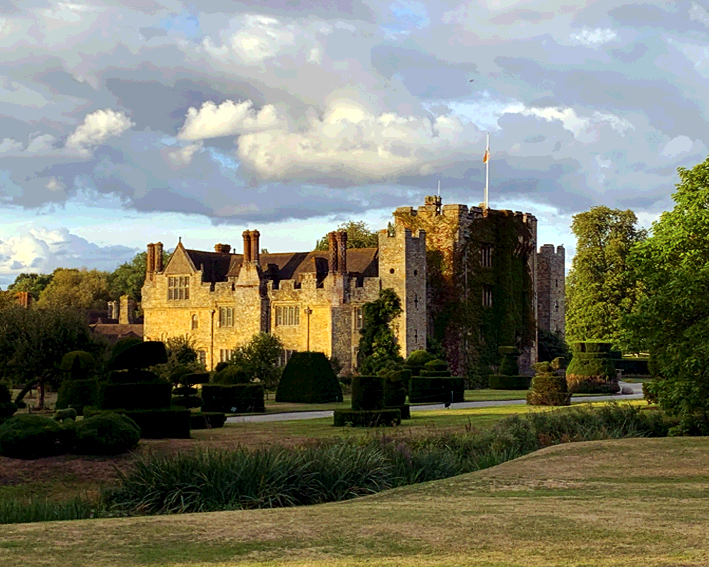 Hever Castle
Hever Castle
The home of Anne Boleyn is one of Kent’s truly unmissable visits. A crenellated C13 manor house, it is the quintessential English castle in having not just a moat, a maze, and magnificent gardens, but also a gruesome history. It was home to Baron Saye and Sele, the man who earned the particular displeasure of Jack Cade’s rebels in 1450 and was parted from his head. Two centuries later it was the turn of Thomas Boleyn, who evaded the axe himself but saw two offspring dispatched by Henry VIII. Expropriated as a royal residence, the Castle was next occupied by Anne of Cleves. Thereafter it decayed steadily until it was rescued by Lord Astor, America’s wealthiest man. Today, aside from welcoming wide-eyed visitors, the castle offers bed and breakfast. There is nothing so unforgettable as a stroll beside the timeless lake, followed by a night in a room where an apparition carrying her head on her arm would be no great surprise.
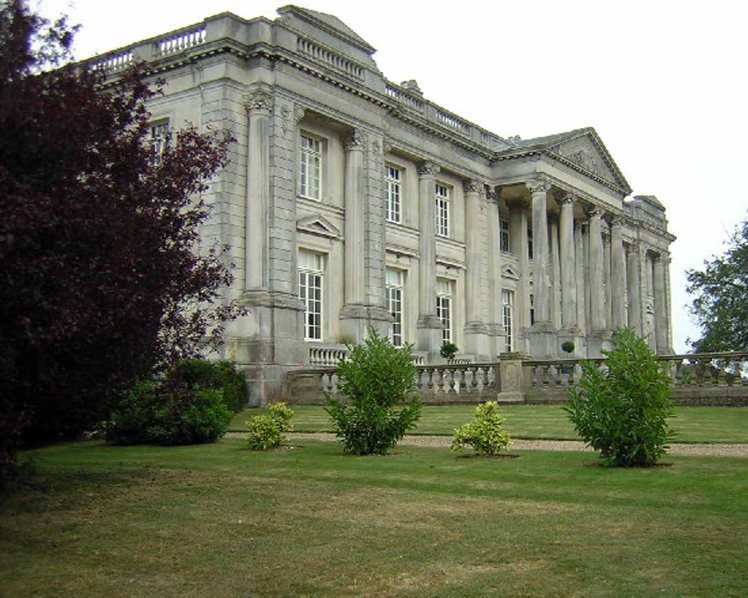 Higham Park
Higham Park
Higham Park takes its name from the de Heghams, to whom Edward II granted lands at Bridge in 1322. Two centuries later, it was bought by young Thomas Culpeper, Henry VIII’s friend who would be executed for his alleged dalliance with Queen Catherine Howard. So began the Park’s long association with the rich and famous. Among its many visitors are said to be Mozart, Jane Austen, and even French president de Gaulle. It got a new lease of life in 1901, when banker William Gay installed his exotic plant collection and built a huge water-garden incorporating England’s largest domestic canal. In 1910, the super-rich Countess Zborowski bought the estate for £17,500, leaving it to her 16-year-old son Louis when she died a year later. A motor-racing fan, he turned the stables into an engineering works; the cars that inspired Ian Fleming’s ‘Chitty-Chitty-Bang-Bang’ were built there. The house was ruined during WW2, but is now being restored.
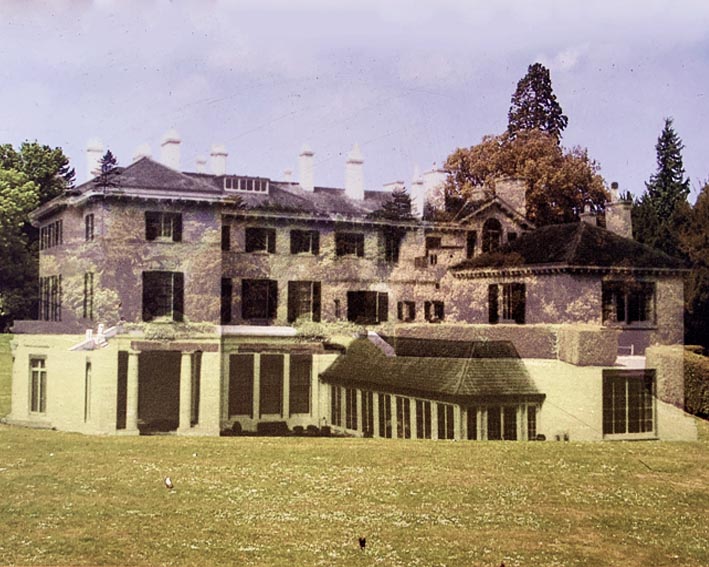 High Elms
High Elms
So glorious is the 250-acre High Elms Country Park on the North Downs near Farnborough that Men of Kent might ask: why didn’t Kentishmen put up a fight before letting London pinch it? In the C11, the estate was granted to Bishop Odo, no doubt for hunting. It was purchased around 1800 by banker Sir John Lubbock, one of whose grandsons, Lord Avebury, was a personal friend of Charles Darwin on the other side of Downe village. Sold to Kent County Council in 1938, it became a training centre for nurses; and in 1967, just two years after falling under the aegis of London County Council, the Lubbocks’ magnificent mansion mysteriously burnt down. To be fair, London is doing a decent job of looking after its charge. Now a nature reserve, High Elms provides a delightful leisure facility, laying on a wealth of country terrain in addition to some formal gardens and an ecologically conscious visitor centre.
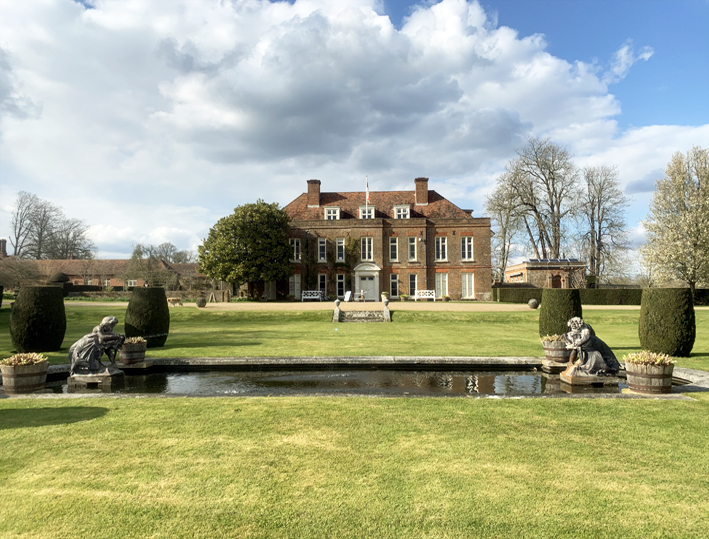 Hole Park
Hole Park
Rolvenden’s Hole Park is now best known for its splendid gardens; but the house at its centre has a track record. There was originally a Wealden farmhouse on the site, which had a new Queen Anne house added to the front in 1720. It was owned for generations by the Gibbon family, from whom Edward Gibbon – author of ‘The Decline and Fall of the Roman Empire’ – claimed his descent. The farmhouse was demolished in 1832 by the MP for Rye, Thomas Gibbon Monypenny, who built a new house in Elizabethan style around the later edifice. Like so many large Kentish houses, it was taken over in WW2 for use as a barracks, and left in too bad condition for the owners, the Barhams, to move back into. Instead, the current owner’s father decided to strip it back to the 1720 construction and erect a new house suitable for modern living. Nowadays the 16-acre gardens draw 15,000 visitors a year.
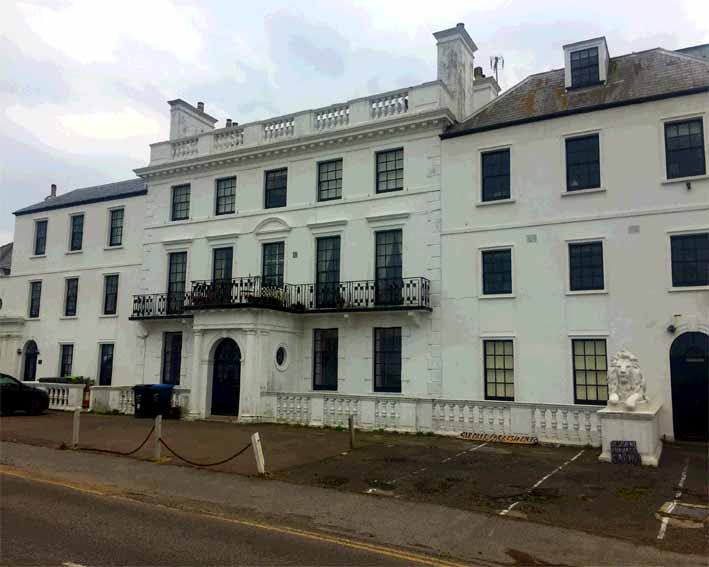 Holland House
Holland House
In a glorious position overlooking Kingsgate Bay, Holland House was built around 1750 by Henry Fox, 1st Baron Holland (1705-74), Britain’s thoroughly dissolute and corrupt Secretary of War, who named it after his London abode. Although now unremarkable of itself since its grand portico was removed, this Georgian house was just the pivot of Fox’s equivalent of a personal theme park. The building behind it, now the Port Regis care home, was intended as a convent, but instead became accommodation for visitors and staff. He later built Kingsgate Castle on the cliff-top as his stable block, and the Captain Digby inn in tribute to his seafaring son-in-law. Most curiously, however, he dotted extravagant follies all around the estate, including an arch to commemorate King Charles II’s chance landing during a storm in 1683. A later owner was John Lubbock, 1st Lord Avebury, who enlarged the Castle as his residence. Both House and Castle are now divided into apartments.
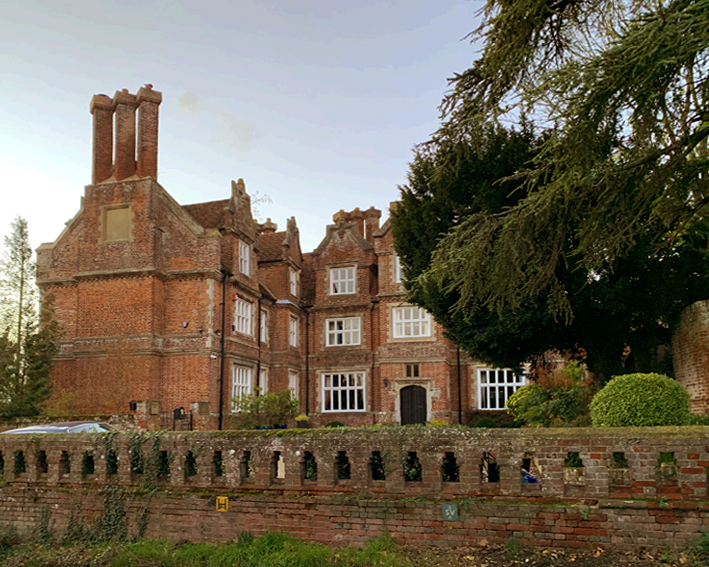 Hollingbourne Manor
Hollingbourne Manor
The imposing C16 house on the way up Hollingbourne Hill will be magnificent when it is finished. It was intended to be an E shape, but the north wing was never completed, so it is now a presumably permanent Ł. There was already a manor in Hollingbourne at the time of Domesday. Like the local church, it was seriously damaged by the Dover Straits earthquake of 1382. After Henry VIII dissolved the monasteries in 1539, the estate fell to the Dean & Chapter of Canterbury. The current building was erected in 1570: a classic two-storey Elizabethan construction of red brick and tile roof, with stone-surrounded windows and chimneys set at 45° to the stacks. It was bought in 1590 by the ubiquitous Culpepers, who retained it for four generations. The estate thrived by dint of local agriculture, supported by three corn mills and one for papermaking, that were finally overtaken by the Industrial Revolution. The house is still privately owned.
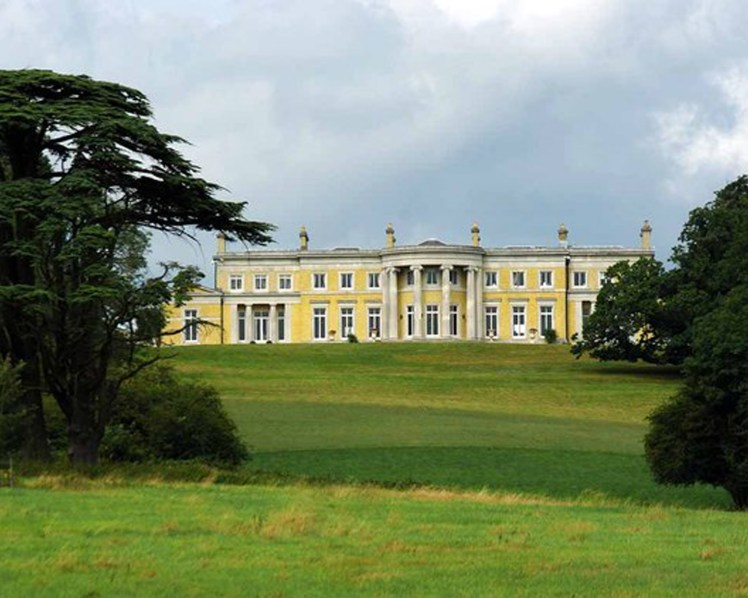 Holwood House
Holwood House
The Holwood estate at Keston was the site of an Iron Age fort that owner William Pitt the Younger vandalistically levelled to make way for a landscape garden. The grounds also contained the oak tree where, in 1788, he and Wilberforce plotted the abolition of slavery. Though called ‘the original Chequers’, Pitt’s Holwood House was thought disappointingly modest for a prime minister, and he did get Sir John Sloane to expand and improve it. The house eventually was burned down, however, and replaced by the current structure in the 1820s. This elegant neo-classical affair was commissioned by the Sheriff of Kent, John Ward, and designed by Decimus Burton, the maestro of the Greek Revival. In the C20 it became a corporate headquarters before reverting to residential. An outbuilding was demolished in 2007 to gain consent for 78 new-build flats virtually in its backyard; but they were named after Wilberforce, so that was fine.
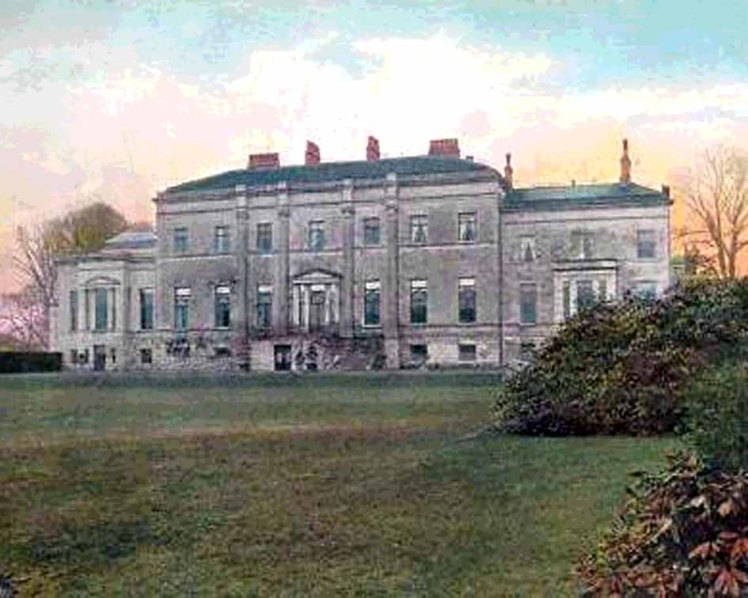 Hothfield Place
Hothfield Place
All that is left of Hothfield Place today is a balustrade tucked away at the edge of a privately owned copse abutting Hothfield church. The house was built in 1784 by Lord Hothfield to replace an earlier E-shaped structure nearby. Originally a plain rectangle, it was expanded a century later with further rooms at both ends and a monumental porch to the south. At that time, its extensive estate ranked as one of the five most affluent in England. It was requisitioned as a PoW camp in WW2, and subsequently wrecked by squatters. A new owner, motor manufacturer Sir Reginald Rootes, chose in 1954 not to restore but to demolish it, putting in its place a smaller house that is now part of a brain-injury rehabilitation centre. Some excellent countryside amenities remain: the Greensand Way crossing the site allows an impressive experience of the magnificent landscape garden, while the adjacent Hothfield Common is a splendid nature reserve.
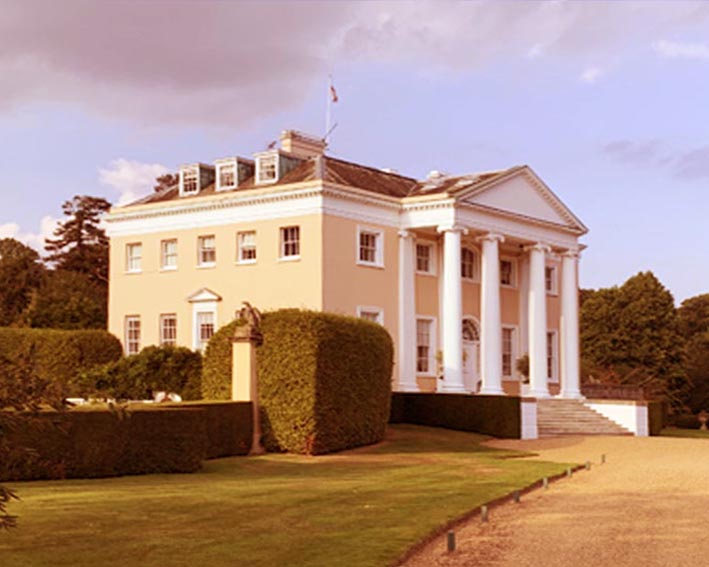 Howletts House
Howletts House
Today’s popular wildlife park at Bekesbourne, south of Canterbury, lies on the site of a 300-acre estate, owned in Tudor times by Sir Henry Palmer, which for several generations became the seat of the eminent Hales family. Their manor house was replaced in 1787 by the current grand Palladian affair, built for Isaac Baugh. Like the well-known National Trust property in Cobham, it was originally known as Owletts. In 1816, it passed to the Gipps family, who planted an arboretum that was badly damaged in the 1987 Great Storm, by which time casino boss John Aspinall had established his first private zoo there, in 1957. The 30-bedroom house itself, secluded behind a tall wall in the north-west corner of the remaining 53-acre estate, is now rented by the Aspinall Foundation to Aspinall’s son Damian for £2,500 pounds a month, which sounds quite a bargain. Contrary to rumour, the gate does not bear a sign reading “Beware of the Lion”.
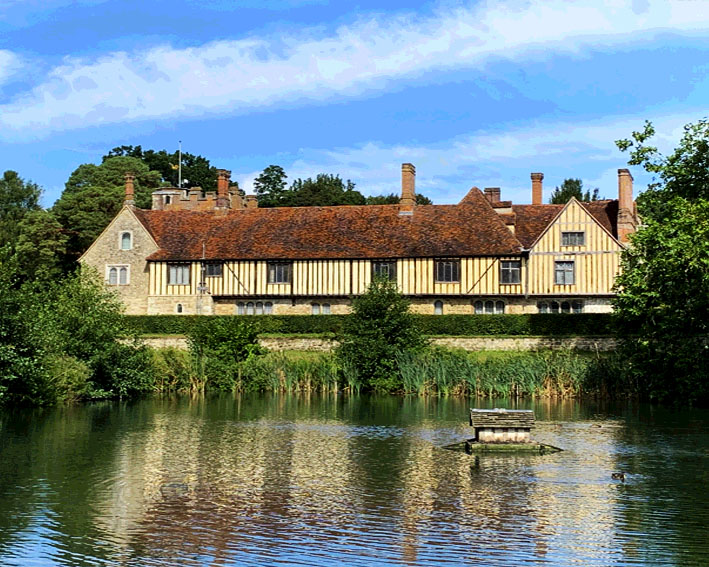 Ightham Mote
Ightham Mote
For a scheduled ancient monument, Ightham Mote is remarkably short on history. It was built in the mid-C14, became the possession of the Selby family for nearly 300 years from 1591, and thereafter passed to Sir Thomas Colyer-Fergusson. In 1953, it was bought by an American, Charles Robinson, who gifted it to the National Trust. The public is therefore able to see for itself the true significance of Ightham Mote: it is an architectural gem. In addition to its obvious visual appeal, enclosed picturesquely by its moat, it has survived all the changes of hands pretty much intact, and gives a strong impression of what a medieval manor house must really have looked and felt like. True, there have been fashionable decorations and ornaments added through the ages; but the fundament of the house, turned inwards upon its courtyard, has never been ‘improved’. Together with its antiquities, it is one of Kent‘s most unspoiled attractions.
 Ingress Abbey
Ingress Abbey
Ingress Abbey in Greenhithe today looks more like a chateau than an abbey. In the mid-C14, a Thameside manor played host to the Dominican Priory established by Edward II. When it was disbanded for profit by Henry VIII, the Abbess of Dartford put a curse on him, intended to apply to any male subsequently inheriting the estate; Henry shrewdly handed it to Anne of Cleves. The estate subsequently passed through many hands, including Viscount Duncannon in the mid-C18, who improved it and reportedly had Capability Brown develop the gardens. The house was demolished in 1820 to accommodate a dockyard that never came to pass. A rich lawyer called James Harmer built the current house in 1833, equipping it with numerous caves, follies, and grottoes that survive today. Most of the estate is now a housing development, and the house has been occupied during the C21 by an electrical equipment company, a pop singer, and a Lithuanian consulate.
 Kearsney Abbey
Kearsney Abbey
Now just a memory, Kearsney Abbey glowed brightly for a while, and left behind a lasting legacy. It was the brainchild of John Minet Fector, a Dover businessman. During the economic slump following the Napoleonic Wars, he benevolently decided to create local employment by investing in a grand new house. Set beside the River Dour on his late father’s 11,000-acre estate north-west of Dover, it was to be a grand affair in neo-Gothic style; he called it an Abbey, even though it was in no sense a religious institution. He died before its completion in 1922. It continued as a private residence, changing hands many times, until WW2, when it was requisitioned for the Army and ruined. It was mostly demolished afterwards owing to dry rot, with only the old billiard room (now a tearoom) surviving; but a spirited battle to preserve it from housing development meant that the public today can enjoy the extensive grounds and lakes.
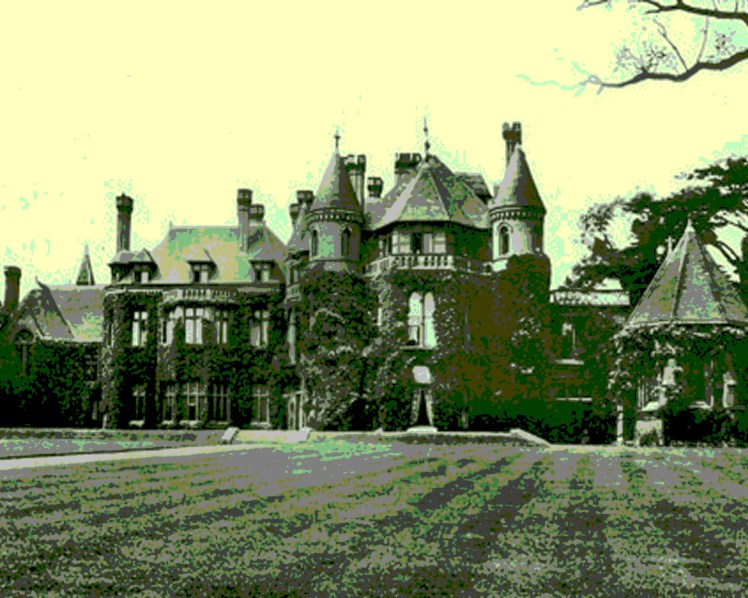 Kelsey Park
Kelsey Park
Kelsey Manor was one of the most characterful houses in Kent until it was demolished a century ago. A mansion on the site in Beckenham survived for around 400 years until it was replaced ca 1800. Peter Hoare, from the banking family, bought it in 1835 and made an excellent job of turning it into an elaborate Gothic Revival manor: one that could have been tailor-made as a horror-movie set. Some of the estate was later sold for houses of the Arts & Crafts movement. The manor itself was converted to a convent in 1895, and six years later a girls’ school. In 1911, Beckenham Urban District Council acquired the estate and opened it up to the public. The house did not survive occupation by the Army during WW1, and was condemned in 1921. Most of the estate is a public park today, but part was occupied from 1968 by the Kelsey Park Sports College, and then the Beckenham Harris Academy.
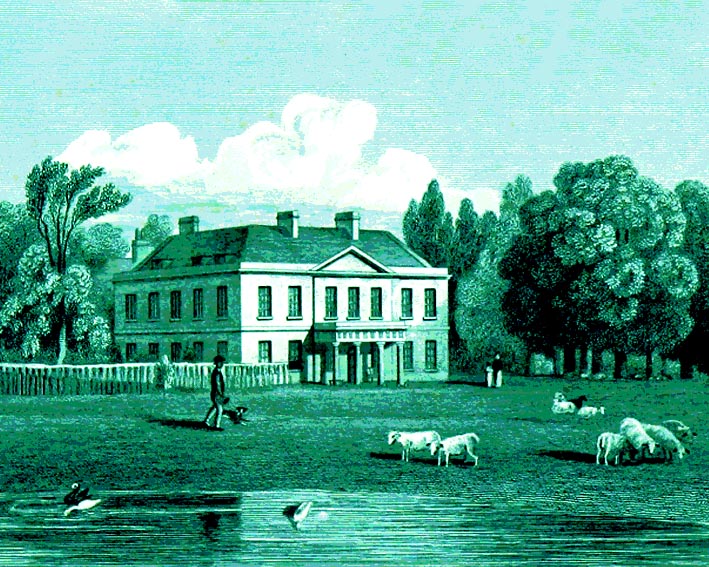 Kippington House
Kippington House
The Kippington estate, south-west of Sevenoaks, was purchased in 1630 by Thomas Farnaby from the proceeds of his London school. He or his son built a grand house there that in 1716 featured as one of the bird’s-eye views in Harris’s ‘History of Kent’. Sir Charles Farnaby substantially rebuilt it after inheriting it in 1760, possibly incorporating ideas for the interior by Robert Adam, whom he consulted. He sold it in 1796 to Francis Austin, who on Humphry Repton’s advice added a Doric portico and opened up a view over Montreal Park. His great-nephew John Austin sold it in 1865 to build Capel Manor. The new owner, William Thompson, started monetising the land as early as the late C19 by building villas on it, starting a process that led to the area being covered in housing today. The house re-opened as a rest home in 1951, but was then converted to residential.
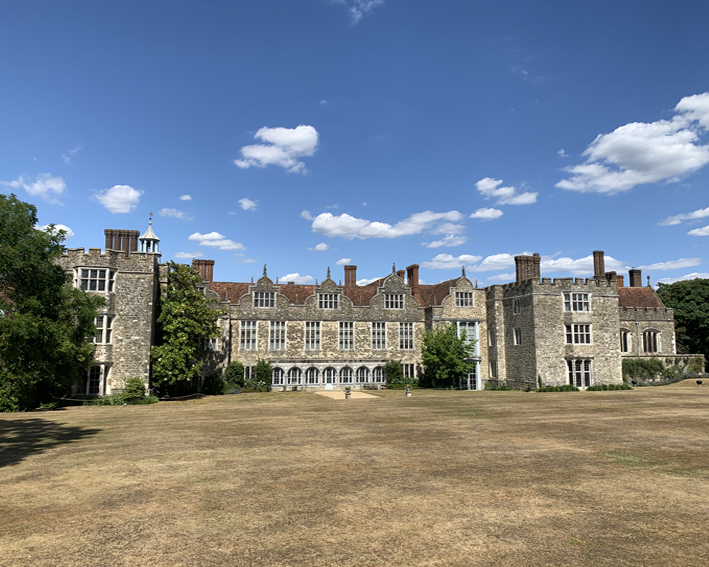 Knole
Knole
Knole Park contains a delightful deer park, but also a house that leaves an unpleasant taste in the mouth. Part-owned by the National Trust, it is reputed to be the largest private home in the country, with 365 rooms, 52 staircases and 7 courtyards. There was a reason for this overkill: it was completed in 1608, on the site of a historic medieval manor, for the express purpose of showing off. The builder was Sir Thomas Sackville, who’d been gifted the 1,000-acre estate as his reward for racking up egregious debts on James I’s behalf. He spent an arm and a leg building and staffing it, the one consolation being that, with its lavish furnishings, the interior is still a sight to behold. The place was however passed down through centuries of Sackvilles, few of whom distinguished themselves except by their dissolution and profligacy. Today the grounds, located surprisingly conveniently off Sevenoaks High Street, are a popular haunt for locals.
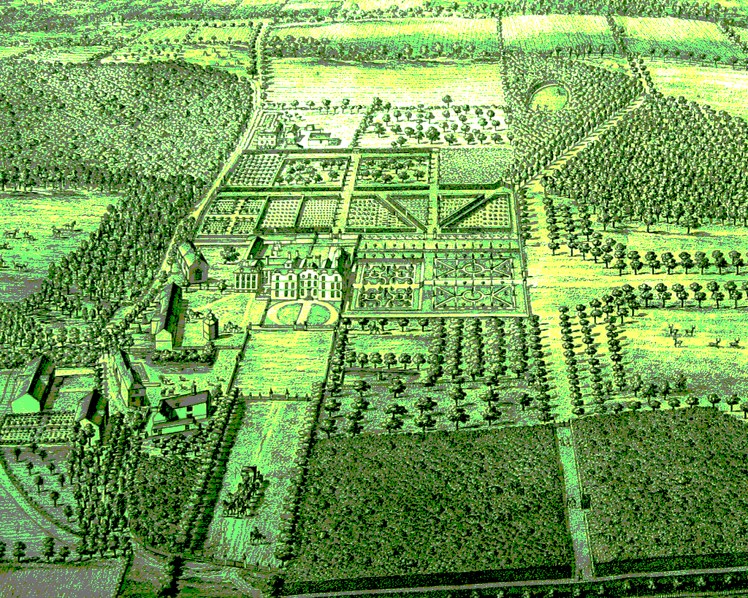 Knowlton Court
Knowlton Court
Two miles south-east of Goodnestone Park lies Knowlton Court. The house was built by Sir Thomas Peyton in 1585 on another site originally belonging to Bishop Odo. Although not steeped in history, it did have two most unfortunate owners in succession. One was his grandson, the 2nd Baronet, who supported the King in the Civil War. He came a cropper when the Parliamentarians triumphed, and the house was pillaged while he was under arrest; he did at least recover it upon Charles II’s restoration. Lacking money, his daughters sold the house to Admiral Sir John Narborough, whose wife was the next unfortunate. After her husband died at sea, she remarried; but her new husband, another naval commander, took her two sons with him, and all three were drowned in the Scilly Naval Disaster of 1707. The house then spent two centuries in the hands of the D’Aeth family. It is now owned by the equestrian Fox-Pitt family, and available for weddings.
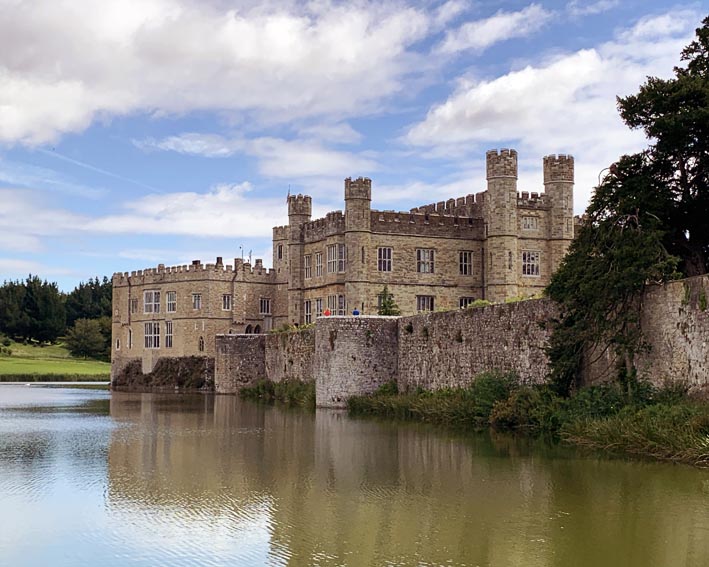 Leeds Castle
Leeds Castle
Though others may dispute the claim that Leeds Castle is the loveliest in the world, it is undoubtedly magnificent on a sunny day, and has history that few can match. Its site, originally occupied by Led, a Saxon chief, consists of two islands in a lake formed by the River Len. A Norman stone fortress was erected there by Robert de Crèvecoeur in 1119. As well as undergoing two sieges, the Castle repeatedly changed hands between royals and their clients over the centuries. Ironically, it was spared destruction in the Civil War because owner Sir Cheney Culpepper supported the Parliamentarians. In 1926, it was purchased by Lady Baillie, who renovated it before making it available as a military hospital in WW2. After being introduced to a world audience in 1949 by ‘Kind Hearts and Coronets’, it hosted more than one international summit. Now in the hands of a trust, it is home to spectacular summer concerts in the grounds.
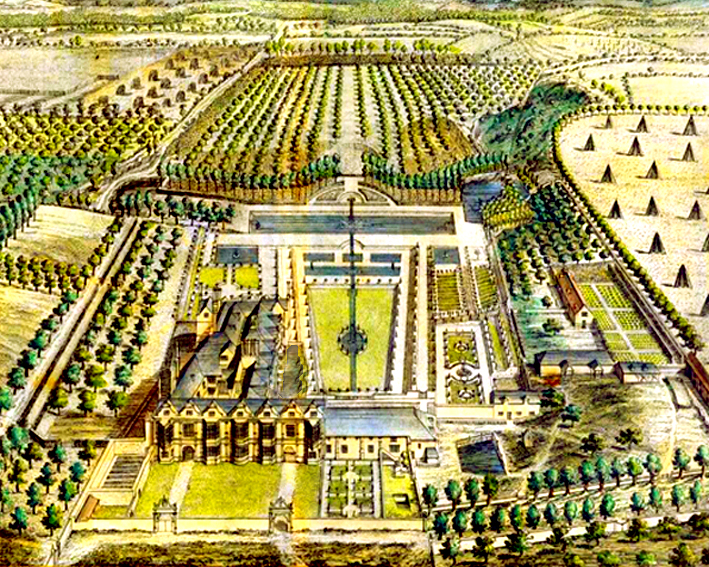 Leeds Priory
Leeds Priory
Situated a mile west of Leeds Castle, the site usually remembered as Leeds Abbey was originally a priory called St Mary & St Nicholas, built for Augustinian canons by Robert de Crevecoeur, who simultaneously rebuilt the castle in stone. The priory, which possessed a stream and a mill used for fulling, survived until 1539, when it suffered badly in the Dissolution of the Monasteries. Henry VIII leased the estate to the Lord Deputy of Ireland, Anthony St Leger, along with 300 acres of land and numerous houses. The mansion he built there passed through several private hands before being bought in 1765 by wealthy politician John Calcraft, who already owned Ingress Abbey. He expanded the house while Capability Brown landscaped the grounds to incorporate a large lake, at vast expense. After St Leger died suddenly at 46 in 1772, the property deteriorated rapidly, and was demolished in 1790. Only the ruined dovecote remains.
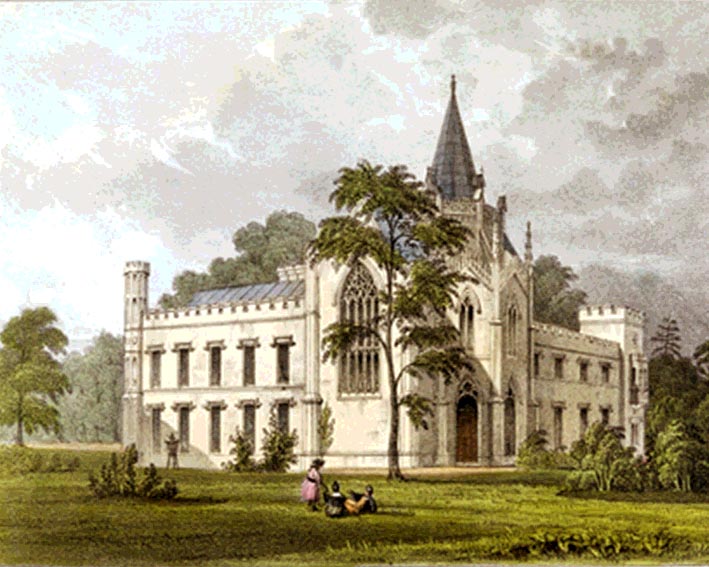 Lee Priory
Lee Priory
Equidistant from Littlebourne and Ickham, Lee Priory had the outward appearance of a convent. It is first known to have been owned by the Leigh family, and to have passed via the Southlands to Thomas Barrett (1744-1803). With the encouragement of Horace Walpole, Barrett got architect James Wyatt to rebuild it so impressively in the Strawberry Hill Gothic style that Walpole acknowledged it as an even better example than his own Twickenham original. It passed next to Sir Samuel Egerton Brydges, originally from Wootton, who set up his Lee Priory Press there. Around 1865, the house was expanded and reworked by the great Gothic Revival architect Sir Gilbert Scott. Disastrously, it was demolished in 1953, although the former laundry survives as Lee House. Barrett’s study, known as the Strawberry Room, surprisingly also still exists: it was preserved at the time of demolition, and can even be visited at the Victoria & Albert Museum.
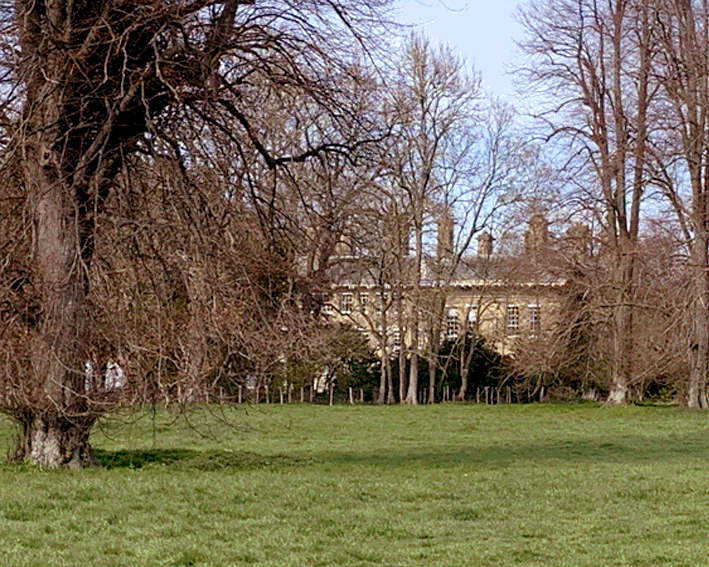 Lees Court
Lees Court
The Lees Court estate at Sheldwich used to be vast: in 1900, it was still 85,000 acres. It had been purchased around 1600 by the Sondes family, and the current house was built in 1654 by Sir George Sondes whilst in prison. It is known for one notorious event: the occasion when, in 1655, one of his sons murdered the other there, and quickly paid the ultimate price. The house was gutted by fire in 1910, but was completely rebuilt. It remained in the family’s possession until a quarter century ago, when it was sold off and turned into apartments. Though the surviving Countess Sondes resides in New York, she still grows crops at a nearby farm using environmentally friendly methods to make oils for beauty products. The local estate is a mere shadow of its former self, with a pitiful 2,663 acres, but still boasts impressive gardens, albeit for the benefit of residents only.
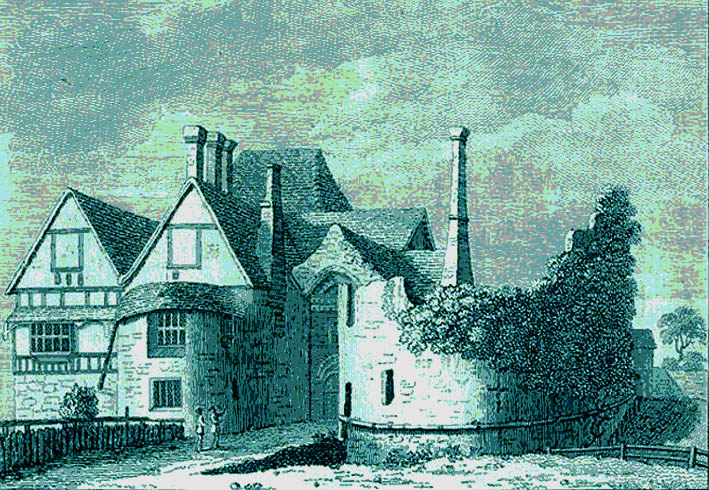 Leybourne Castle
Leybourne Castle
Leybourne lies at a strategically valuable point close to the Medway on the Greensand Ridge. Consequently, it shows signs of having been inhabited since prehistoric times. Originally called Lillebourne after the Lilla tribesmen and the bourne (stream) they dwelt beside, it was allocated in the C11 to William I’s brother Odo, and a castle, probably wooden, was built there. It passed into the hands of the Leybournes, Anglo-Normans already granted lands in Yorkshire, who erected a stone castle in the C13. After Sir Roger de Leybourne died in France while on a pilgrimage, Edward I and Eleanor of Castile visited his son and heir Sir William there in 1286. The curtain wall disappeared around 300 years ago, and the gatehouse, bordered by two semi-circular towers dating from 1275, was incorporated into a farmhouse built in the C16. Attractively developed around a hundred years ago, it is now in private hands and shielded from public view.
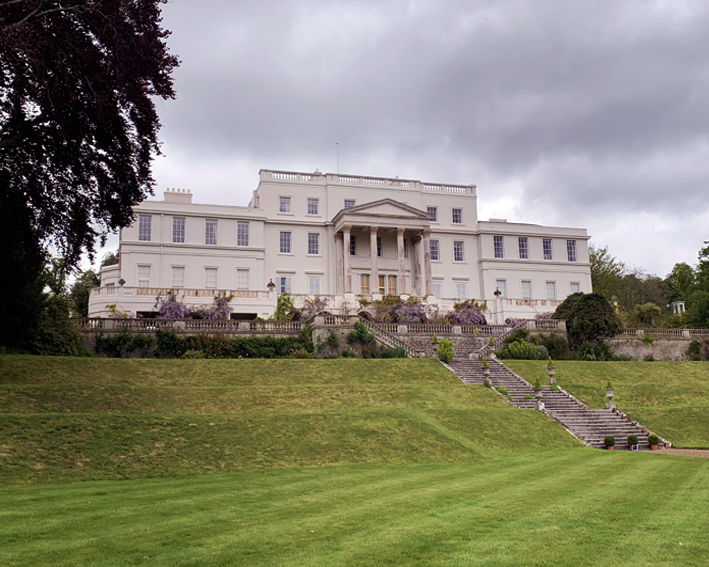 Linton Place
Linton Place
In the C14, Linton Park contained a house known as Capell’s Court, named after the de Capell family. It had a number of further owners until it was bought early in the C18 by Robert Mann, who in 1730 built the current house in its place. The location’s appeal was obvious, being blessed with a superlative view south over the Beult valley; Horace Walpole described it in 1757 as the citadel of Kent with the whole county as its garden. After having been owned by four different Manns, it was inherited in 1814 by James Cornwallis, the Bishop of Lichfield, whose family retained it for over a century. Later occupants included the Freemasons and a school, before the global agricultural concern Camellia obtained outright ownership in 2005. Though the house and its gardens are not open to the public, the 330-acre estate is crossed by both the Greensand Way and a public footpath.
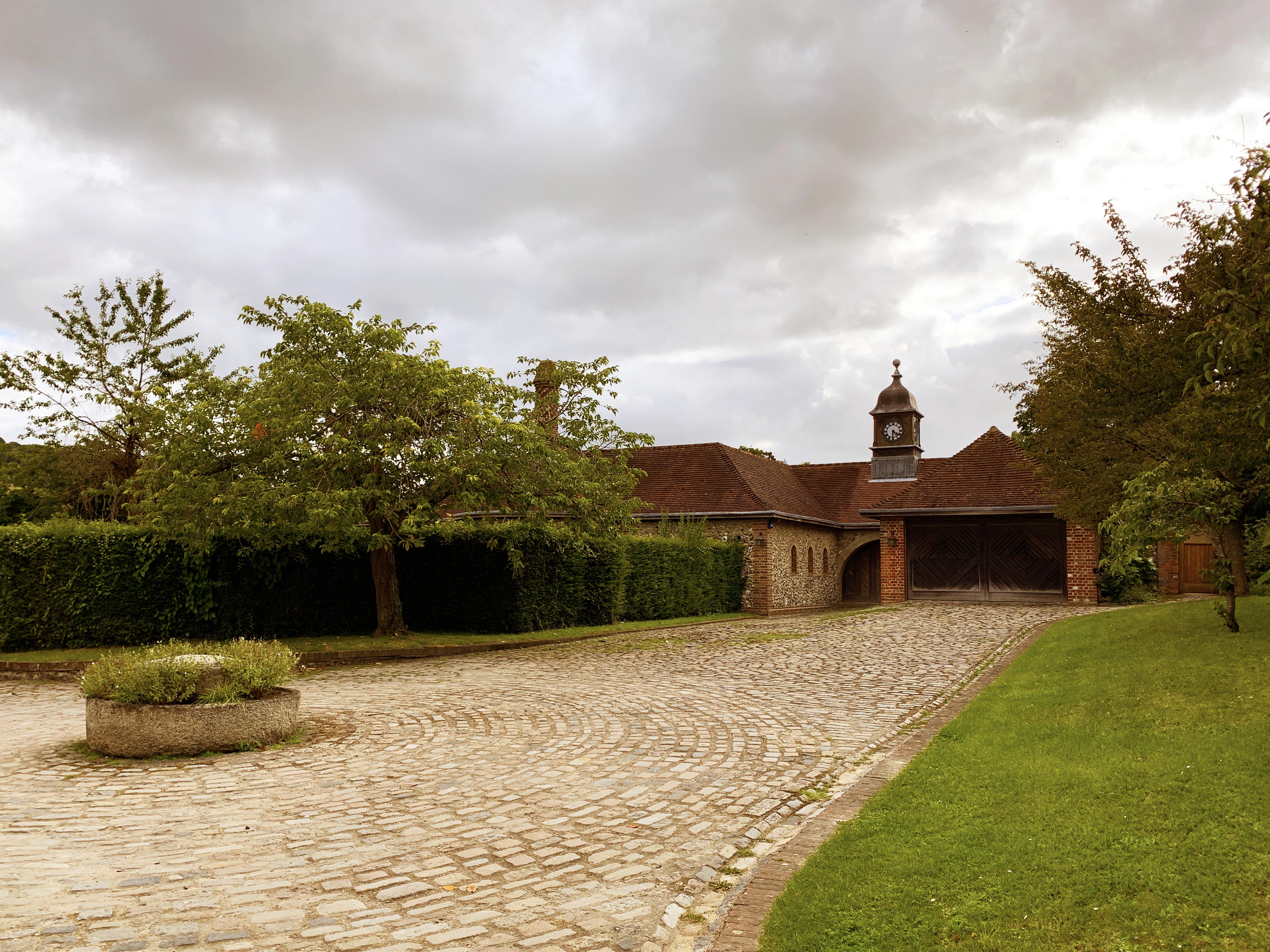 Luddesdown Court
Luddesdown Court
You won’t find many more ancient, more characterful, or indeed more luxurious properties in Kent than Luddesdown Court. Its site south of Gravesend, now embracing 23 acres, was yet another belonging to the avaricious bishop Odo of Bayeux. The current house was built there 800 years ago, or more. The main building is simple in structure, yet grand in a typically medieval way, with a great hall on the first floor, plus a minstrel gallery. The Welsh rebel Owain Glyndwr may have owned it in the C14. It was bought in 1979 by Petter Sundt, a Norwegian shipping magnate, who thoroughly restored and refurbished it without destroying its distinctive character. He also demolished some of the outbuildings and replaced them with an indoor swimming pool and sauna, a garage block complete with bell-tower, a sunken lake, and a croquet lawn. The property was last on the market in 2018, a snip at £3.5 million.
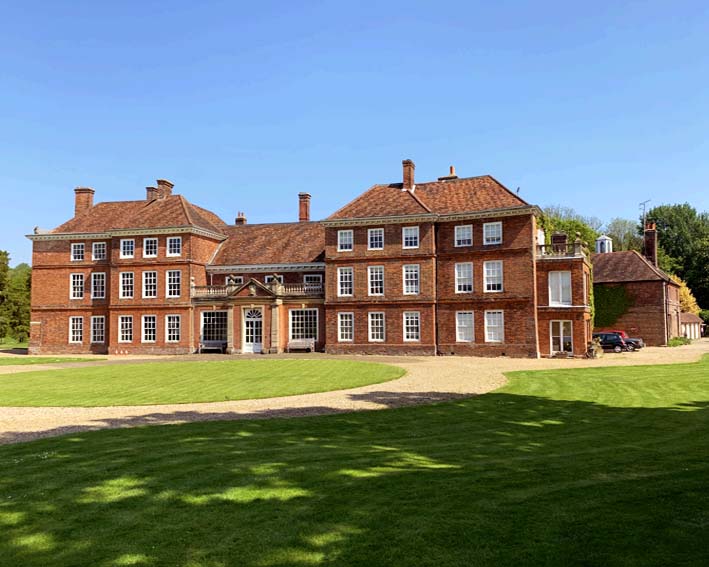 Lullingstone Castle
Lullingstone Castle
There are two salient facts to know about ‘Lullingstone Castle’. It was never a castle, but a lodge serving a huge deer park; and it has been sold only twice in 750 years. The original manor house on the site, which was mentioned in the Domesday Book, was bought in 1279 by the eight-times Lord Mayor of London, Gregory de Rokesley. After several generations, it was sold to the Peche family, who in 1497 built the current house. It passed by marriage in 1543 to Sir Percyval Hart, a senior official to four monarchs. Since that time it has been retained by 20 generations of Harts, albeit that an Anne Hart married a Sir Thomas Dyke, so that the current owner is botanist Tom Hart Dyke. The estate was sold off in 1934, acquired by Kent County Council in 1938, and turned into a public amenity. The Castle itself and its World Garden can be visited in the summer months.
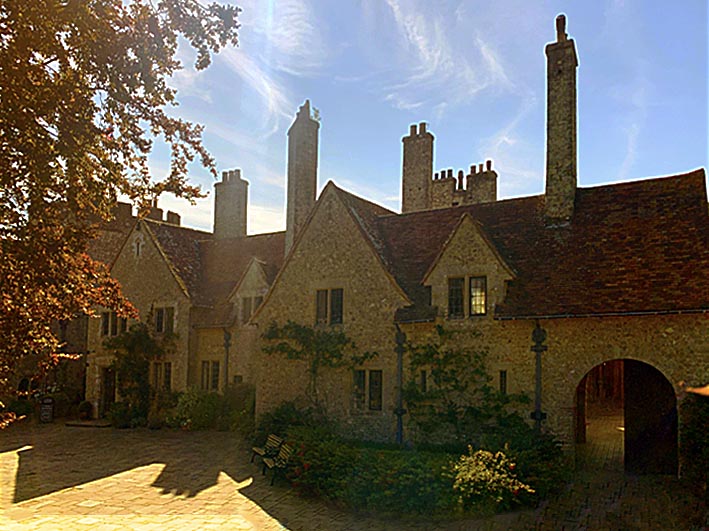 Lympne Castle
Lympne Castle
The castle at Lympne is the most prominent of a cluster at the end of the old Stone Street from Canterbury. Its tower and walls may be of modest dimensions, but it is not without charm, its outbuildings sprawling low and wide after the manner of a priory. An original Norman castle was built there for the archdeacons of Canterbury, on the edge of an escarpment overlooking Romney Marsh to the south-west. Its name derived from the Roman settlement Portus Lemanis; the ruins of the ancient shore-fort Stutfall Castle stand nearby. Lympne Castle was rebuilt in the C14 with a pair of towers, but gradually decayed until it was used as a farm. It was restored in 1908. The most significant thing to have happened in the recent past was a visit by Paul McCartney’s Wings in 1978 to record an album. The property nowadays doubles, like so many other Kent castles, as a picturesque wedding venue.
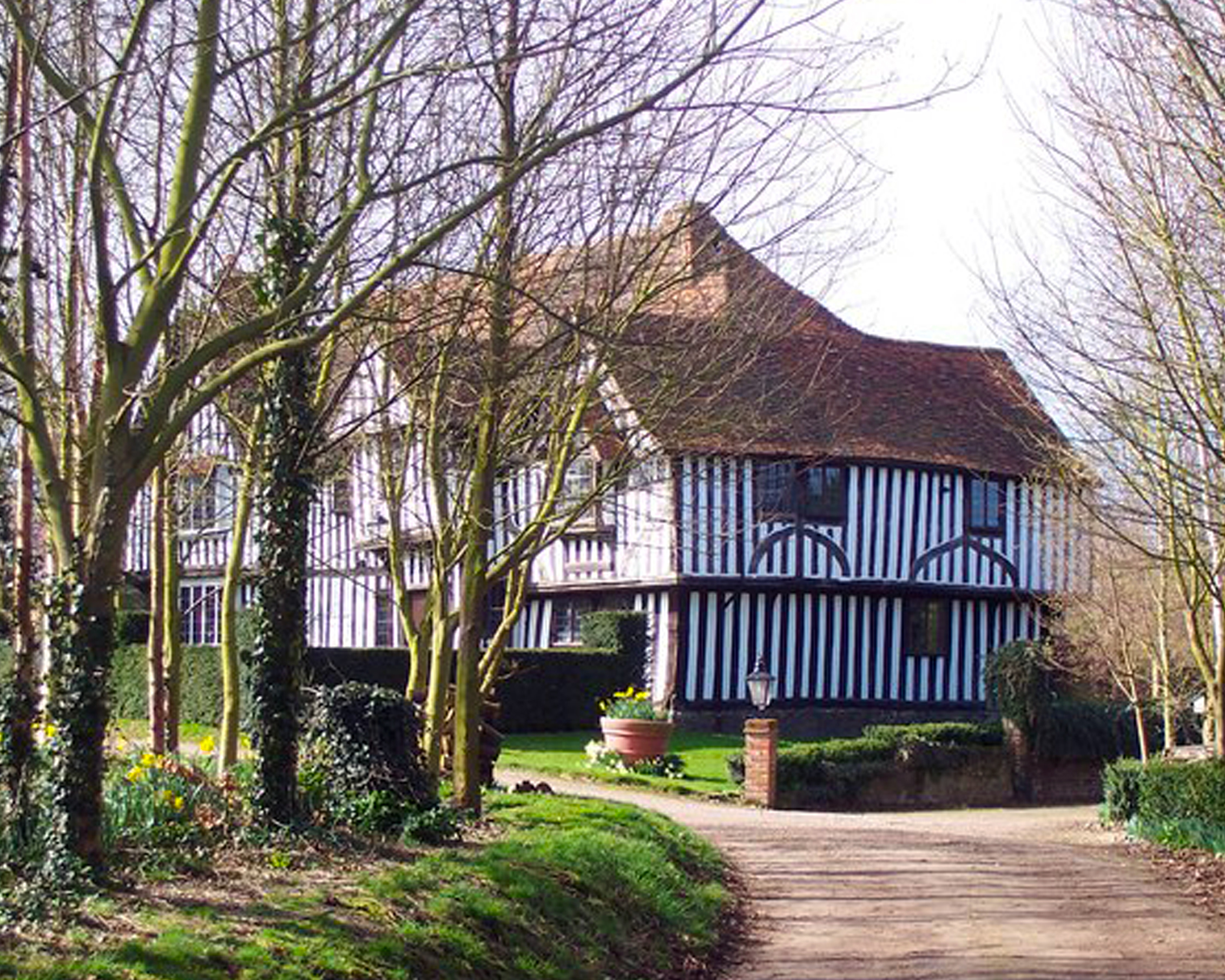 Lynsted Court
Lynsted Court
The village of Lynsted is one of Kent’s tidiest. It has a single thoroughfare, called ‘The Street’, that runs through it in a straight line on its way from Doddington to Teynham. The buildings on either side look remarkably well kempt, notably the Black Lion pub. The well-proportioned church, containing memorials to the Delaunes, Hugessons, and Ropers, bears witness to the village’s traditional stature. Just 200 yards to the south, however, lies Lynsted Court, an architectural wonder. At first glance, it looks a large but fairly conventional timber-framed building. Look more closely, however, and its grew-like-Topsy evolution becomes apparent. It was originally a C14 hall house, owned by the Seward family and consequently known as Seward’s, or even Sewer’s. New wings added subsequently turned it into a capacious affair, its solidity testified to by the huge beams within. Yet it still looks like it was hurriedly glued together, albeit charmingly. Long since renamed, it remains a private residence.
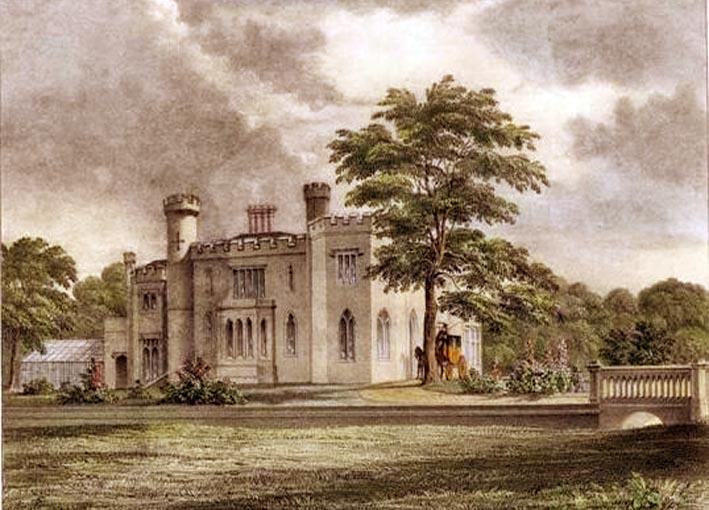 Mabledon House
Mabledon House
The stately home tucked away just off the A21-A26 junction south of Tonbridge looks immemorial, yet dates back only as far as 1805. Prolific architect-builder James Burton purchased the site, then called Quorry Hill, for £6,250, and built his new family home there in Tunbridge Wells sandstone. He sold it in 1828 to banker John Deacon, who the following year asked Burton’s son Decimus – who had grown up there – to expand it by adding a wing and two round towers. In 1870, long after Deacon’s death, Burton was asked back to add a square tower and undertake other improvements. Although Deacon’s grandson left the house to the Church Pastoral Aid Society as a rest home for evangelists, it was requisitioned in WW2 by the War Office, who erected several large utilitarian buildings that still stand. The 50-room residence, now known as Mabledon House, has belonged to retired businessman Hari Saraff since 1992.
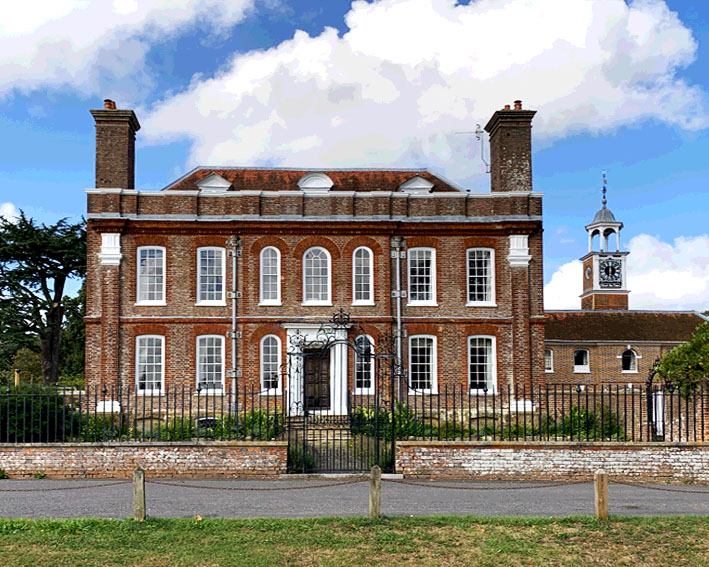 Matfield House
Matfield House
Matfield’s village green is the largest in the county. Facing it, as though admiring the view, is the compact and elegant Matfield House, built in Queen Anne style in 1728. Although Thomas Marchant, a yeoman farmer, is usually credited with building it, his wife Mary’s inheritance actually paid for it. Apart from the main house, the property enjoys a couple of subsidiary buildings: a coach-house, and a stable block topped by a grand clock-tower. The Marchant clan continued to own the house until well into the C20. Its most famous son was Frank Marchant, who captained Kent County Cricket Club in the 1890s. This is one Kent home that was not ruined by Army occupation in wartime, but it nearly had the RAF dropping in: a Hurricane crashed beside an adjacent cottage in 1940. The house has subsequently had a couple of changes of ownership, and is currently being renovated by the Garthwaites, who conduct arranged tours.
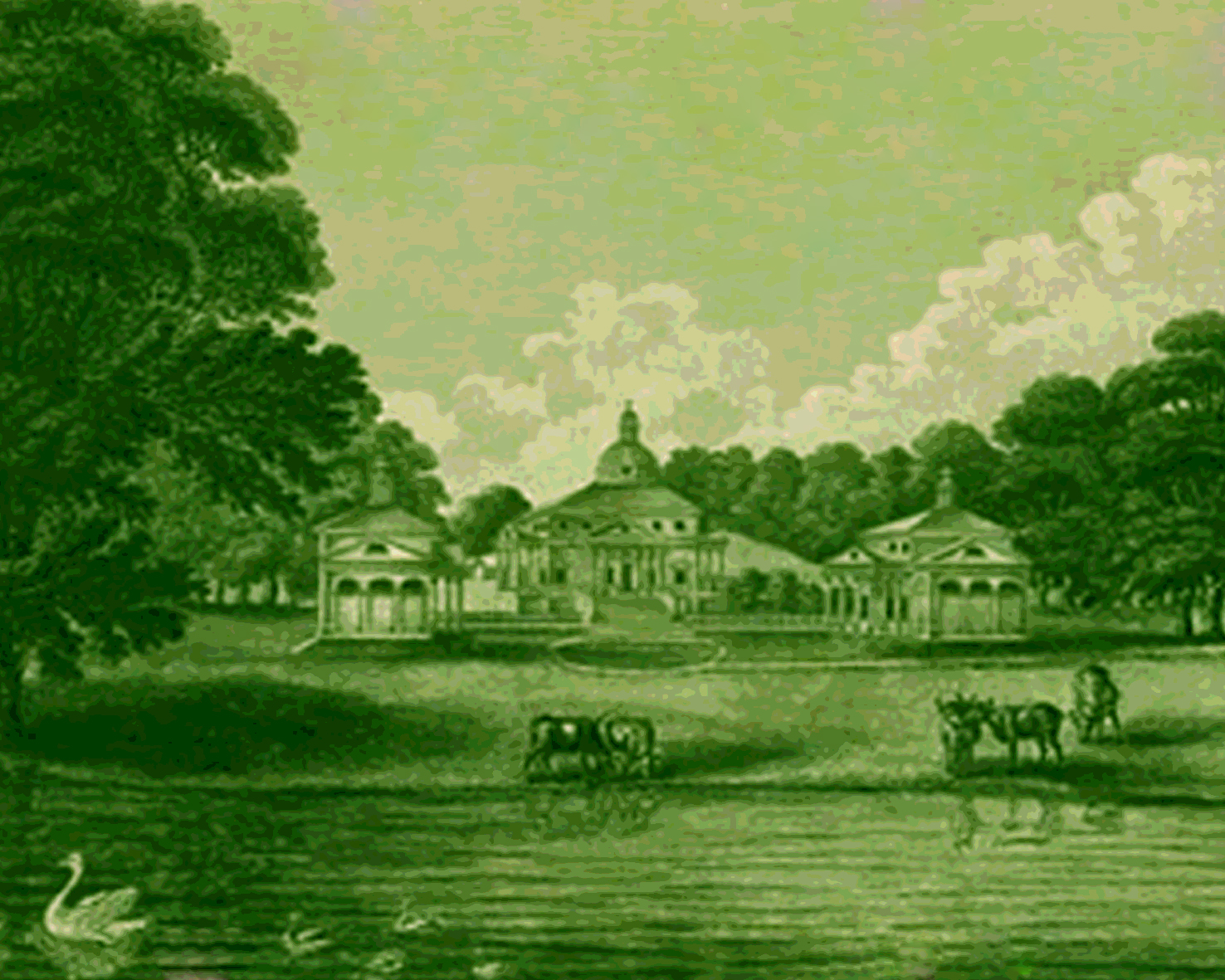 Mereworth Castle
Mereworth Castle
For three centuries now, anyone looking for Mereworth Castle has been prone to confusion: it looks far more like a temple than a fortification. The reason for the confusion goes back to the fact that the name derives from the original building on the site, a crenellated house dating from 1332 that was bought in the C16 by Francis Fane, MP for Maidstone. His descendant John Fane demolished and replaced it in the 1720s with a copy of the Villa La Rotunda at Vicenza designed by Andrea Palladio, whose highly influential neoclassical style suggested the name and design of the London Palladium. Even with its Grade 1 listed lodges, Mereworth Castle looks quite compact within its well-manicured parkland. Rather incongruously, it became a prisoner-of-war camp in WW2. Adding to its exoticism, it is now owned by Mohammed Mahdi al-Tajir, a former Bahraini Ambassador, who no longer permits public access.
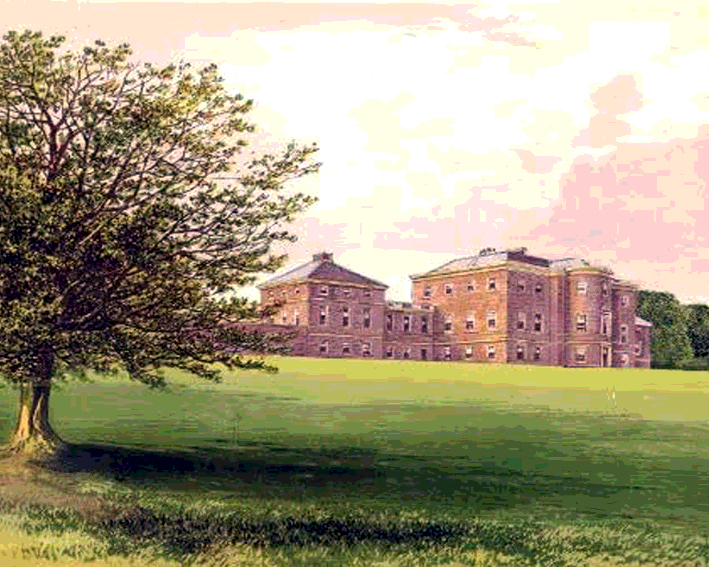 Mersham-le-Hatch
Mersham-le-Hatch
The former Hatch House in Mersham nowadays wins the prize for the ritziest house-name in Kent, but no prizes for looks. When in 1762 Sir Wyndham Knatchbull secured the services of Robert Adam to design it in Palladian style, much might have been expected. Yet, even with the softening effect of Portland stone dressings, the rectangular red-brick exterior is reminiscent of 1950s council offices. This is a shame, given that the location east of Ashford afforded every opportunity for something spectacular, and owes something to Sir Wyndham’s shallow pockets. The site had long belonged to the Archbishops of Canterbury when it was sold to the Knatchbulls in 1486. It has remained with the family ever since. Mersham is an archetypically agricultural community, and the 2,700-acre estate contains extensive farmland, both arable and dairy, as well as a huge deer park, lake, and extensive woodland. The house now caters for weddings, and has a ‘Secret Garden’ eatery.
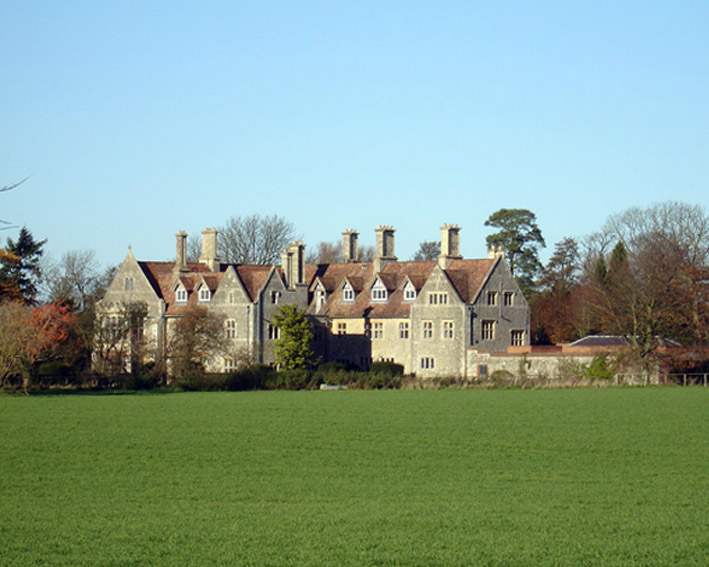 Monks Horton Priory
Monks Horton Priory
The Priory at Monks Horton between Ashford and Folkestone was built on an Iron Age site in the C12. The initial building belonged to King Henry I, after whose death Robert de Vere inaugurated a Cluniac priory there in 1142. A substantial affair, it boasted its own waterworks and at least two large ponds to supply the monks with fresh fish. The enterprise fell victim to the Dissolution of the Monasteries in 1536, after which much was demolished; the rest was occupied by Sir James Hales. He however committed suicide, so that it reverted to the Crown until Elizabeth I restored it to his grandson, Matthew Mantell. Still in private ownership today, the building has had a total makeover, and now possesses 11 bedrooms plus all mod cons such as a private cinema, wine cellar, billiard room, swimming pool, and driving range. Anyone wanting to buy it would need to find the best part of £6 million.
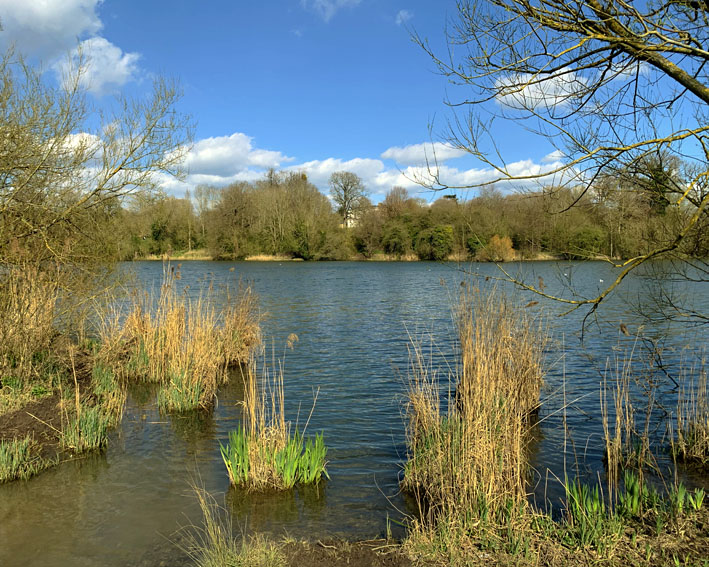
The Mote
Maidstone’s Mote Park is named after a moot, or debating place. The Woodvilles purchased it as a deer park in 1370, and Henry VIII and Anne Boleyn visited in 1531. In 1690 it was acquired by the Marshams. They upgraded its gardens and, in the 1790s, replaced its crenellated manor house with a splendid Palladian affair; they even invited King George III down to inspect it. A lake was created by damming the River Len and in 1830, when its ‘Great Bridge’ was crumbling, expanded to its current 30 acres. In 1929, the 440-acre estate was sold by Lord Bearsted to Maidstone Borough Council. Mote House was put to several uses, including a Cheshire Home, and now is a retirement block. The Park still accommodates Mote Cricket Club’s ground, once described on BBC2 as England’s loveliest, as well as a leisure centre, pitch-and-putt course, and model railway. In 2014, Mote Park was voted the second best in the country.
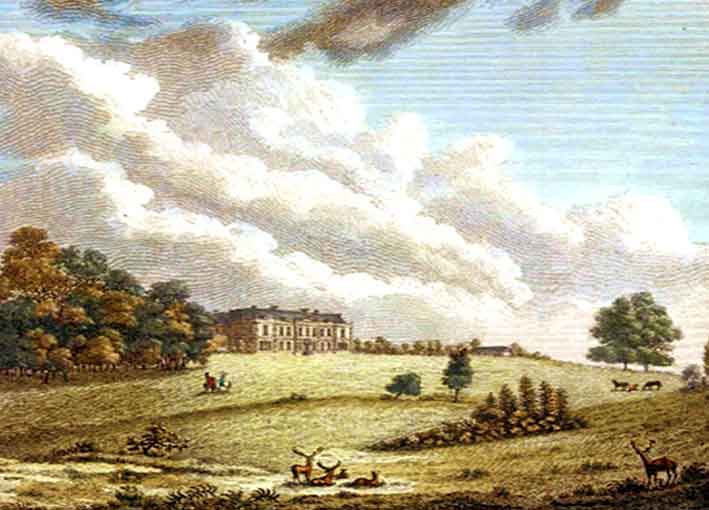 Nash Court
Nash Court
Nash Court at Boughton-under-Blean was a medieval manor that passed in the C14 into the hands of Yorkshireman Andrew Hawkins, who married Joane Nash. An elegant new house with fine views was built there in the early C18 by Thomas Hawkins, well known to be a Catholic. In 1715, following Queen Anne’s death, James II’s son James Stuart, the ‘Old Pretender’, was opportunistically proclaimed James III/VIII in Scotland and a rebel army raised. The Kent public, exasperated by a century of Scottish Catholic excess, was so inflamed that a mob attacked Nash Court, looting and burning the paintings, books, furniture, and deeds. Though it was rebuilt in 1766, its torments were not over. Occupied in WW2 by the British Army, it was vandalised by drunken squaddies, who lit open fires and mutilated an Adam fireplace. The house, surrounded by 150 acres of farmland, was picked up in 1947 for £4,000, and so effectively restored that it was marketed in 2011 at £2.5 million.
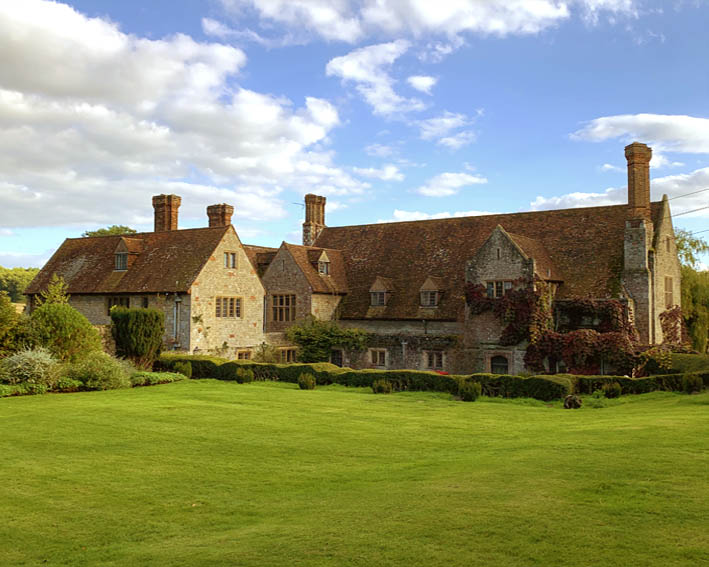 Nettlestead Place
Nettlestead Place
The Domesday Book (1086) records an estate at Nettlestead owned by King William’s troublesome half-brother, Bishop Odo, who was relieved of it shortly afterwards. By the following century, it was in the hands of the de Wahull family, who had the core of the current house built out of Kentish rag around 1250; the builders employed the technique of galleting – pressing pebbles into the wet mortar – seldom seen outside the Weald. Situated next to the church beside the Medway west of Maidstone, this house was expanded to the south in later centuries, but was abandoned from the late C17 until 1913, when it was purchased by Ronald Vinson and expanded to its present size. Since 1978, the Tuckers have been restoring it to its former glory, and more. It now possesses impressive gardens that can be visited occasionally through the National Garden Scheme, and greatly enhance its appeal as a wedding venue.
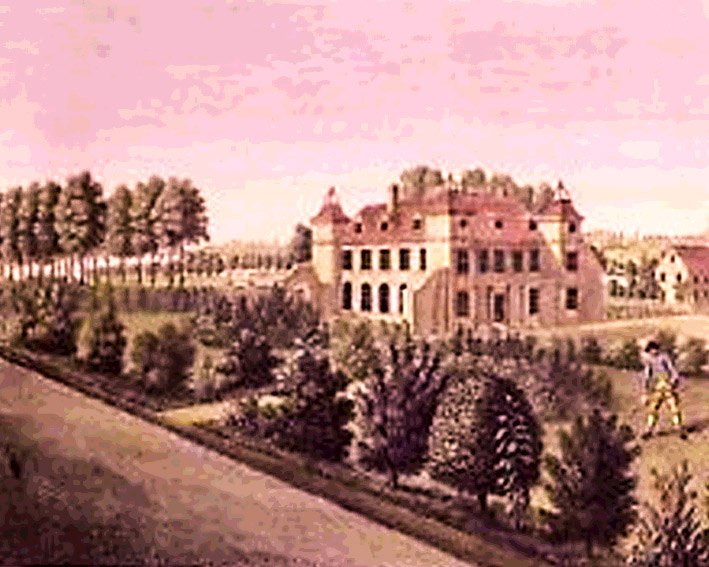 North Cray Place
North Cray Place
North Cray Place’s history was commonplace, until its very end. Recorded in the Domesday Book, it was owned by Bishop Odo, and passed through numerous hands over the centuries, including Henry VIII’s. In the C18, efforts were made to enhance the gardens, culminating in an expensive overhaul by Capability Brown in 1780-2. A new Portland-stone house built in 1823 was bought 11 years later by Lord Bexley, Chancellor of the Exchequer, who also owned Foots Cray Place. During the C20, however, the estate started to break up as London expanded to the south-east. Sports facilities and then housing started appearing on it. Come WW2, the house was occupied by Vickers-Armstrong. Then in 1944, it was hit by a doodlebug. Much of it was damaged, and the remains were demolished in 1961. A letter was written to the local newspaper enquiring what was to be done about its Grey Lady ghost, who was now presumably homeless.
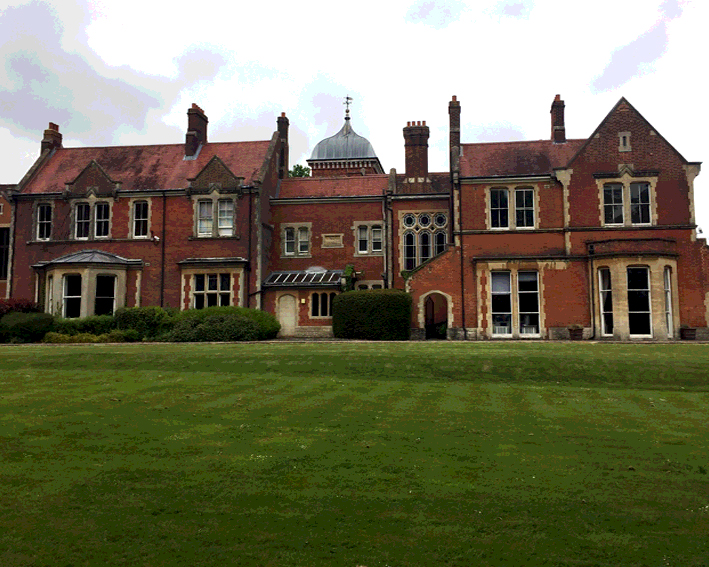 Oakwood House
Oakwood House
The Wigans were a wealthy Victorian family from East Malling who made their money from banking. In 1869, Lewis Davis Wigan had a new house built closer to town in Oakwood Park, Maidstone. It was a grand edifice, eventually containing 17 bedrooms. His wife Mary continued to live there after his death, until she herself died in 1900. During that time, their son John Wigan, secretary of Maidstone FC, used to organise football games in the grounds, including both FA Cup matches and a prestigious friendly against Tottenham Hotspur, a creditable 1-1 draw. In 1913, a splendid 18-hole golf course was built in the park to house Maidstone Golf Club. It survived for half a century until the estate was sold to Kent County Council, which turned much of it over to development. The house subsequently opened up as a hotel. Despite its closure being announced in 2019, it is still in operation.
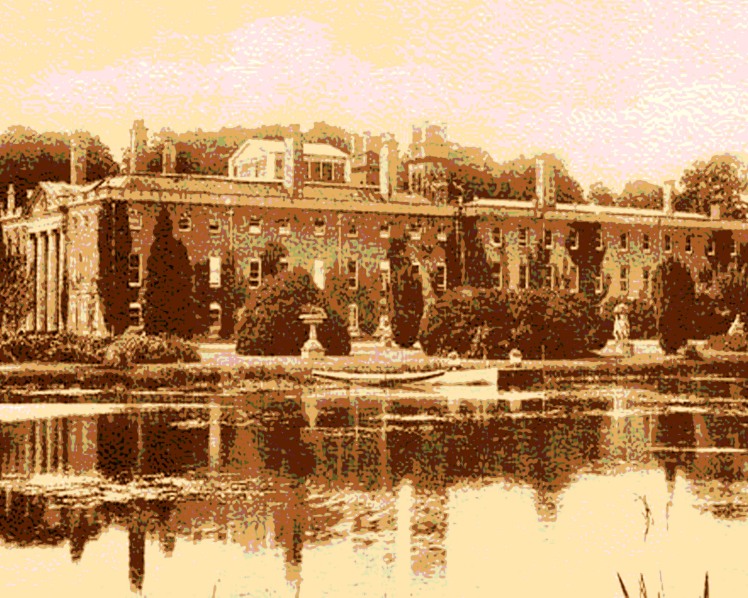 Olantigh Towers
Olantigh Towers
Olantigh? It’s not half the house it used to be. The first record of a manor house beside the Stour north of Wye comes from the C13, when Sir Norman Kemp owned it. The Kemp(e)s were an important Kentish family who included an Archbishop of Canterbury and Bishop of London. After they sold the house to the Thornhills early in the C17, the great philosopher John Locke came to stay as a doctor. In 1720, the Sawbridges bought and expanded it in Georgian style. They remained in possession until 1903, when the house was extensively ruined by fire. Seven years later, the stone portico was salvaged and a smaller redbrick house built a short distance from the original site. John Loudon hired it in 1912 and redeveloped the gardens before his son bought it in 1935. Still too large, half of it was demolished in the 1950s, leaving a compact house only a fifth of its former size.
 The Old Canonry
The Old Canonry
Contrary to expectation, the Old Canonry at Wingham has nothing to do with artillery. It is an unmistakable building, standing at the corner of School Lane on the Canterbury Road from Sandwich: a tall, square, attractive timber-framed building that stands out a mile from its surroundings. Its origins lie in the creation of St Mary, Wingham, a theological college sponsored around 1282 by John Peckham, Archbishop of Canterbury. The left part of the building was created as a row of dormitories for canons, a rare surviving example of small C13 cottages. The rest of the house, including the impressive gable, was added in the late C15. A fire destroyed some of the cottages in 1660, and by the late C19 the house was so dilapidated that it required major renovation by owner James Robinson’s widow. In 2004, having again fallen into a poor state, it was bought by celebrity chef Paul Hollywood, who restored it to its current condition.
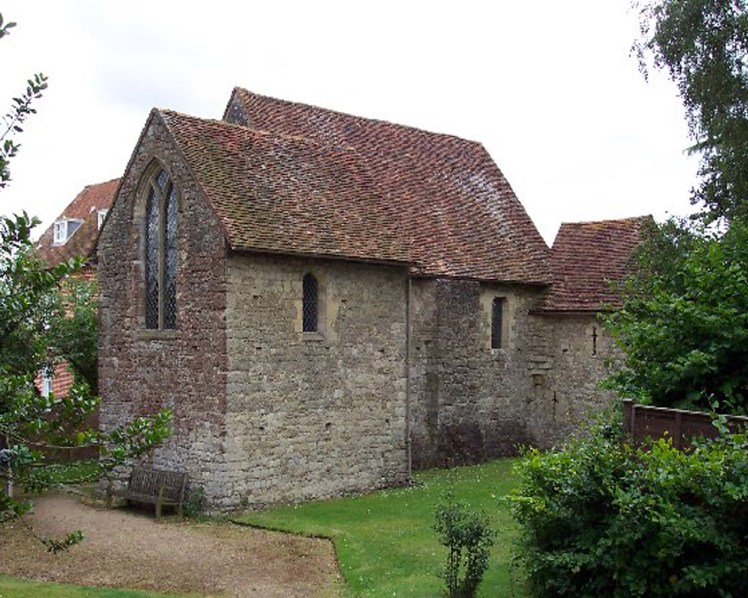 Old Soar Manor
Old Soar Manor
Because Old Soar Manor in Plaxtol looks rather modest from the outside – like a cross between a small church and farm outbuildings – a visit to the interior makes all the greater an impression. This was the home of the influential Culpeppers, who had it built around 1290. It was made of ragstone, and built to be defensible. What cannot be seen any longer is the great hall, which was demolished after nearly 500 years to make room for the adjacent redbrick house. What remains nevertheless is the family’s living-quarters. These are accessed through the undercroft (store-room) and up a narrow but mercifully short spiral staircase to the solar, or main chamber. Off this are the garderobe (privy) and the chapel. With a little imagination, it is possible to picture how the comfortably-off might have lived in the late Middle Ages. A National Trust property, the Manor can be visited in the summer months.
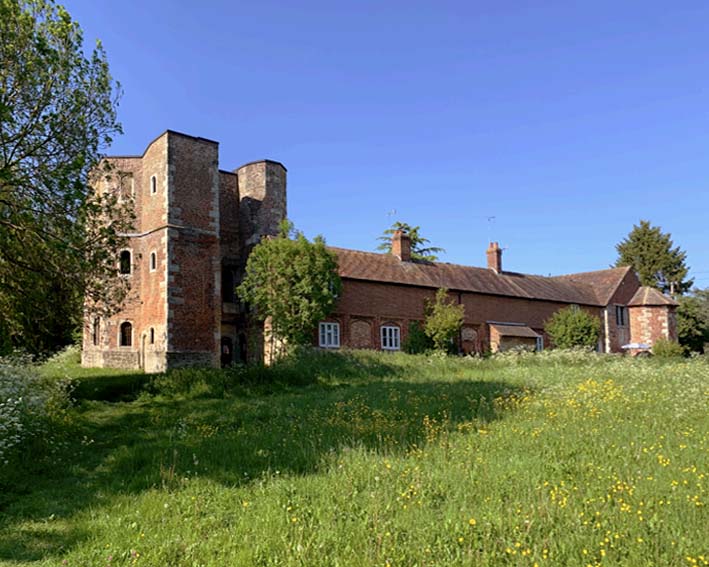 Otford Palace
Otford Palace
Otford was always a strategically crucial place, standing at a ford across the River Darent. It was an obvious choice for one of the Archbishop’s Palaces that punctuated the route from Canterbury to London. The Palace became singularly large and grand after Archbishop Warham expanded it in 1515 to rival Cardinal Wolsey‘s palace at Hampton Court. Archbishop Cranmer started writing the Book of Common Prayer there, but was obliged to hand the Palace over to Henry VIII in 1537. The King had taken his court there on the way to the Field of the Cloth of Gold in 1520, but now abandoned it. What remains since its destruction following the Dissolution of the Monasteries can only hint at how grand the whole four-acre site must have been: just the North-West Tower and part of the Great Gatehouse, with a row of more recent cottages linking them. Sadly, the evocative Old Palace Field beyond them now abuts a noisy road.
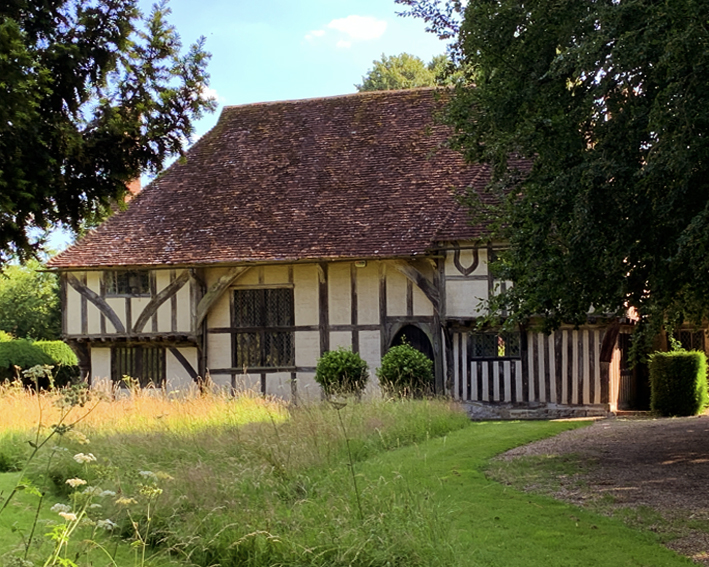 Otham Manor
Otham Manor
Formerly known as Wardes, Otham Manor started life in the 1370s as a Wealden hall house, one of a clutch of fine old buildings in the locality. It was a fine example of a more modest timber-frame house from the reign of Edward III, such as would have been inhabited not by a noble but a yeoman or merchant. A wing was sympathetically added at right angles to that original house in the C16. Two centuries later, however, it was divided into cottages, and fell into disrepair; but, in 1912, the British ambassador to Turkey, Sir Louis Mallet, saw its potential, undertook its restoration, and expanded it by attaching an additional wing. By the late C20, however, it was again practically derelict, despite being Grade 1 listed in 1952. It was bought in 1992 by Dominic and Christine Fisher, who took pains to restore both the house and gardens as an immaculate private home, complete with swimming-pool.
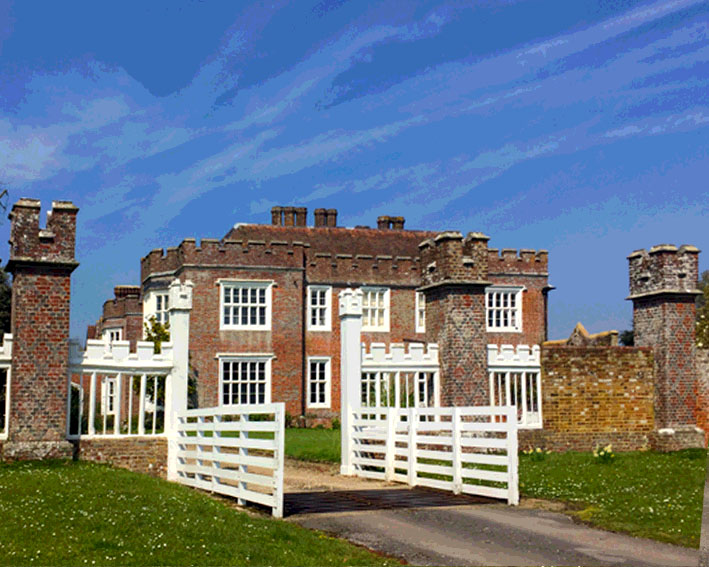 Otterden Place
Otterden Place
Situated in a delightfully bucolic area on the North Downs, Otterden Manor was yet another property belonging to Bishop Odo that returned to the Crown after his disgrace. Apart from being attacked during the Peasants’ Revolt of 1381, little else happened before the house was acquired during the reign of Henry VIII by Sir Anthony Aucher, owner of Bourne Place near Bishopsbourne. The Auchers held onto it for over a century. It was bought in 1725 by Reverend Granville Wheler, who four years later invited the scientist Stephen Gray to stay. The two performed historic experiments in electrical conduction both indoors and out; the avenue where they suspended their longest cable is still visible in front of the house. Nearby is Otterden’s picturesque cricket ground. The last owner, also called Granville Wheler, left the estate in 2004 to the Wheler Foundation, a trust that maintains it. The pleasantly secluded house still serves as a private residence.
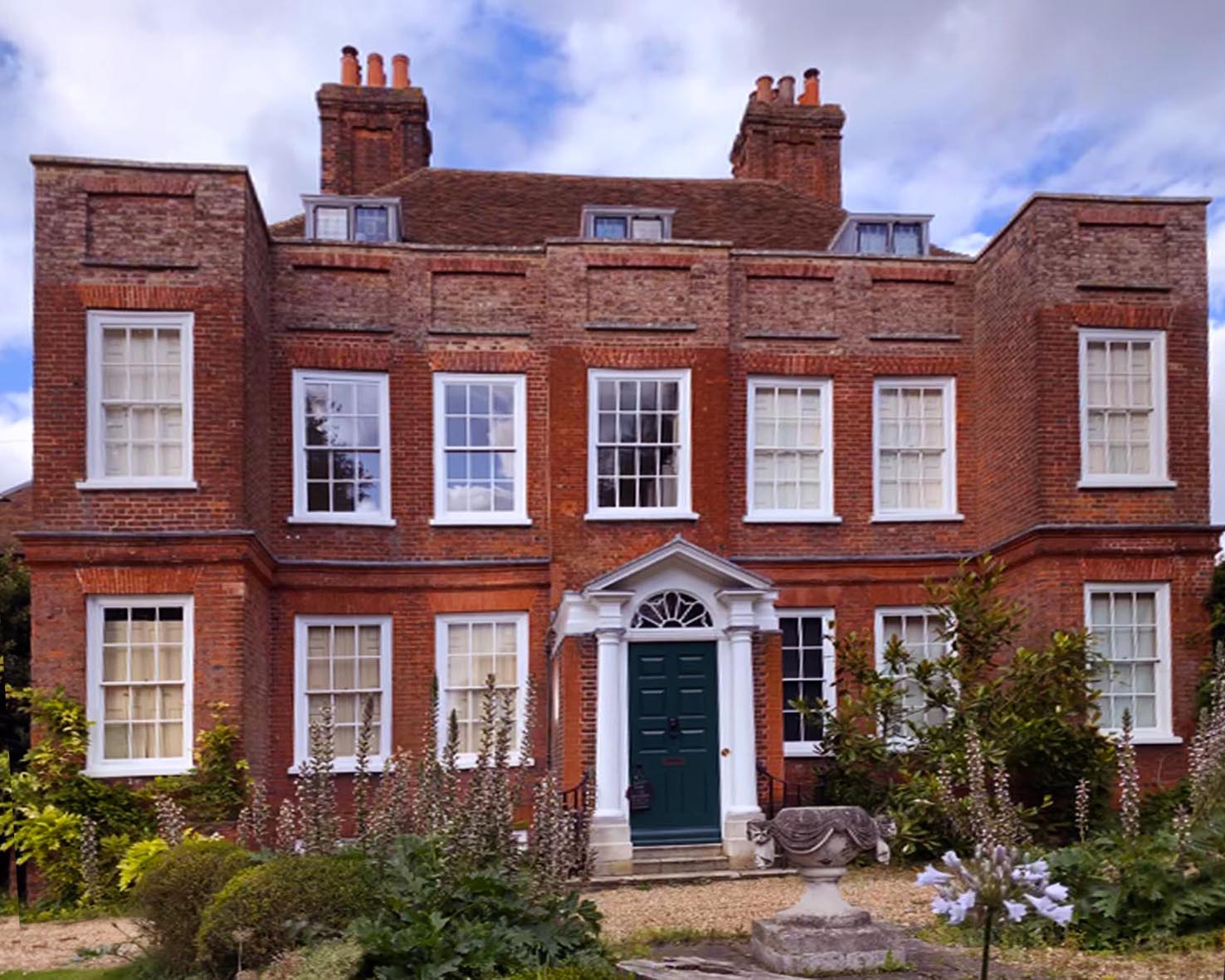 Owletts
Owletts
To be frank, Owletts does not at first appear to have much to say for itself. It was built in 1683-4 by Bonham Hayes, a yeoman farmer, for his own use. By the C19 it was in the hands of the Baker family, and in 1862 became the birthplace of Sir Herbert Baker, the prominent architect. Needless to say, he made a number of structural improvements, and his family took pains to beautify the house inside and out. He bequeathed it in 1946 to the National Trust, which now rents it out. Rather pleasingly, the current tenant, David Baker, is his great-grandson. The public is able to visit some of the rooms at certain times; and therein lies its pleasure. It is richly adorned throughout with every manner of decoration and adornment. It even has a specialist tea-making facility for visitors. Although a visit will not take long, it can conveniently be combined with a trip to Cobham Manor and its Mausoleum.
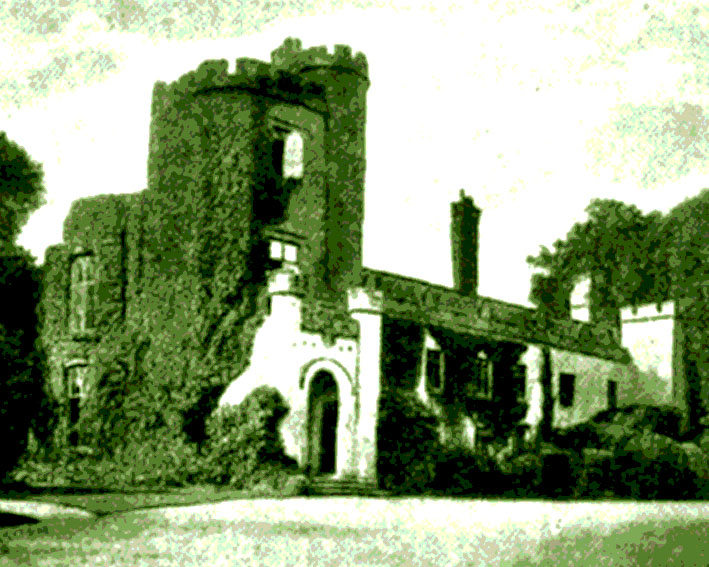 Oxney Court
Oxney Court
It is funny that, only 20-odd years ago, Oxney Court near Dover was a ruin, and had been for decades. A timber-framed house on the site had been replaced in the late C17 with a stone building, which within 100 years was converted to a Strawberry Hill Gothic castle. Early in the C20, it served as a prep school, but was taken over during WW1 by the Army, and fell prey to an unexplained fire. Its restoration began in 1998. New owners in 2012 invested heavily in upgrading it to a home as luxurious as any in the area, incorporating various impressive outdoor features. Its hamlet of Oxney, records of which go back a thousand years, is itself interesting. It had a chapel, Saint Nicholas, that didn’t survive the Dissolution of the Monasteries, and the village seems to have died with it. There is no sign of it around the house; only dense woods, which lend themselves well to the usual ghost sightings.
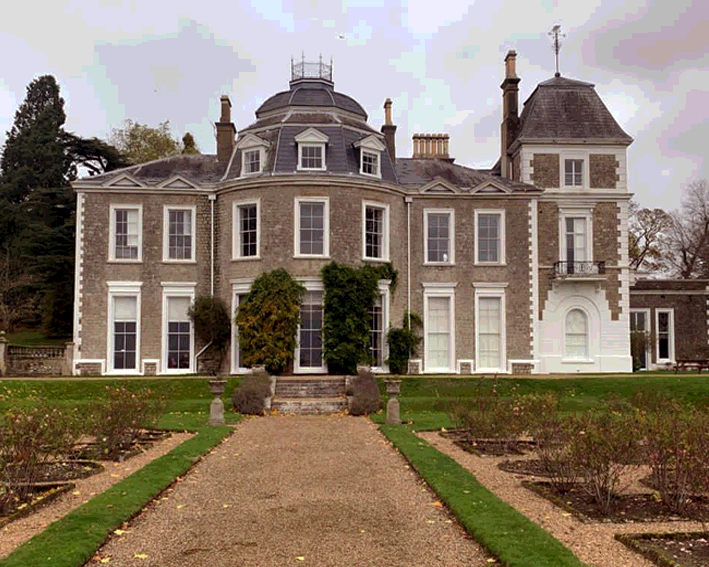 Oxon Hoath
Oxon Hoath
There is one thing about Oxon Hoath at West Peckham that people cannot agree on: how to spell it. There are four alternative versions, and even the official address reads “Oxon Hoath, Oxenhoath Road”. It actually means ‘ox heath’, the estate having been a royal deer park that also accommodated cattle in the reign of Edward III. The original house is said to have been built around 1372 for the Culpeper family. Over time it became home to two baronetcies, eleven knights, and five Sheriffs of Kent. In 1846, Sir William Geary employed Anthony Salvin to add the tower and dome in French Gothic revival style, lending the house the unconventional feel of a chateau. This impression was reinforced by the addition of a parterre garden, Oxon Hoath’s being the oldest original example in the country. The house is now marketed as a country conference centre, and offers congenial surroundings for yoga retreats and the like.
 Palace of Placentia
Palace of Placentia
Greenwich’s Placentia Palace would surely be one of the highlights of any visit to London, if only it were still there. It was built as Bella Court in 1443 by Humphrey, Duke of Gloucester, who within four years was removed by King Henry VI. It was natural that Queen Margaret should want him to purloin it, given its fantastic location adjacent to a huge deer park and near the road to Canterbury, with easy access down the Thames to London Town and Westminster. She changed its name to ‘Placentia’, meaning ‘Pleasure’, though this was often replaced with the less biological-sounding ‘Pleasaunce’. After being substantially rebuilt by Henry VII, it became the birthplace of Henry VIII, Mary I and Elizabeth I, and home to other famous Royals. Charles II rashly demolished it in 1660 to make way for something new, but never got around to building it. Three decades later, the site was used instead to house the Greenwich Hospital.
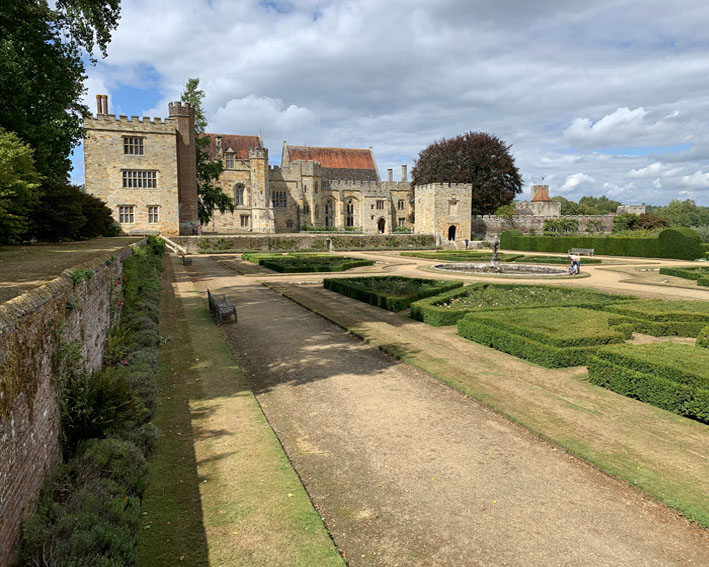 Penshurst Place
Penshurst Place
It is unfortunate that Penshurst Place is just a stone’s throw from Hever Castle, because it would otherwise be West Kent’s cynosure. It is in any case a delightful estate, familiar to a worldwide audience through its many appearances in film and TV. The house was originally built for Sir John de Pulteney in 1341. It was expropriated by Henry VIII, whose son Edward VI gifted it in 1552 to Sir William Sidney. Two years later, it became the birthplace of the great poet Sir Philip Sidney. Incredibly, it has stayed in the family’s hands ever since. Luckily for the public, the Viscount de L’Isle today makes visitors welcome at both the house and the splendid 11-acre gardens. Numerous entertainments are staged there, and two extensive public walks cross the 2,500-acre estate: the ‘Parkland’ and the ‘Riverside’. With seven miles of the Rivers Medway and Eden crossing the land, it is also a paradise for anglers.
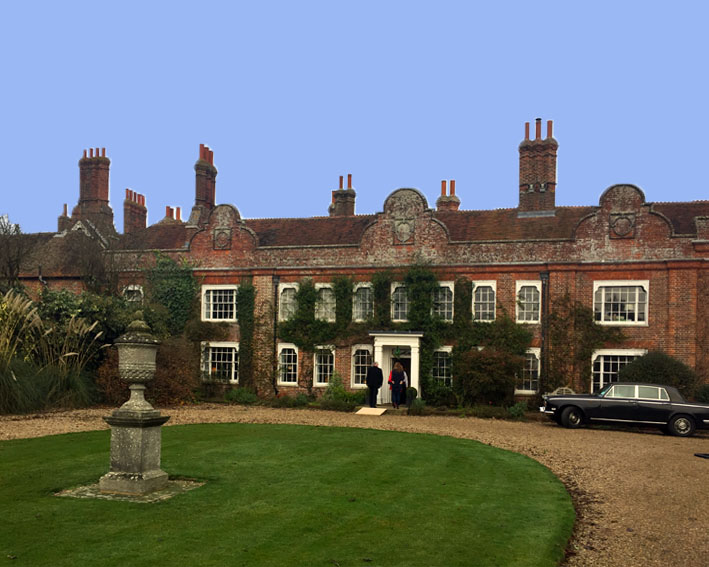 Pett Place
Pett Place
There are few more delightful Kentish properties than Pett Place, tucked away at the foot of the North Downs to the south-east of Charing. It is not just an elegant building per se, but its looks are enhanced by being enclosed in a gated courtyard. Like Charing itself, the house has ancient origins, its foundations being Norman; there is also a mediaeval chapel 100 feet away. Sir George Sayer erected the current house early in the C18 in place of the one inherited by his wife. Sayer, a courtier, had served the Stuarts, but perfidiously turned against them during the Glorious Revolution; he then happily served the new regime. The house remains largely unchanged, except for a wing added in the C19 at a right-angle to the south-west. The house was in the news nearly 20 years ago, when it was burgled while owned by comedian Bob Mortimer; the culprit was jailed. Pett Place remains a private residence.
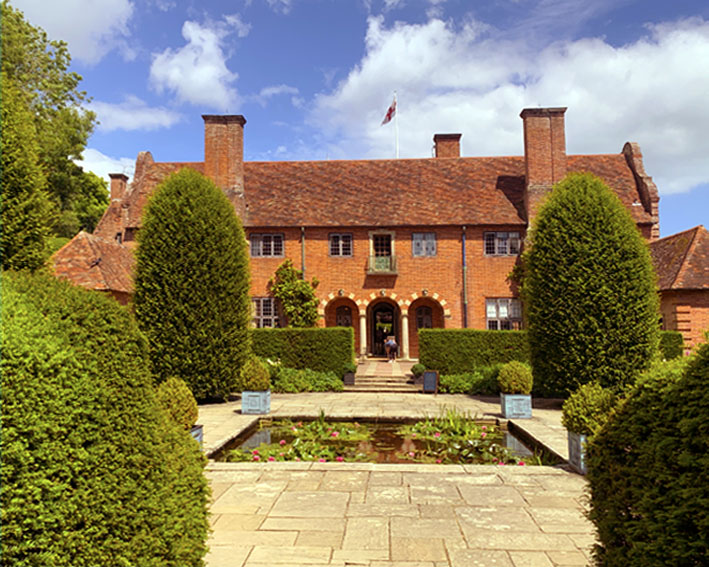 Port Lympne Mansion
Port Lympne Mansion
The story of Port Lympne Mansion is the story of Sir Philip Sassoon. When his wealthy father left the family home Shorncliffe Lodge to him in 1912, he sold it to pay for a new house that he hoped would symbolise a new age. The house was designed in relatively conservative Cape Dutch style. The interiors, however, needed to be seen to be believed. Sassoon was unashamedly gay in an age when homosexuality was taboo. He wanted the place to work as a magnet for the celebrity company he craved, and designed a pleasure palace for guests to relish. Though he thought it quite modest, there were 30 bedrooms and a degree of ostentatious luxury that might best be described as outrageous. After Sassoon died on the eve of WW2, the Mansion was abandoned until, in 1973, John Aspinall bought it and its 15 acres of gardens for his new zoo. Now restored, it operates as a 4-star hotel.
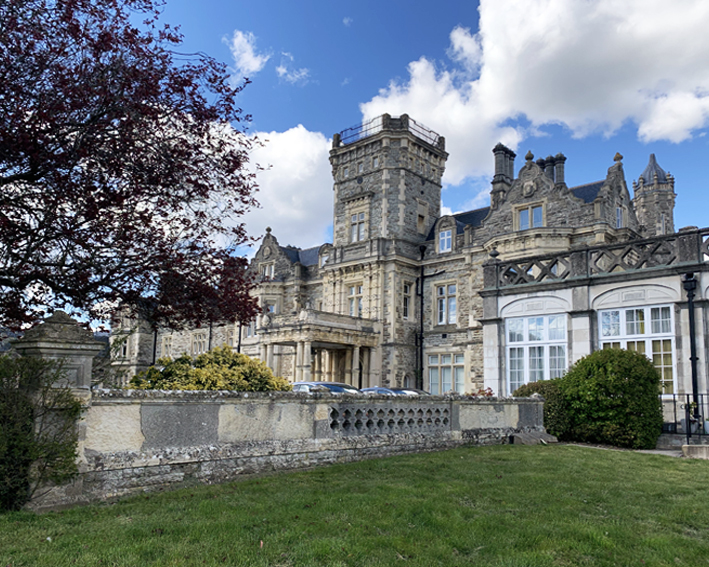 Preston Hall
Preston Hall
There was an estate on the site of Preston Hall, just south of Aylesford, by 1102. For over four centuries until 1734 it was the property of the Culpepers, one of whom became the 1st Baron Culpeper of Preston Hall in 1627. Around 1850, the house was demolished and a Jacobean-style replacement built a few yards away. Most of the thousands of acres of farm- and woodland were sold off, only 25 acres remaining by 1904. It was sequestered as a military hospital in WW1, catering especially for tuberculosis. After the War, it became a sanatorium, incorporating cottages that allowed TB patients to be exposed to the cold night air, as per standard medical practice; these formed the basis of the British Legion Village. The house ultimately became a hospital for respiratory diseases, and then a general hospital, until Maidstone Hospital superseded it. After providing offices for the local health authority, it was turned over to housing in 2014.
 Provender House
Provender House
This historic timber-framed building at Norton near Faversham was largely built in 1342 for Lucas de Vienne on the site of Sir John de Provender’s C13 house. Its particular historical interest lies however in two other former residents. One was the great botanist Sir Joseph Banks, who in 1779 married Dorothea Hugessen, the owner’s heiress, and left his mark on Provender’s garden with a few plantings of his own. The other was Prince Andrei Alexandrovich, eldest nephew of Nicholas II, the last tsar of Russia. Having fled the Revolution, he married the owner of Provender House, Nadine McDougall, in 1942; he is certainly unique for being born in St Petersburg but marrying and dying in Faversham. His daughter, the thoroughly English current owner, revels in the thoroughly Russian name Princess Olga Andreevna Romanoff. Although she still uses it as a private residence, she regularly permits one-hour tours, and makes it available for weddings.
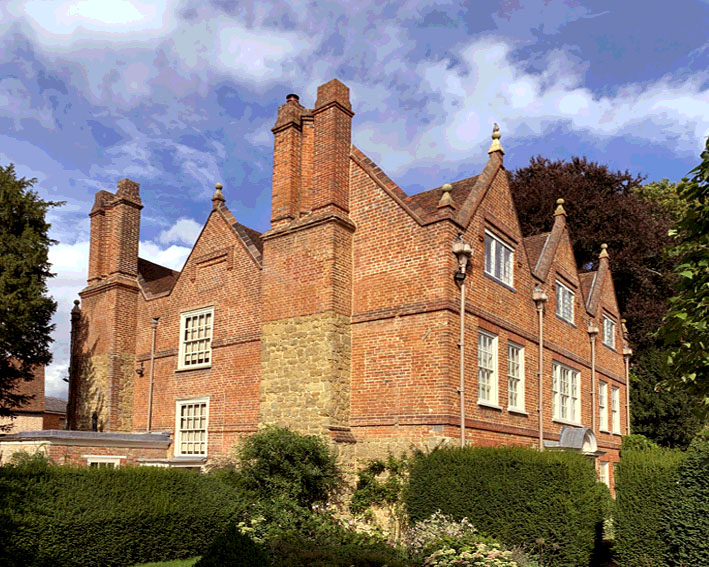 Quebec House
Quebec House
General Wolfe’s birthplace in Quebec Square, Westerham (which actually is just a short stretch of road) looks fairly modest from the front, but is substantial enough to give a good impression of the sort of house a prominent C18 military family would have lived in. The house, originally called Spiers, was built in the Tudor era, but substantially rebuilt in the 1630s. As Wolfe’s day of death and glory arrived in 1759 during the Battle of Québec, the House was understandably renamed after it. A subsequent Canadian owner gifted it to the National Trust in 1917, so it can now be visited by the public. The House contains paintings and memorabilia pertaining to Wolfe, and the garden incorporates many types of plant that grew there in his day. The coach-house has been adapted as a tearoom, with an exhibition upstairs on Wolfe’s life that is best visited before entering the House.
 Queenborough Castle
Queenborough Castle
Originally a tool of oppression, Anglo-Norman castles increasingly took on a defensive or residential aspect, and by the late C14 were largely defunct. The fact that Edward III saw fit as late as 1361 to invest £20,000 in building a castle at the confluence of the Medway and Swale suggests that it looked to him a convenient bolthole. Its revolutionary design consisted of a circle of towers mounted with guns and surrounded by a concentric outer wall, like a less compact version of the later Henrician castles. It and the neighbouring town constructed simultaneously were named Queenborough after Edward’s wife, Philippa. Its appeal is underlined by the fact that its constables included such bigwigs as John of Gaunt, the Duke of Clarence, and the Archbishop of Canterbury. It saw little action apart from attacks by French raiders and Jack Cade’s rebels in 1450, and in 1650 was sold for scrap, leaving barely a trace.
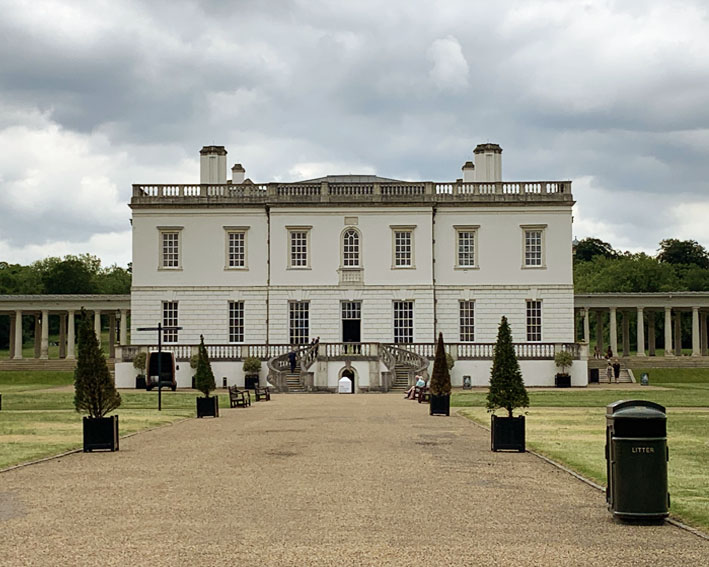 Queen’s House
Queen’s House
As architects go, Inigo Jones was certainly a lucky one. In 1613, he left for a two-year grand tour that exposed him to the latest architectural fashions in Italy. He returned just as the spendthrift King James I was commissioning a new house for his wife, Anne of Denmark. Jones got the job. Work on this ‘Queen’s House’ in Greenwich started in 1616, but was soon halted when she fell mortally ill. Fortunately, James’s successor Charles I restarted the project for his own wife, Henrietta Maria. It was completed in 1635. Jones had been able to create something unique: Britain’s first wholly Palladian building. It looked revolutionary to English eyes, and inspired imitations. The House became a slight embarrassment when the Royal Hospital for Seamen was ordered in 1692, and the new building was obliged to accommodate Queen Mary’s view of the Thames. Queen’s House now forms part of the National Maritime Museum.
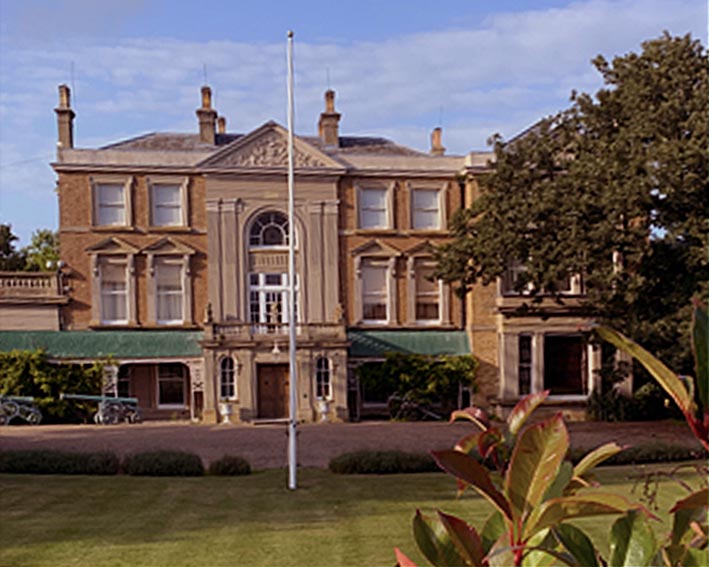 Quex House
Quex House
Kent’s most strangely named house got its monicker from its C16 owners, the Quekes, a family of wool merchants. The C15 house near Birchington was acquired in 1777 by John Powell, from whom it passed consecutively to two nephews, the second of whom demolished it in 1812 to build the current Regency house. His heir was his own nephew, Henry Cotton, who was obliged to adopt the Powell name. The Powell-Cottons merged two farms to create an estate of 1,750 acres, most of it devoted to farming, and 250 acres to a park. One, Major Percy Powell-Cotton, was a prolific collector of natural and ethnographic objects from around the world. He and his daughters made them the basis of the Powell-Cotton Museum that in 2014 won an award as Britain’s Most Inspiring Museum; it was closed in 2020 for ‘decolonisation’. Quex Park, now owned by Thanet District Council, still offers numerous tourist events and attractions.
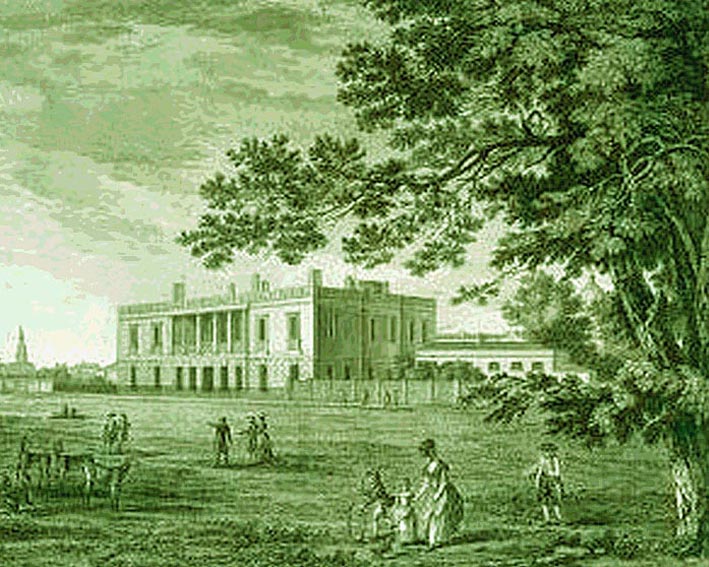 Ranger’s House
Ranger’s House
Originally enjoying delightful views from its premium location in Blackheath next to Greenwich Park, the Georgian redbrick mansion now known as Ranger’s House was built in 1722 by architect John James. Its first occupant was Francis Hosier, a wealthy trader best recalled as the admiral unfairly victimised in 1727 over the Puerto Belo disaster. In 1748 it passed to Lord Chesterfield, for which reason it was long known as Chesterfield House, but was renamed Brunswick House while Princess Augusta occupied it from 1807 to 1813. After 1816 it became the official residence of the Ranger of Greenwich Park, a role that had hitherto been a sinecure for the governor of Greenwich Hospital but was now separated out. After Field Marshal Lord Wolseley lived there from 1888, it was bought by London County Council in 1902 and requisitioned during both World Wars. It is now managed by English Heritage, and houses Sir Julius Wernher’s outstanding art collection.
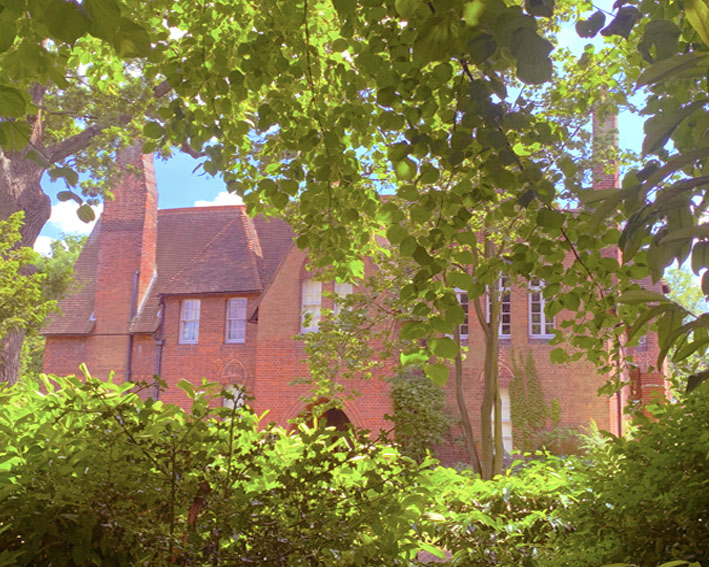 The Red House
The Red House
A new-build red-brick house on a greenfield site in the outskirts of London does not sound appealing. When it turns out to be a grandiose L-shaped affair erected for a nouveau riche London-based designer, it’s liable to raise hackles. That however is how it was with the Red House in Upton, now Bexleyheath, designed by William Morris in 1859 with the help of architect Philip Webb. He meant it as an Arts and Crafts showpiece and magnet for Pre-Raphaelites. He decided to eschew wall-coverings other than tapestries and murals; some of the latter, painted by Edward Burne-Jones, still survive. Hilariously, Morris’s socialist convictions are supposed to have crystallised when he was designing the servants’ quarters. In the event, he found the place too expensive to run, and sold it after five years. Subsequent owners significantly altered it, but the National Trust bought it in 2003 and is supposedly restoring it. The garden is modestly sized but worth inspecting.
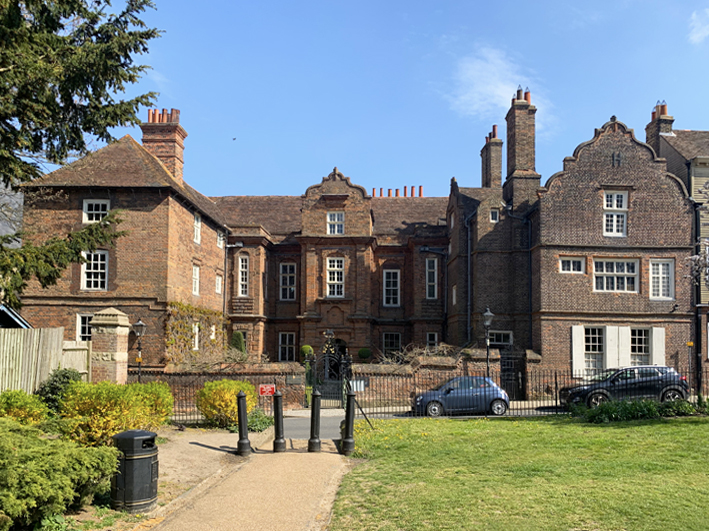 Restoration House
Restoration House
Rochester’s Restoration House is among the most interesting in Kent. It was originally two separate houses – one completed in 1454, the other in 1522 – that were merged with a third around 1650 to create today’s construction. The first owner’s son, Francis Clerke, rented the property to Colonel Robert Gibbon, who in 1660 welcomed Charles Stuart there. Charles was on his way from Dover to London following his exile, and the next day would be restored to the throne; hence the House’s modern name. Two centuries later, Restoration House is said to have inspired Miss Havisham’s home, Satis House, in ‘Great Expectations’. There was a plan in the 1980s to replace it with a car park, which comedian Rod Hull foiled by buying and restoring it for around £750,000; sadly, it was confiscated by the Receiver in 1994 to cover his tax liability. It is still privately owned, but can be visited in the summer months.
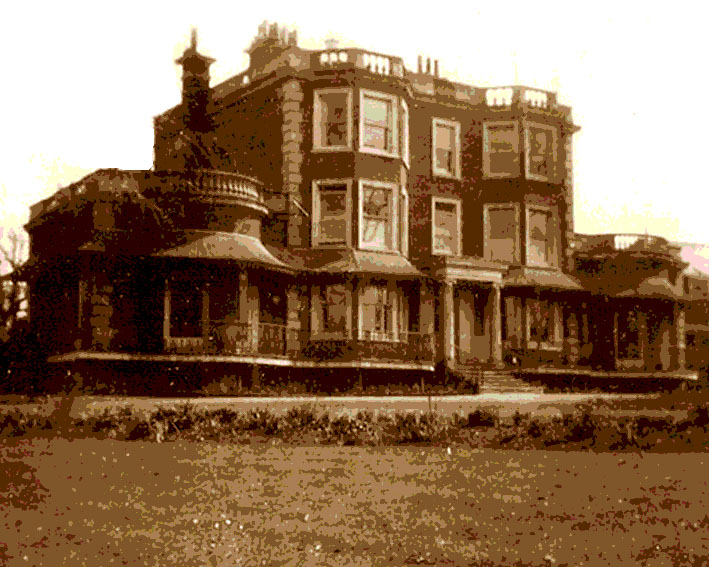 Sacketts Hill House
Sacketts Hill House
Not really a hill at all, Sacketts Hill is a wooded elevation above the treeless flatland surrounding it at St Peters. The Sackett family was recorded there as early as the C16, but the house bearing their name was not built until the Georgian era. One of its residents was Sir Richard Burton (1773-1855): not the explorer, nor the actor (even if his wife was called Elizabeth), but an equerry to William IV. Because the king liked to travel to Hanover from Broadstairs or Ramsgate, he would be welcomed there as a guest en route. A century later, he could have been more rapidly conducted to Dane Court Road at the end of the long drive by a miniature steam railway installed there. The house burnt down in 1942, but left behind a number of farm buildings within its remaining 22 acres. The site is now occupied by a garden centre, with a quaint cottage, conspicuously dated 1633, at its heart.
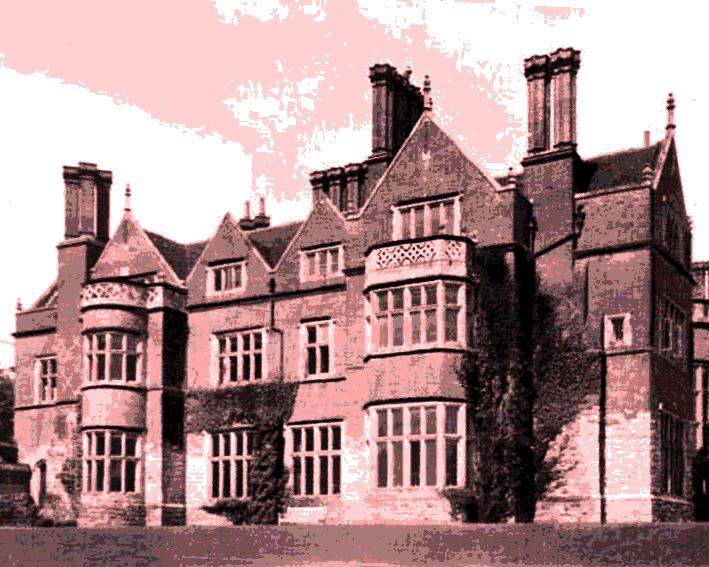 St Alban’s Court
St Alban’s Court
It must have pained Mrs Selina Hammond to sell St Alban’s Court in Nonington in 1938. After all, it had been in her late husband’s family for 383 years, and their only son had been killed at Ypres. The house had begun relatively modestly in the C14, undergone two rebuilds, and been replaced by the current building in 1878. The estate meanwhile grew like Topsy, until it finally amounted to 1,000 acres. The Hammonds were an interesting lot, though none ever became particularly famous. There was a distinct martial streak running through them. Maybe the most prominent was Francis Hammond, born in 1584, who accompanied Sir Walter Raleigh on his search for El Dorado, supposedly fought fourteen hand-to-hand duels in the 30 Years’ War, and commanded the royalist cavalry in the English Civil War. After it was disposed of, the house became a top physical education college until 1985, and is now home to a Bruderhof religious community.
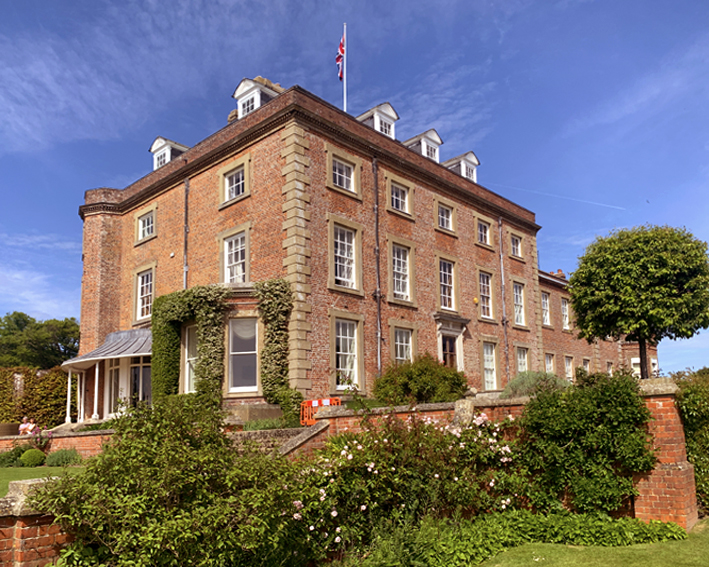 St Clere
St Clere
There had been a house at the picturesque site of Saint Clere in Kemsing for eight centuries before anything interesting happened there. The first occupants were the C13 Aldhams, who named the house after themselves. The next were the C14 St Cleres, who changed its name to their own. A new house in the C15 kept the name, as did yet another built in the C17 by Sir John Sedley. The prominent Evelyns owned it in the C18; in the late C19, it was owned by the Governor of the Bank of England, Sir Mark Collet; and, coincidently, it was inherited in 1935 by Montagu Norman, who held the same position for 24 years. Norman’s family still owns the property. In 1980, this historically undistinguished house finally enjoyed the limelight, when it was cast as the location for a movie adaptation of Agatha Christie’s ‘The Mirror Crack’d’, and suddenly counted Elizabeth Taylor, Tony Curtis, and Rock Hudson among its visitors.
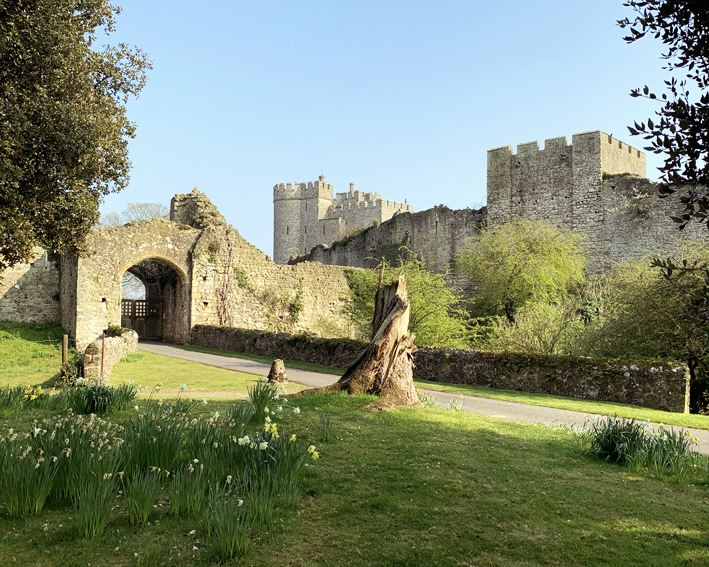 Saltwood Castle
Saltwood Castle
On the South Kent coast, north of Hythe, stands one of Kent‘s best castles, both for looks and history. The site was attractive to Bronze Age settlers and Romans alike, and Aesc built a castle there in 488 during the early Germanic settlement. The current Norman castle was constructed in the C12, and subsequently expanded. In the centuries to follow, it was no stranger to famous guests. The first were Becket’s assassins on the eve of his murder in 1170. It was appropriated by the Archbishop of Canterbury until 1540, when Cranmer was obliged to hand it over to Henry VIII. The 1580 earthquake left it in ruins, until its restoration in the late C19. The Deedes family then bought it; the MP and journalist Bill Deedes was born there. Later owners were Sir Martin Conway, the mountaineer, and Lord Clark, the art connoisseur, not to mention his notorious son, Alan Clark MP, whose widow still occupies it.
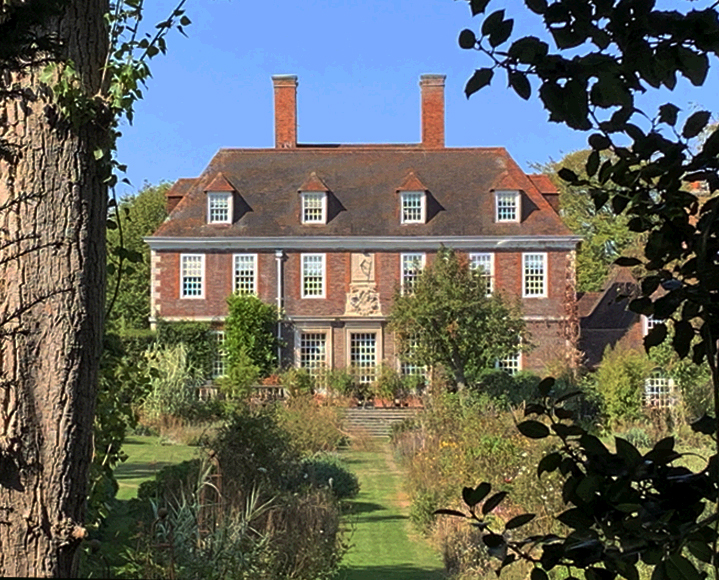
The Salutation
The most surprising thing about The Salutation is its whereabouts. Though situated in a seemingly urban location at the end of Upper Strand Street in Sandwich, the archway to its courtyard feels like a portal to a rural estate. It is in fact on the edge of town nearest the sea. The house is a masterpiece of economy: a Queen Anne design that manages to be both compact and capacious. Apart from its good looks, it possesses a normally well-kempt garden. It was designed in 1911 by Edwin Lutyens for three bachelor brothers – two solicitors and a banker – called Farrer. The last survivor died in 1948, and it passed through the hands of a sculptor before becoming a well located plant nursery. Its unusual name, which originally belonged to a pub at that location, re-acquired its meaning when it was turned into a B&B in 2004. It reopened as a hotel in 2017, but closed in 2020.
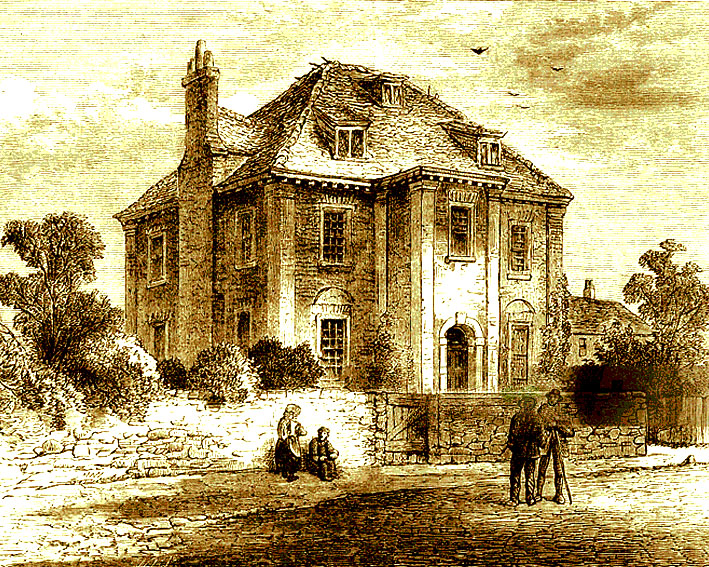 Sayes Court
Sayes Court
Named after Geoffrey de Saye, who married in the C12 into the Magminots – the long-term Norman owners of a Deptford manor – Sayes Court was occupied in the C16 by Cardinal Wolsey and the Duke & Duchess of Suffolk. Its heyday was the 1650s, when new owner John Evelyn transformed the estate into magnificent gardens that admirers flocked to see. The rot started as soon as 1698, when Peter the Great stayed there, and his courtiers half-wrecked it. The degradation accelerated until, in 1728, the house was largely demolished, and what remained became successively a workhouse, depot, and factory. In 1869, philanthropist WJ Evelyn built almshouses and gardens there, which he offered in 1884 to Robert Hunter and Octavia Hill, providing the original catalyst for the National Trust. Later efforts to restore its horticultural heritage achieved only a small park with a playground. The house itself was archaeologically excavated in 2011, but the remaining estate has since disappeared under housing.
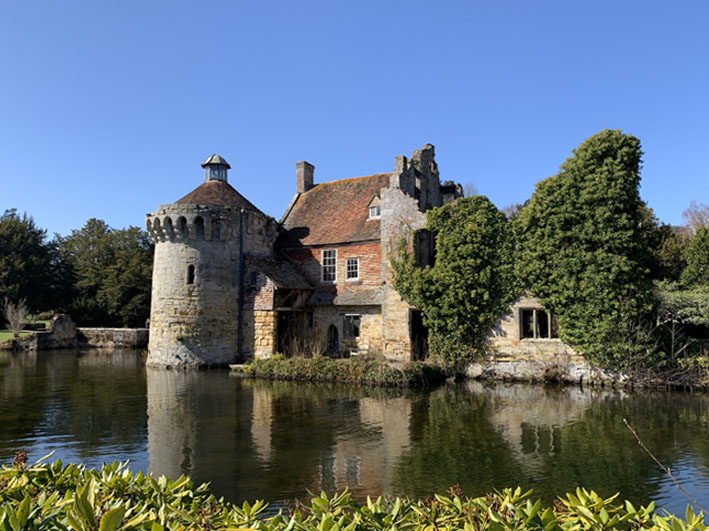 Scotney Castle
Scotney Castle
What we call Scotney Castle, near Lamberhurst, is actually two separate structures a few minutes’ walk apart. Much the more exciting is Scotney Old Castle, a wonderfully romantic affair set on an island in a lake fed by the River Bewl. Along with its glorious gardens, it offers the feel of a miniature Leeds Castle. The estate belonged in the C12 to Lambert de Scoteni, and the castle was first erected around 1380. Further additions were made from 1580 to 1630. It fell into disrepair, and in 1843 the New Castle was built in Tudor Revival style by Anthony Salvin. In 1970, the two castles were left to the National Trust. Parts of the New Castle were rented out for accommodation, the most famous tenants being Denis and Margaret Thatcher, who used the Belfry Suite as a retreat; his title was ‘Baronet Thatcher of Scotney in the County of Kent’. The New Castle was opened up to visitors from 2007.
 Scott’s Hall
Scott’s Hall
The Bruces’ main rival for the Scottish throne was Edward Balliol (ca 1283-1364), who despite the support of England’s Edward III eventually lost out. Originally called de Balliol de Scot, his descendants expediently dropped the ‘de Balliol’. Consequently, when they moved from Brabourne to a house at Smeeth in 1429, it became known as Scot’s Hall. It was replaced by an extremely grand affair in 1491, described as one of the finest manors in Kent. It burnt down, and was rebuilt even more expansively in 1634, regularly attracting Samuel Pepys as a visitor. At one time, the Scot(t)s were said to own so much Kentish property that they could ride from Smeeth to London without leaving their own land; yet they fell on hard times in the late C18, and sold the dilapidated house in 1784. It was largely demolished in 1808, and later replaced by today’s much smaller affair.
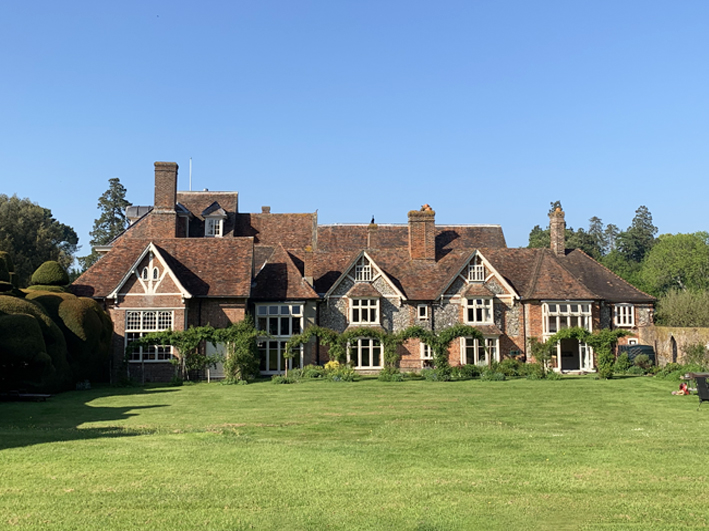 Sharsted Court
Sharsted Court
The site of Sharsted Court near Newnham on the North Downs is ancient. There are indications that the Belgae settled there in the Bronze Age. A house appeared after the Norman Conquest, when Bishop Odo of Bayeux owned it. Since it was in the middle of woodland, it may have been a hunting lodge. It was occupied by the Sharsted family in the C12 and C13, but passed in 1320 to the de Bournes of Doddington. Early in the C17, it became the possession of the Delaune family, who substantially upgraded it in 1711 and held onto it until the 1940s. One owner during that time was the Victorian philanthropist Chapman Delaune Faunce-De Laune, who threw the estate open to the public for a huge summer fete. In 1966, it was bought by Canon Wade, father of Virginia, the tennis champion. The Wades substantially restored it, and for a while made it available for weddings.
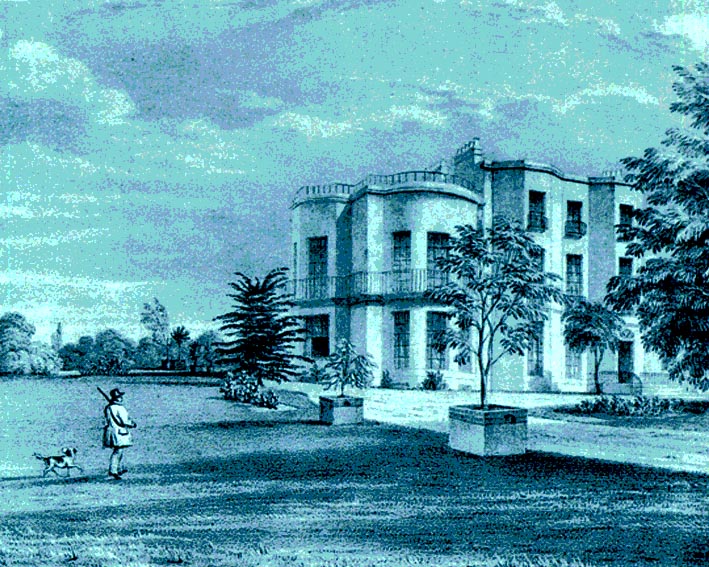 Shrewsbury House
Shrewsbury House
When Charles Talbot (1753-1827), the 15th Earl of Shrewsbury, built himself a splendid house on Shooters Hill in which to house his art collection in 1789, he made no bones about what to call it: Shrewsbury House. The house was sufficiently attractive, and enjoyed such outstanding surroundings, that Christopher Greenwood had it illustrated for inclusion in his ‘An Epitome of County History’ (1838); and, when the property was put on the market in 1873, the particulars mentioned its three storeys and basement, its 15 bedrooms, and its 54 acres including gardens, woods, and peerless views. It was leased in 1799 to the Prince of Wales, who had Princess Charlotte of Wales educated there, and later served as a boys’ boarding school and a convalescent home for children before being acquired by Fred Halse, a future Woolwich mayor. He demolished it in 1923 and replaced it with the large but less delightful successor that survives today as a community centre.
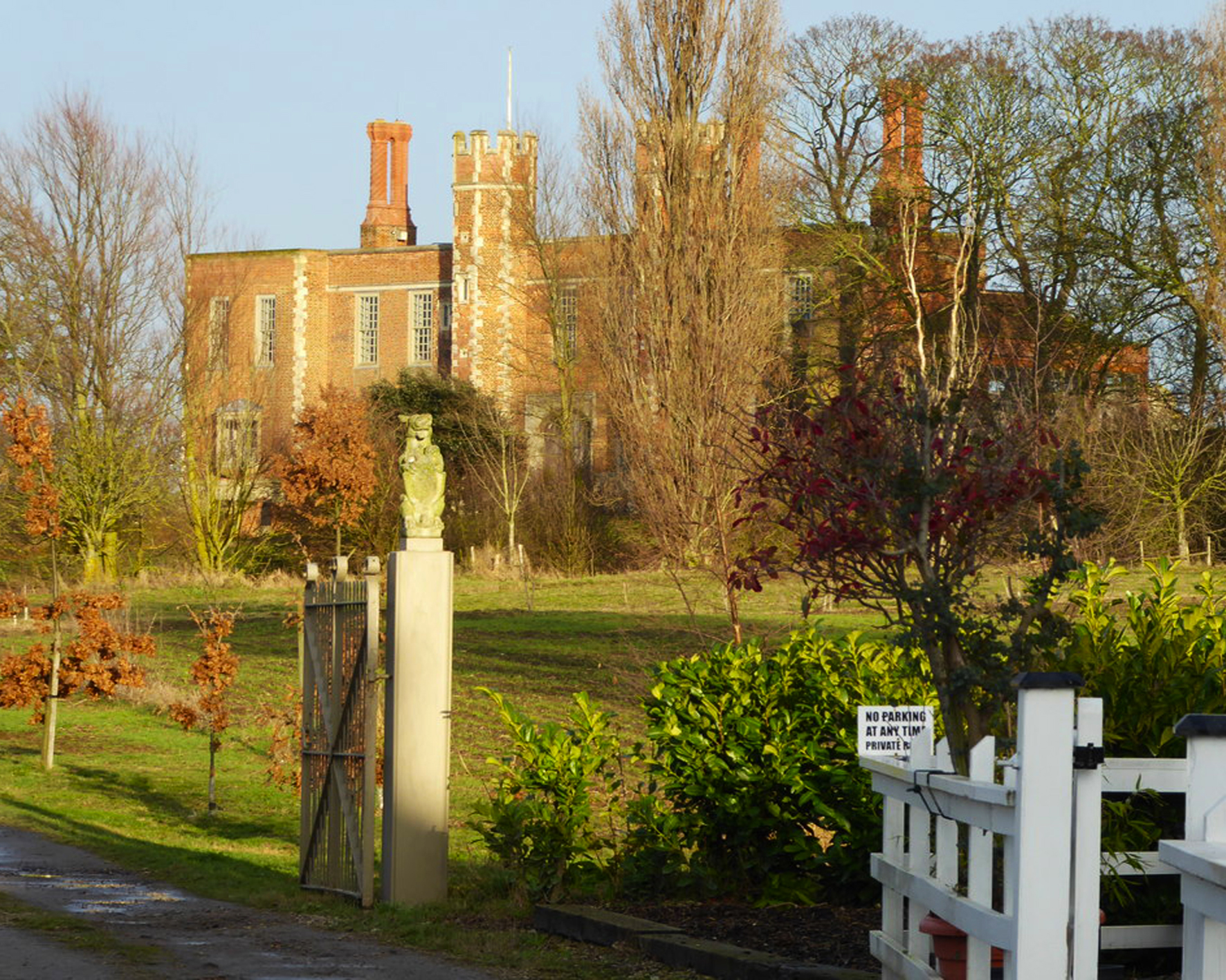 Shurland Hall
Shurland Hall
The once mighty Shurland Hall is now a curious construction that in some lights resembles a children’s cut-out castle. The site near Eastchurch has a glorious history, however. William the Conqueror originally gave Baron de Shurland permission to build a fortress there soon after the Norman Conquest. In the early C16, Sir Thomas Cheyney rebuilt it in red brick, strengthened to help prevent enemy incursions into the Rivers Thames and Medway. He entertained fellow Kentish personages King Henry VIII and Queen Anne there in 1532; Queen Elizabeth I was a later owner. Thereafter, the castle declined in importance. In WW1, it became the headquarters of the fledgling Royal Naval Air Service, and suffered further military degradation in WW2, after which it was abandoned. In 2006, however, the old servants’ wing and gatehouse were restored by the Spitalfields Trust with English Heritage funding, and in 2013 it became a private residence. By 2018, it was on the market at £2.5 million.
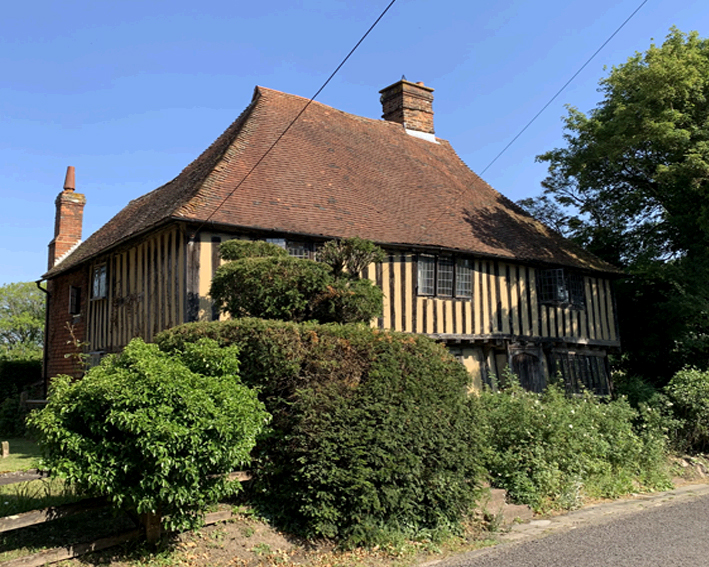 Smallhythe Place
Smallhythe Place
Small Hythe, a hamlet just outside of Tenterden, gets its name from the old word for a harbour, the area having been on the coast until the cataclysmic flood of 1287. The building that borrows its name is a C16 house on the left side of the road running south to Rye. It is sufficiently attractive to be worth a quick detour after a visit to the Chapel Down vineyard nearby. The interior is of interest to avid theatre fans, Smallhythe having been occupied between 1899 and 1928 by the noted actress Ellen Terry. In best luvvie fashion, she liked to entertain fellow thespians there, and persuaded some to give her mementos – among them Sarah Bernhardt, Alexandre Dumas, and Sir Arthur Sullivan – which are now on display. The house was taken over in 1947 by the National Trust, which occasionally organises events of the kind that appeal to events organisers.
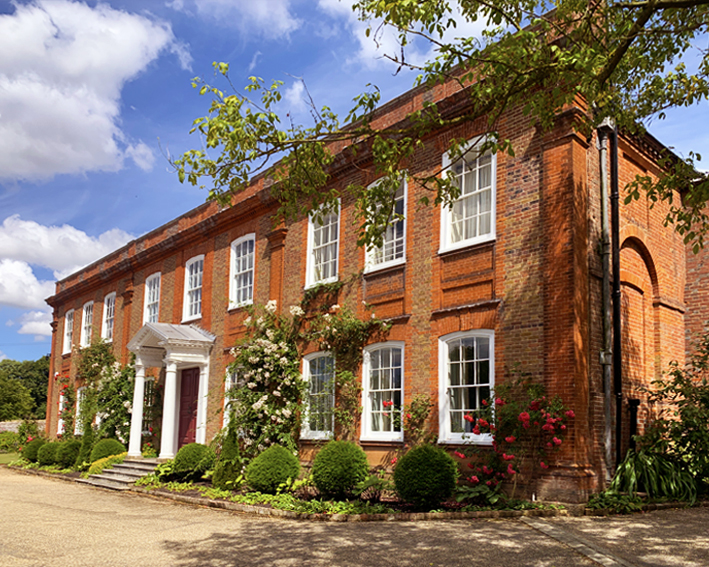 Smith’s Hall
Smith’s Hall
West Farleigh Hall was formerly known as Smith’s Hall, and is again today. It was built in 1719 in place of an earlier C15 building. It has remarkably little history for its age – no fires, murders, or ghosts – so its interest is purely aesthetic. As a private home, it is not available for inspection on the inside. However, its Queen Anne facade can easily be viewed from Lower Road just along from the Tickled Trout, where it enjoys a splendid vista towards the Medway in the west. It is worth a peek both for its pleasing symmetry and its family resemblance to both Bradbourne House and Finchcocks, suggesting a common architectural inspiration, if not a common architect. Of most interest to visitors, however, are the delightful gardens. As at Sissinghurst, they are laid out in ‘rooms’, and are surprisingly expansive and varied in complexion. They can be visited a couple of times a year through the National Garden Scheme.
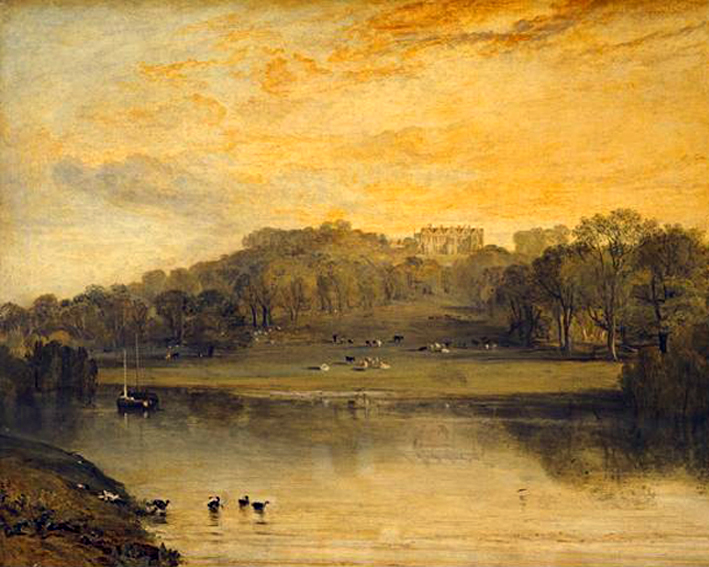 Somerhill House
Somerhill House
Alongside Portumna Castle in Ireland, Somerhill House near Tudeley is one of two homes built by Frances Walsingham, the daughter of Sir Francis, and her third husband the Earl of Clanricarde in the early C17. Parliamentarians confiscated the house from their son in 1645, but it was returned to their granddaughter at the Restoration. It then passed through numerous hands before growing derelict, though it was painted by JMW Turner in 1811. It was considerably upgraded in the late C19 by Sir Julian Goldsmid, the outcome being the second-largest house in Kent after Knole; its library is the biggest room outside Knole’s Gallery. During WW2, the house was sequestrated as a camp for Italian prisoners of war. After the d’Avigdor-Goldsmids sold it in 1980, it fell into considerable disrepair, but in 1993 was taken over by the Somerhill Charitable Trust. It now houses a unisex pre-prep school, and prep schools for girls and boys.
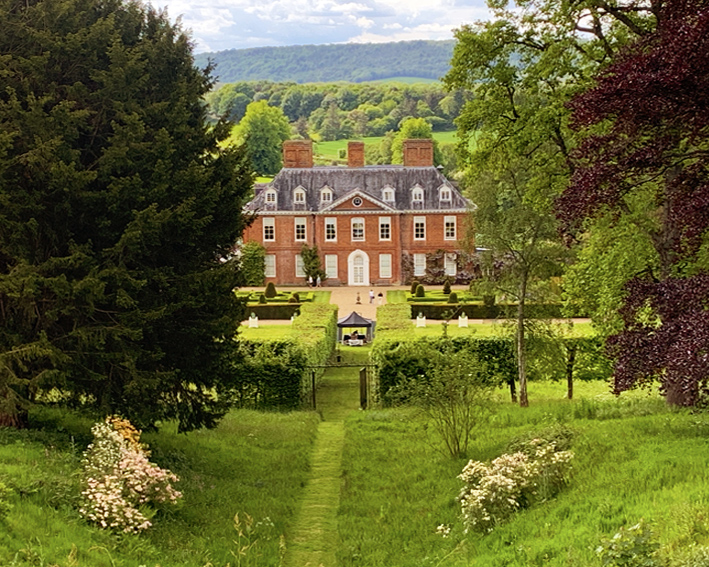 Squerryes Court
Squerryes Court
The Squerryes Court estate got its name from the Squery family who occupied it from the late C13 until 1448. The fact that it is close to Westerham points to one of its appeals: a delightful setting. The current house was built in the 1680s in a style anticipating Georgian. The Wardes, eight generations of whom have occupied the house since 1731, adorned the house’s interior with numerous Old Masters and antiques. It is now relatively modest by stately-home standards, its two wings having been demolished after WW2; but it is attractively symmetrical, and enjoys 10 acres of gardens, plus a large lake. The total estate comprises 2,500 acres, of which a third is woodland and the rest agricultural. As it produces sparkling wine, wine-tasting is likely to play a role in any visit. The estate is available for weddings at the Winery or in the grounds, and conferences or receptions inside the house.
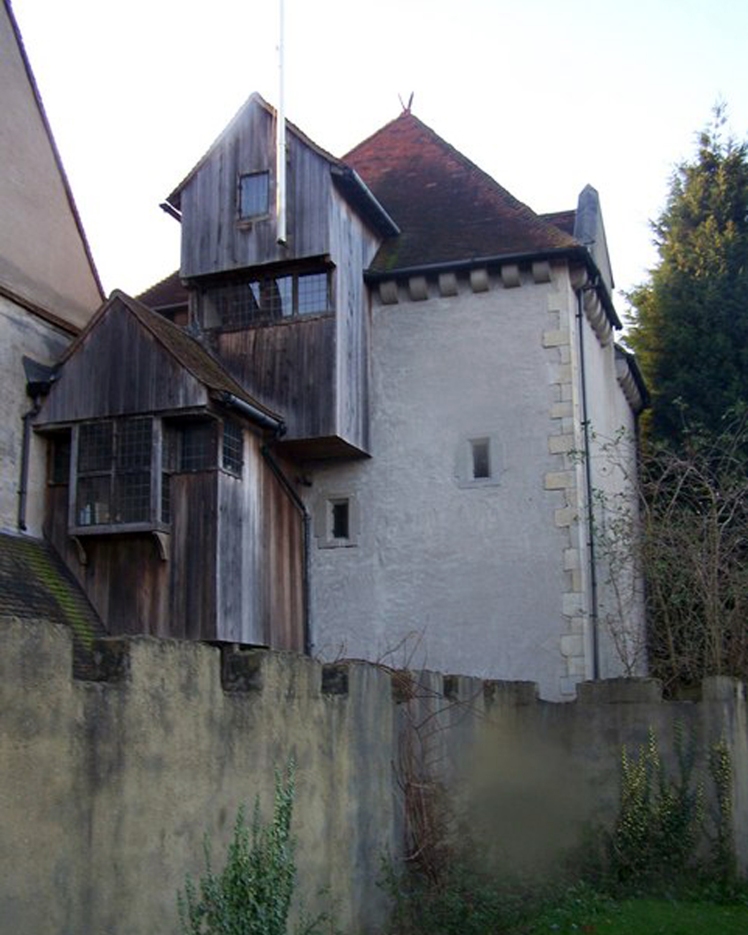 Starkey’s Castle
Starkey’s Castle
On the road north out of Wouldham, in a bend of the River Medway, is a construction that truly deserves the epithet ‘peculiar’. It is called Starkey’s Castle, both parts of which deserve comment. It is named after Sir Humphrey Starkey, a baron who lived in interesting times. He was knighted by Richard III and made Lord Chief Baron of the Exchequer, but only survived Henry VII’s usurpation of the throne by a year. As for his home, it was not actually a castle at all, but a stone hall-house. Though its date of construction is disputed, it seems to be C15, after which it evolved in stages, other additions being tacked on in the C18. Unusually, it has two solars, or great halls. It was converted to agricultural labourers’ accommodation in the C19, and just about survived the experience intact, for which reason it now has a Grade 1 listing.
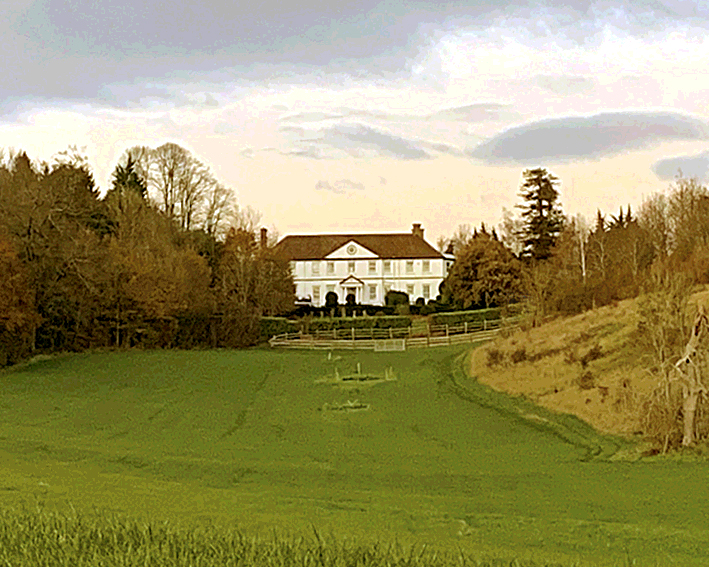 Stede Court
Stede Court
There are not many manor houses in mid Kent with a history so rich that they have had books written about them, but Stede Court north of Harrietsham is one. The estate is yet another that belonged to the abominable Bishop Odo in the wake of the Norman Conquest. By the C15, it was owned by the eponymous Richard Stede, and would remain in the Stede family’s hands until 1735. The last Stede, Edwyn, was a key figure in the development of cricket. He liked to gamble with his kinsmen, the Hamiltons of Chilston Park, and to that end put together the first representative Kent team. Unfortunately, he lost his whole fortune, including the estate. During WW2, Stede Court became a British Army officers’ mess, at one stage occupied by the future Field Marshall Montgomery; his room, where he is said to have met with Churchill, is now called the General’s Room. The handsome Palladian-style white house is still privately owned.
 Stonewall Park
Stonewall Park
Peter Woodgate built a house on his land at Stonewall Park in Chiddingstone Hoath in the late C16, but it was replaced in the early C19 by John Woodgate with an impressive new Georgian building 150 yards to the east; a fragment of the first house was retained as an entrance lodge. Woodgate also made a start on laying out the estate, but was obliged to sell up in 1817 when the Tonbridge Bank folded. New owners in the C20, the Flemings, embarked on redeveloping the extensive gardens, which became so notable for daffodils, bluebells, and rhododendrons that they now feature in the National Garden Scheme. Around 1960, an archaeological dig unearthed large numbers of Mesolithic flints and Neolithic pottery in ancient rock-shelters on the estate. The elegant three-storey house, surrounded by 140 acres of parkland, is advertised as a venue for film productions, one major selling-point being a splendid conservatory containing mature camellias.
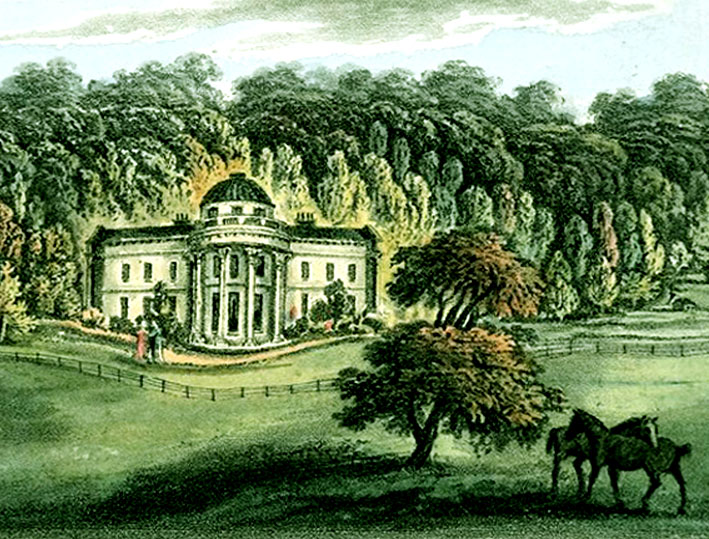 Sundridge Park
Sundridge Park
From the early C13, the Sundridge estate north of Bromley was farmland attached to the Bishopric of Rochester. A house was probably first built there by lawyer Thomas Washer early in the late-C17. A century later, corn merchant Sir Claude Scott took the advice of Humphrey Repton’s ‘Red Book’ and had John Nash design an ostentatious replacement. Its construction was completed by Samuel Wyatt, who also transformed the surrounding land to parkland. In 1878, Sundridge Park railway station was built for the Scotts’ private benefit, and a pheasantry established that was frequented by the Prince of Wales. By the turn of the C20, however, the 300-acre estate was unwanted, and no buyer could be found; so it started to be broken up. In 1903, a golf club was opened, followed by a classy hotel; yet financial issues persisted. Having been converted to a training centre, the Grade One listed mansion is now being developed for residential use.
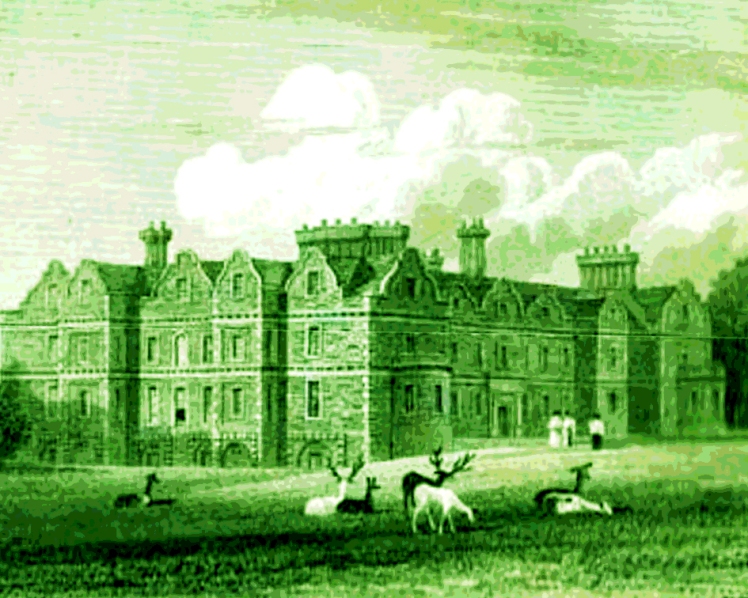 Surrenden Dering
Surrenden Dering
Anyone hoping to visit or even view the magnificent Surrenden Manor near Pluckley will struggle, because little of it remains. From the mid-C15 onwards, it was the ancestral pile of the Derings for nearly five centuries, being given the alternative name Surrenden Dering to distinguish it from Surrenden Chute – the ‘Old Surrenden Manor’ – in Bethersden. It holds a place in architectural history, being the source of the Dering windows, now familiar in the village and surrounding area, that were inspired by the exploits of the 1st Baronet Dering during the Civil War. It was rented out in the late C19 to the wealthy American Walter Winans, who invited celebrity compatriots to stay, including Henry James; Gore Vidal set his novel ‘Empire’ there. In 1928, the estate was broken up and sold off, the house temporarily becoming a boys’ school. In 1952, most of it burned down. Only the service wing remains, now known as Surrenden House.
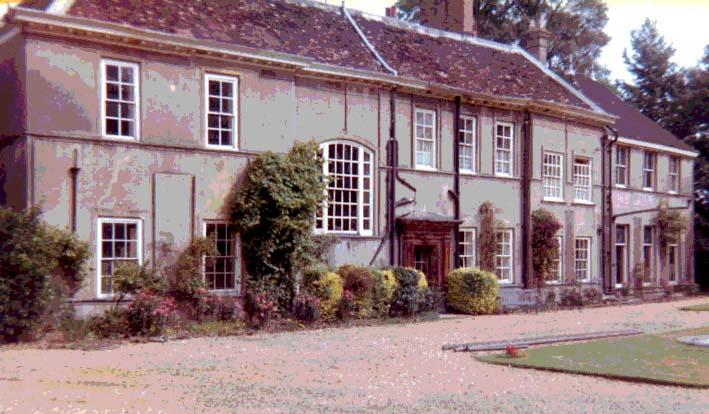 Sutton Place
Sutton Place
At Sutton-at-Hone there once stood a Tudor house so impressive that an old account cited by Christopher Greenwood in his 1838 ‘History of Kent’ described it as “a mansion of great note and magnificence”. Sutton Place – previously known as Brook Place – must have been quite exceptional, since it became the home of one of England’s richest men, Sir Thomas Smythe from Westenhanger, who died there in 1625 after enlarging and enhancing it and renaming it Fleet House. A disaster befell it late in the same century, however, after it was purchased in 1699 by Sir John Le Thieullier. Informed that the house was too big for the estate, he ordered much of it to be pulled down without even having seen it, so destroying its essential grandeur. More was demolished in the late C18, although improvements were made to the remainder. It was finally torn down in the C20; only the listed garden wall along Parsonage Lane survived.
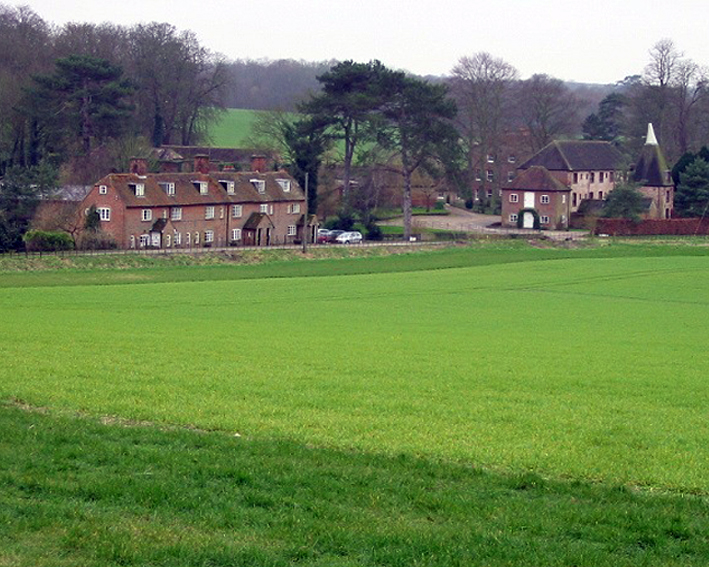 Swarling Manor
Swarling Manor
Situated a couple of miles south of Canterbury near Petham, Swarling Manor dates from the C18. Architecturally the property is something of a hotchpotch of buildings, but they are surrounded by 75 acres of picturesque Kentish countryside. The site also has some history. Swarling Down is a candidate for the site of the first military encounter between Julius Caesar and the native Britons. Following the Norman Conquest, the lands thereabouts belonged to Archbishop Lanfranc, and there was a chapel on the site of the current Little Swarling Farm. Built in the C14, the Manor itself passed through various hands before the Hammonds acquired it. They occupied it throughout the C18 and C19, during which time it became a prosperous hop farm, and the current house, a conservative redbrick Georgian affair, was erected. With its expansive gardens and oak-beamed barn, the estate has been offering a venue for outdoor or indoor weddings for a quarter of a century.
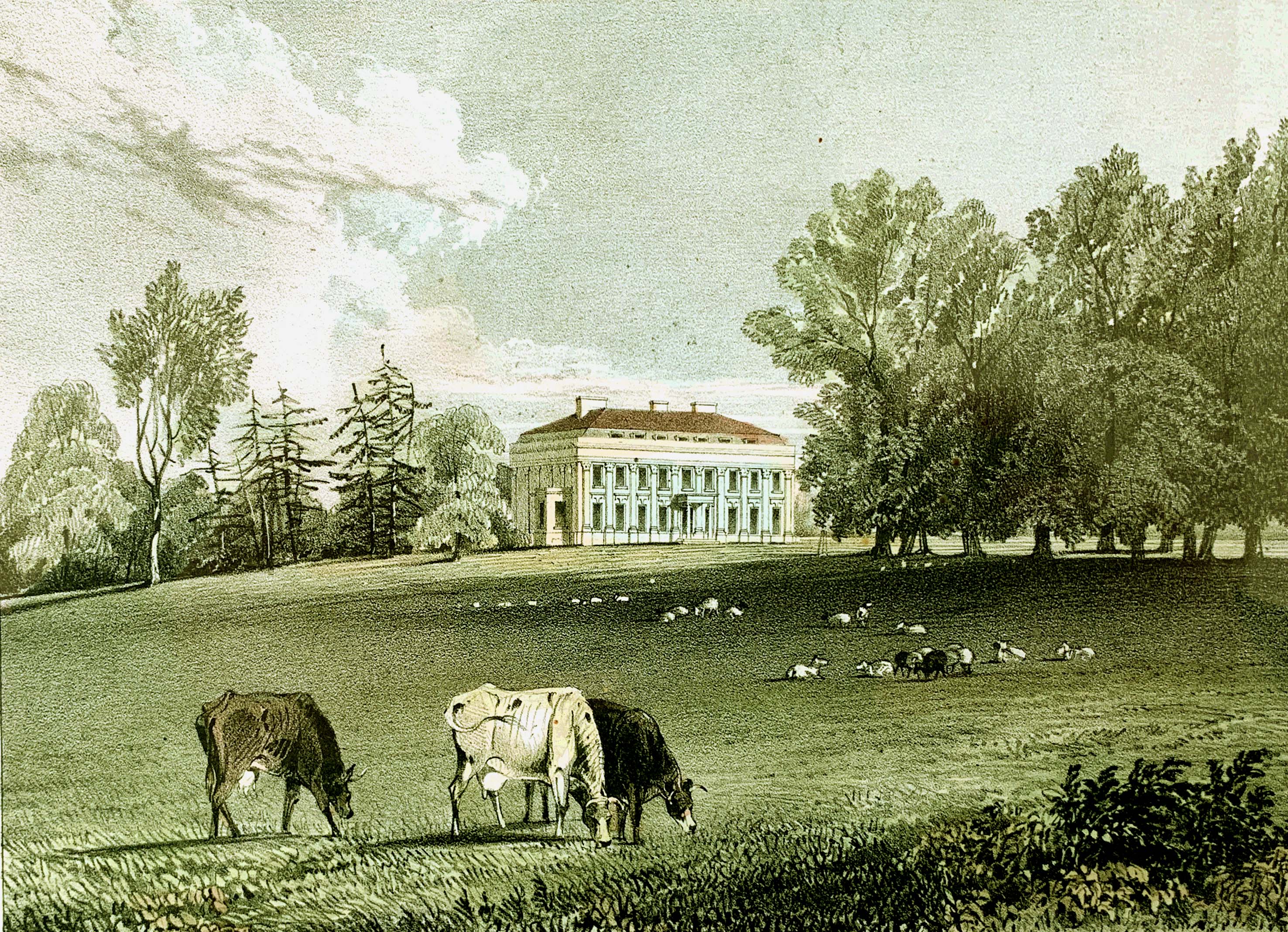 Syndale House
Syndale House
The land south of the London-Dover road immediately west of Ospringe was originally owned by Rochester Priory, but by the C16 was in the possession of the Dean & Chapter of Rochester. In the revolutionary era, the Rump Parliament took it away and sold it to Daniel Judde, who in 1652 had Judde House built there, possibly by Inigo Jones. Come the Restoration in 1660, however, it was returned to the Dean & Chapter, and the house became known sarcastically as Judde’s Folly. Early in the C19, John Hyde bought it and completely renovated the exterior in splendid neo-Palladian style. This ‘Syndale House’ remained in private ownership until 1961 when, like so many post-War stately homes, it conveniently went up in flames, leaving behind a single wall. The hotel that replaced it, known as Judd’s Folly, comes as a surprise after the approach through charming English parkland. Though perfectly comfortable inside, it is rather an eyesore.
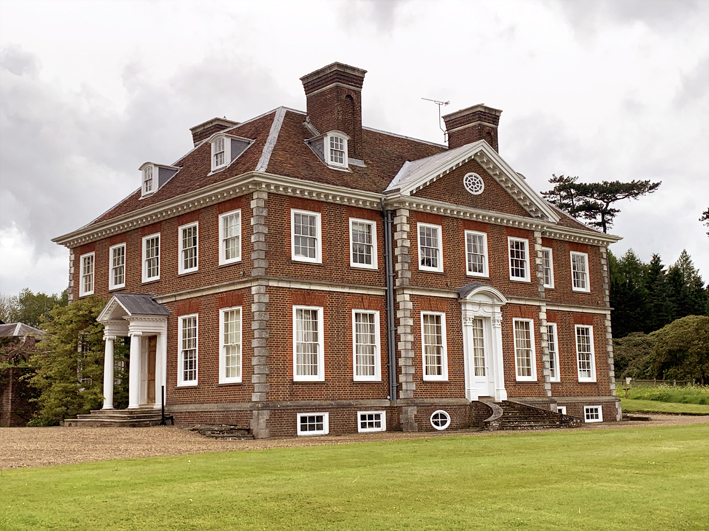 Torry Hill
Torry Hill
One of the great estates in the triangle between Faversham, Lenham, and Sittingbourne on the North Downs is Torry Hill, just west of Doddington. Its claim to fame is as the ancestral seat of the Leigh-Pembertons, whose Sir Robin, Baron Kingsdown, was Governor of the Bank of England for a decade. The current house was built in 1958 to replace a larger structure extensively demolished in 1937. Being a private home, the estate is not generally open to the public, which is a pity. It lies in an unusually unspoilt part of Kent, enjoying expansive views to the North Sea, and is well endowed with curiosities. One is its extensive miniature railway, built in the 1930s but no longer operational. Another is its cricket pitch and pavilion, home since 1858 to the Band of Brothers Cricket Club. The house does however possess eight acres of pleasant gardens that are occasionally opened to the public through the National Garden Scheme.
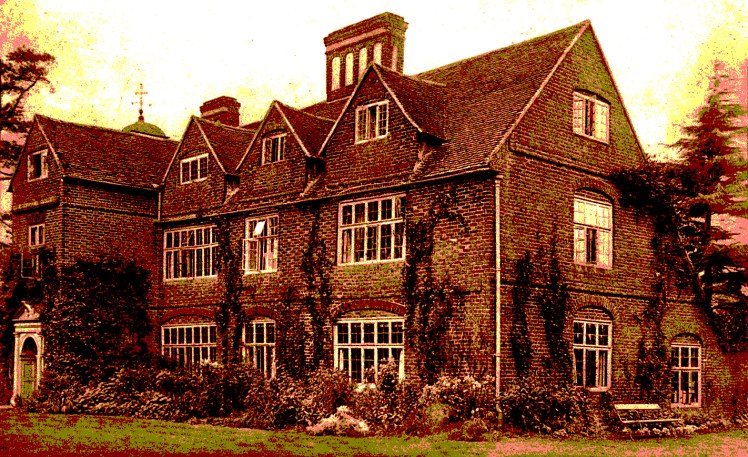 Tunstall House
Tunstall House
Tunstall House, south of Sittingbourne, was built around 1660 for John Grove, steward to the wealthy Hales family. That he could afford such a property, with its 80-acre estate, speaks for his fiscal acumen. His great-grandsons sold the property in 1755 to a local vicar called Bland, whose family retained it for three generations, during which time it served as a boarding school for girls. It was next sold in 1808 to farmer William Murton. Three Webb brothers relieved him of it by marrying three of his daughters, and it remained home to a succession of Webbs until recently. Having changed hands so seldom, it has undergone remarkably little renovation. Though no grander than countless country houses, it is Grade 1 listed, not for its architectural specialness so much as the fact that its interior remains essentially unchanged since its earliest days, and the function of its many rooms still tallies with an inventory taken when Grove died.
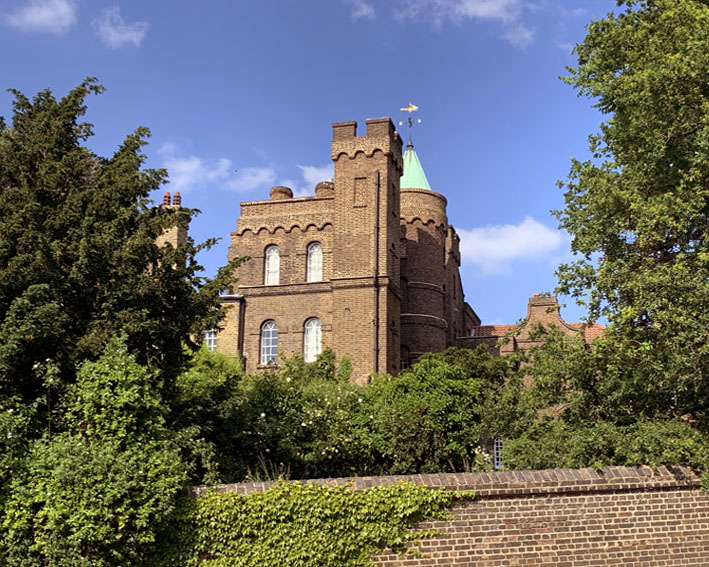 Vanbrugh Castle
Vanbrugh Castle
In 1716, the great architect Sir John Vanbrugh took over from Sir Christopher Wren as surveyor to the Greenwich Hospital. He obviously liked the area, because he bought a 12-acre plot there to build his own house on. Whereas most of his commissions were in baroque style, he decided to make his Castle a neo-Gothic construction, decades before Strawberry Hill Gothic; hence its slender towers and narrow windows. Vanbrugh also made it asymmetrical, which ran against the practice of the day. It is thought to have been inspired by Vanbrugh’s long imprisonment in the Bastille, for which reason it was possibly first known as ‘Bastille House’. More than anything, he would have relished the location for its riverine view, which stretched as far as Westminster. He even added a roof garden as a vantage point. The House was bought in 1907 by Alexander Duckham, who added a flying duck weathervane and gifted the estate to the RAF.
 Vinters Park
Vinters Park
It is hard to imagine now, but the area immediately east of Maidstone town centre was occupied until recently by a huge country estate containing a picturesque manor house. It was named Vinters Park after Roger de Vinter, who acquired the land in 1343 and built its first manor. In 1783, it was sold by Lord Ongley to James Whatman Junior, the great papermaker’s son, who owned Turkey Mill opposite; along with its then 68 acres, it cost £2,500. Whatman had a substantial new house built within four years. He could not move in at first, owing to a stroke, but he would die there in 1798. The house suffered a familiar fate in the C20, being occupied by the armed forces in WW2 and rendered uninhabitable. In the 1950s it underwent the usual unexplained fire, and the remains were demolished to make way for development. A morsel of the estate remains as the ‘Vinters Valley Nature Reserve’.
 Waldershare Park
Waldershare Park
The Waldershare estate in Shepherdswell, just west of the road north from Dover to Sandwich, was acquired in 1705 by Sir Henry Furness, who within seven years had the current house built. It was an attractive affair, with two shades of red brick and stone dressings. Unusually in Kent, being in a valley, it did not enjoy particularly extensive views. However, it did possess fine gardens, a wilderness, and parkland amounting to 60 acres. In the C18, it passed by marriage to Earl Guildford, whose descendants continued to own it for two centuries, and restored it after it was gutted by a fire in 1913. The adjacent stables originally consisted of a classic full courtyard, but only half now remains. In WW2, the estate housed a hospital and a school. The wilderness is now planted with trees, much of the parkland is agricultural, and the gardens are tidy but rudimentary. The house was divided into flats in the 1990s.
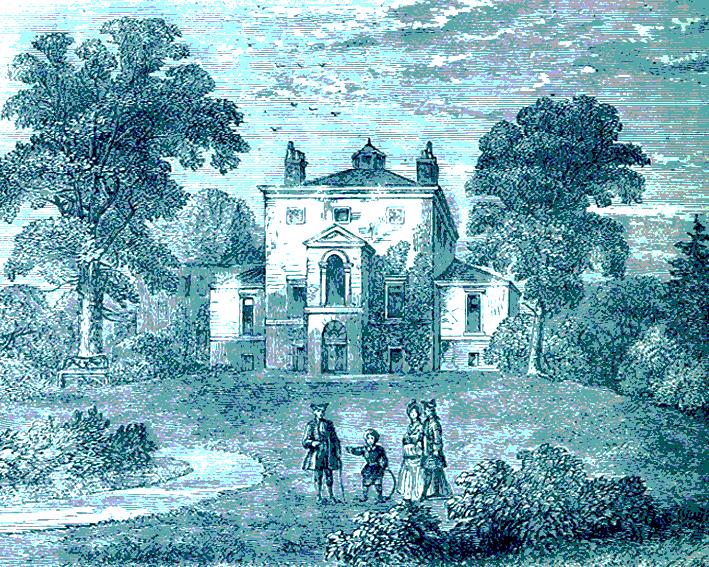 Westcombe Manor
Westcombe Manor
Today Westcombe Park is a suburban area in South-East London with its own railway station. When Blackheath was still officially in Kent, however, it was a country estate surrounding West Coombe Manor, a curious but conveniently situated house famous for being home to a succession of personalities. William Lambarde the antiquarian lived there in the C16, followed in the C18 by Captain Galfridus Walpole, the prime minister’s brother who was Postmaster General; the celebrated actress Lavinia Fenton, alias the Duchess of Bolton, after whose most famous role Peachum Road is named; Robert Clive, the first Governor of the Bengal Presidency; and William Petrie, who founded the Madras Observatory. In the C19, Thomas Brocklebank, co-founder of the General Steam Navigation Company, lived there, while another great shipbuilder, Sir Alfred Yarrow, lived in the neighbouring Woodlands House in Mycenae Road at the turn of the century. Westcombe Manor itself was demolished in 1855, the victim of urban sprawl.
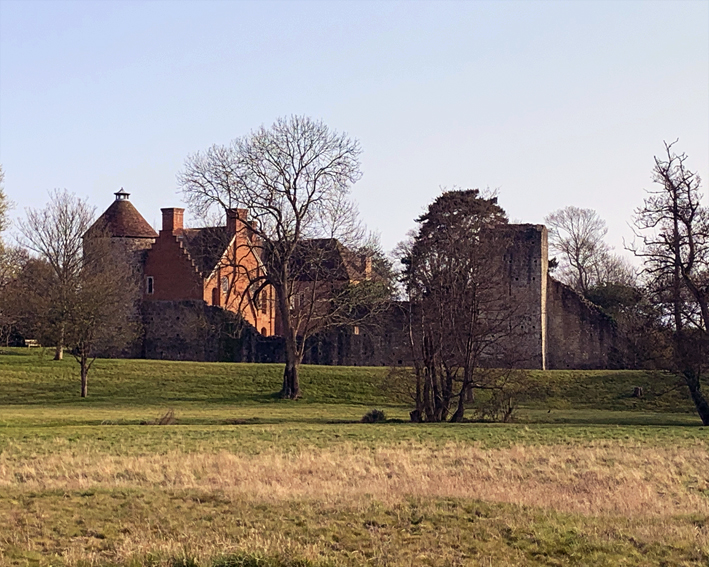 Westenhanger Castle
Westenhanger Castle
What still stands of Westenhanger Castle, next to the disused racecourse, is particularly interesting to inspect. It resembles buildings from two completely different eras, according to which direction one looks from. The estate was owned in the C11 by King Cnut. The de Criols were granted permission to build a house in 1343, which eventually contained 126 rooms; the last of their line was beheaded in 1461 during the Wars of the Roses. It was later owned by Queen Elizabeth, and occupied by her ill-starred collector of customs duties, Thomas Smythe. The estate was used as a headquarters for defence against the expected Spanish invasion in 1588. Much of it was taken down after the estate was sold in 1701, and the current more modest house built into the remains. Restoration efforts are now ongoing. The site incongruously displays a replica of ‘Discovery’, a ship sent in 1606 to found the Jamestown colony in America.
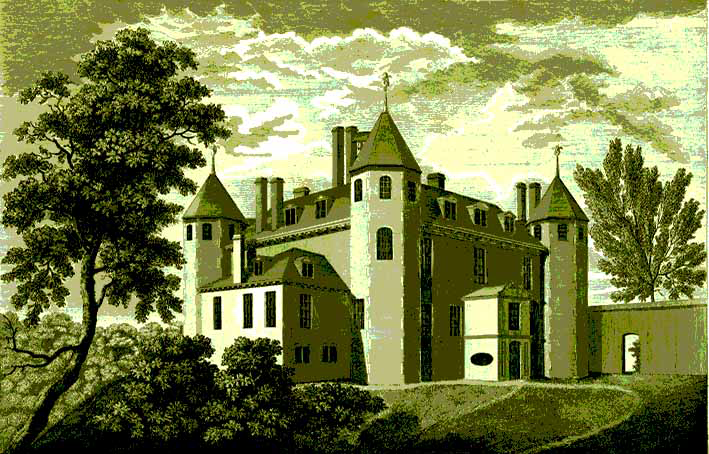 Wickham Court
Wickham Court
Anne Boleyn‘s great aunt, who went by the same name, married Sir Henry Harden, a Norfolk lawyer and serious collector of estates he inherited or bought. One of the dozens he acquired was at West Wickham, where he built a noteworthy house. A product of the nascent Tudor era, it was something of a hybrid architecturally, a cross between an old fortified building with castellations and turrets and a more modern brick-built house. The original design was strikingly tidy, with a six-sided turret in each corner of the square building, and an open courtyard inside that was later roofed over; but the symmetry was disturbed by later additions. It was sold to John Lennard in 1579, and remained in his family for an impressive 350 years, when the last home-owner emigrated. The house became a hotel, was sequestrated during WW2, and converted successively to a teacher-training college, a university, and finally a prep school that closed in 2023.
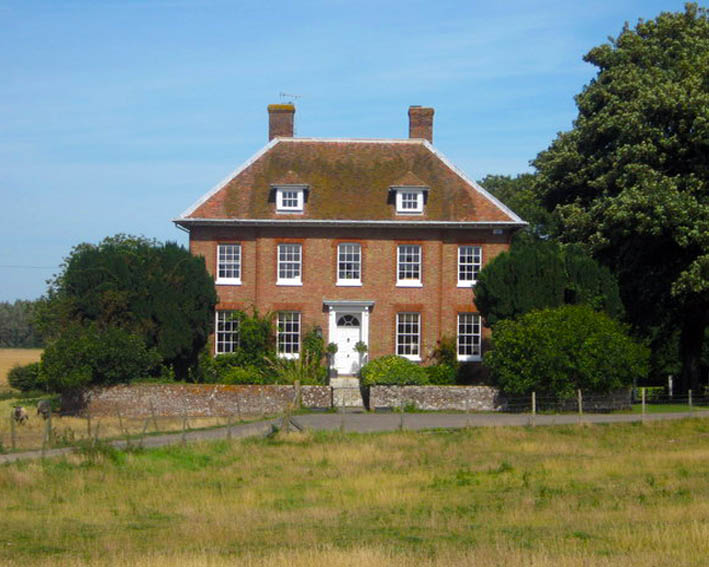 Wye Court
Wye Court
As the first crossing-point on the Great Stour for travellers heading from Dover to Rochester on the Pilgrims’ Way, Wye assumed a strategic significance as early as the C6. Its attractive environs made it an appealing location for a royal residence, and a large manor called Wye Court was built on Olantigh Road in the Middle Ages. It is known that both Edward I and Edward II stayed there, the latter while waiting to be crowned; and Henry VI visited in 1428, his Chancellor then being John Kemp of Olantigh. Elizabeth I granted the estate to Mary Boleyn’s son Henry Carey, after which it remained in private hands. The house was demolished by the Finches in the early C18 and replaced with the relatively modest two-storey redbrick house that still survives. The large and deep circular dungeon boasted by its predecessor, known as Lollard’s Hole, endured until the C19. Wye College purchased some of the estate in 1925.
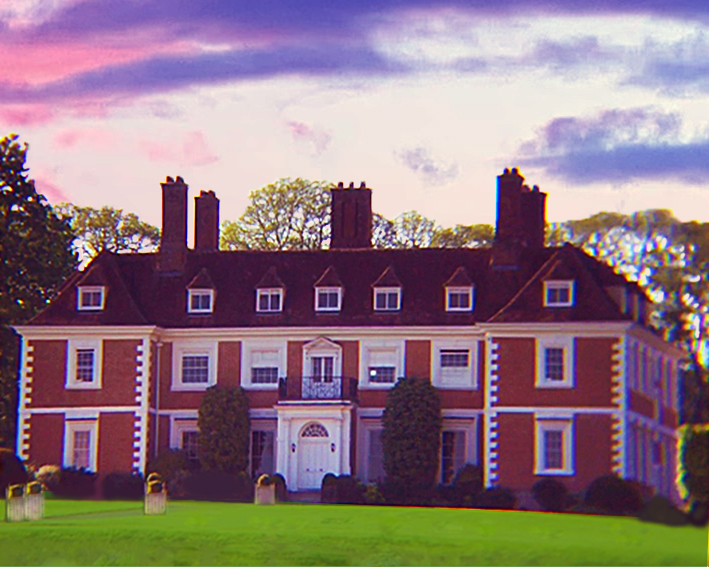 Yotes Court
Yotes Court
Yotes Court was built in the 1650s for James Master. As such, it is an architectural rarity, being an example of a high-class house built during Cromwell’s dictatorship. Although it looks perfectly normal from the front, from the rear it resembles three hall houses stacked side-by-side with another much larger and longer hall at either end, forming a wide H-shape. Its grandeur is particularly emphasised by its impressive ornamental gardens, laid out in 1767 and recently restored, which extend for some distance in front and behind. The house is situated midway between Mereworth and West Peckham, not far from Mereworth Castle. It served for a while as a hotel and venue for weddings, but in 2008 was restored by Rich and Susannah Ricci, the racehorse-owning couple, as their private home. The Riccis have additionally turned adjacent farmland into the Yotes Court Vineyard, most of whose 75 acres are the preserve of Chapel Down.
CREDITS ON THIS PAGE
All text: © Old Bunyard 2020. Unauthorised reproduction prohibited.
Images:
Allington Castle: ‘Allington Castle, Kent‘ by Anonymous, licensed under CC BY-SA 4.0 International licence. (Cropped).
Angley Park: ‘Creeper-clad gatehouse‘ by Jonathan Billinger, licensed under CC BY-SA 2.0 Generic. (Cropped).
Archbishop’s Palace, Charing: © Old Bunyard 2020.
Archbishop’s Palace, Maidstone: © Old Bunyard 2020.
Barham Court: © Old Bunyard 2021.
Bayham Hall: © Old Bunyard 2020.
Belmont House: © Old Bunyard 2020.
Bleak House: © Old Bunyard 2020.
Boughton Place: © Old Bunyard 2020.
Boughton Monchelsea Place: © Old Bunyard 2021.
Bourne Place: ‘Bourne Park House Geograph-3389065‘ by Stephen Richards, licensed under CC BY-SA 2.0. (Cropped).
Boxley Manor: ‘Ruins of the Abbey’s Gateway‘ by Chris Whippet, licensed under CC BY-SA 2.0. (Cropped).
Bradbourne House: ‘Bradbourne House – geograph.org.uk – 2084978‘ by Nigel Chadwick, licensed under CC BY-SA 2.0. (Cropped).
Bromley Palace: © Old Bunyard 2024.
Chartwell: © Old Bunyard 2021.
Chevening: ‘Chevening‘ by Matthew Black, licensed under CC BY-SA 2.0. (Cropped).
Chiddingstone Castle: © Old Bunyard 2020.
Chilham Castle: © Old Bunyard 2021.
Chilston Park: © Old Bunyard 2020.
Cobham Manor: © Old Bunyard 2021.
Combe Bank: ‘Combe Bank School, Sundridge – geograph.org.uk – 22861‘ by Pete Chapman, licensed under CC BY-SA 2.0. (Cropped).
Cooling Castle: © Old Bunyard 2021.
Danson Park: © Old Bunyard 2021.
Douce’s Manor: © Old Bunyard 2021.
Down House: © Old Bunyard 2021.
Dukes Place: © Old Bunyard 2021.
Eastgate House: © Old Bunyard 2021.
Eastry Court: © Old Bunyard, 2020.
Eastwell Manor: © Old Bunyard 2020.
Edenbridge House: © Old Bunyard 2020.
Egerton House: © Old Bunyard 2020.
Eltham Palace: © Old Bunyard 2021.
Emmetts Gardens: © Old Bunyard 2020.
Fairlawne: ‘Fairlawne House – geograph.org.uk – 1363808‘ by Nigel Chadwick, licensed under CC BY-SA 2.0. (Cropped).
Gads Hill Place: © Old Bunyard 2021.
Godinton House: © Old Bunyard 2021.
Godmersham Park: © Old Bunyard 2021.
Goodnestone House: © Old Bunyard 2021.
The Grange: © Old Bunyard 2020.
Great Maytham Hall: © Old Bunyard 2022.
Groombridge Place: © Old Bunyard 2020.
Hadlow Castle: © Old Bunyard 2020.
Halden Place: © Old Bunyard 2021.
Hall Place: © Old Bunyard 2021.
Heronden Hall: © Old Bunyard 2021.
Hever Castle: © Old Bunyard 2020.
Higham Park: ‘Higham Park, Bridge, Kent – gepgraph.org.uk – 123345‘ by rob bishop, licensed under CC BY-SA 2.0. (Cropped).
Hole Park: © Old Bunyard 2021.
Holland House: © Old Bunyard 2020.
Hollingbourne Manor: © Old Bunyard 2020.
Holwood House: ‘Holwood House, Keston Geograph-3094831’ by Glyn Baker, licensed under CC BY-SA 2.0. (Cropped).
Howletts House: © Old Bunyard 2021.
Ightham Mote: © Old Bunyard 2020.
Ingress Abbey: © Old Bunyard 2021.
Knole: © Old Bunyard 2020.
Leeds Castle: © Old Bunyard 2021.
Lees Court: © Old Bunyard 2021.
Linton Place: © Old Bunyard 2021.
Luddesdown Court: © Old Bunyard 2021.
Lullingstone Castle: © Old Bunyard 2021.
Lympne Castle: © Old Bunyard 2021.
Lynsted Court: ‘Lynsted Court‘ by David Anstiss, licensed under CC BY 2.0. (Cropped).
Matfield House: © Old Bunyard 2020.
The Mote: © Old Bunyard 2021.
Oakwood House: © Old Bunyard 2019.
Old Canonry: © Old Bunyard 2020.
Old Soar Manor: ‘Old Soar Manor3‘ by Ron Strutt, licensed under CC BY-SA 2.0. (Cropped).
Otford Palace: © Old Bunyard 2021.
Otham Manor: © Old Bunyard 2021.
Otterden Place: © Old Bunyard 2020.
Owletts: © Old Bunyard 2021.
Oxon Hoath: © Wendy Montandon 2020.
Penshurst Place: © Old Bunyard 2020.
Pett Place: © Old Bunyard 2020.
Port Lympne Mansion: © Old Bunyard 2022.
Preston Hall: © Old Bunyard 2021.
Provender House: © Old Bunyard 2020.
Quebec House: © Old Bunyard 2020.
Queen’s House: © Old Bunyard 2021.
Quex House: © Old Bunyard 2021.
Red House: © Old Bunyard 2021.
Restoration House: © Old Bunyard 2021.
St Clere: © Old Bunyard 2022.
Saltwood Castle: © Old Bunyard 2021.
Salutation: © Old Bunyard 2020.
Scotney Castle: © Old Bunyard 2021.
Shurland Hall: ‘Shurland Hall‘ by Marathon, licensed under CC BY-SA 2.0. (Cropped).
Sir John Boys House: © Old Bunyard 2020.
Smallhythe Place: © Old Bunyard 2020.
Smith’s Hall: © Old Bunyard 2022.
Squerryes Court: © Old Bunyard 2024.
Starkey’s Castle: ‘Starkey Castle from Footpath – geograph.org.uk – 1062154‘ by David Anstiss, licensed under CC BY-SA 2.0. (Cropped).
Stede Court: © Old Bunyard 2020.
Swarling Manor: ‘Swarling Manor Farm‘ by Nick Smith, licensed under CC BY-SA 2.0. (Cropped).
Torry Hill: © Old Bunyard 2021.
Vanbrugh Castle: © Old Bunyard 2021.
Wye Court: ‘Wye Court near Wye – geograph.org.uk – 1457494‘ by David Anstiss, licensed under CC BY-SA 2.0. (Cropped).
Yotes Court: © Old Bunyard, 2021.
All other images on this page are believed to be public domain, fair use/dealing, or royalty-free. Please do not reproduce any image without first establishing that you are free to do so.